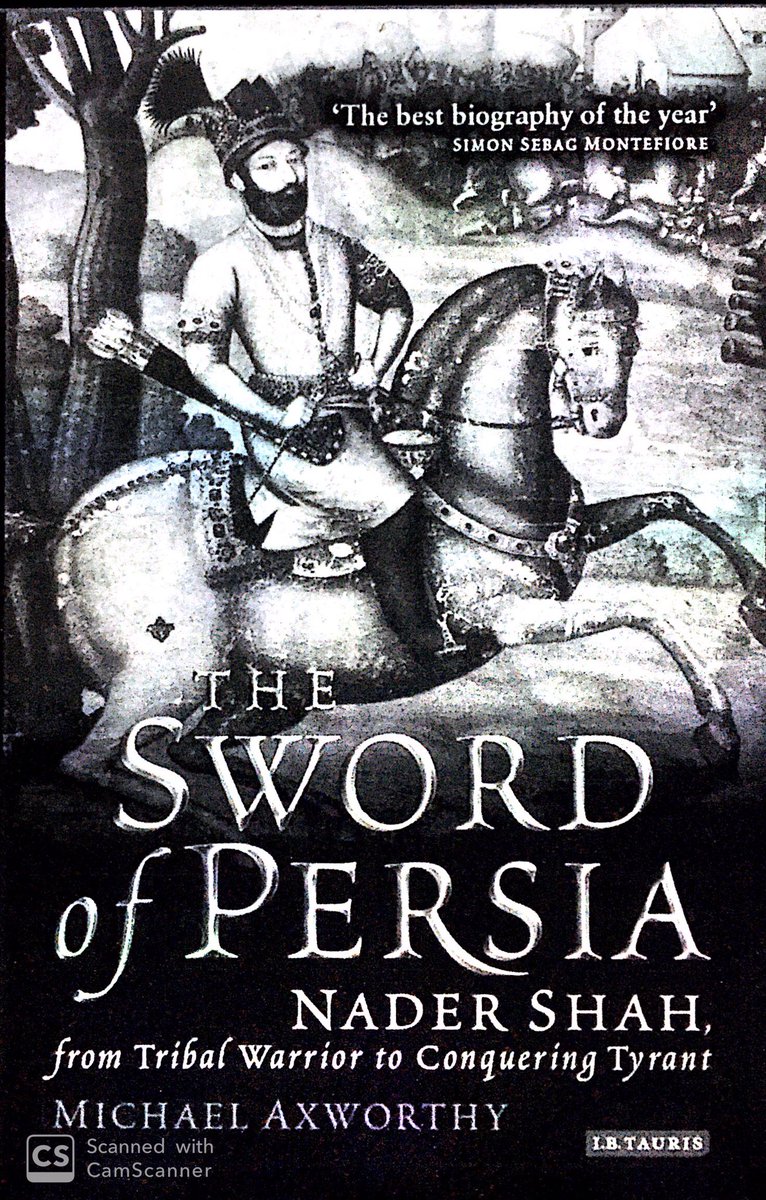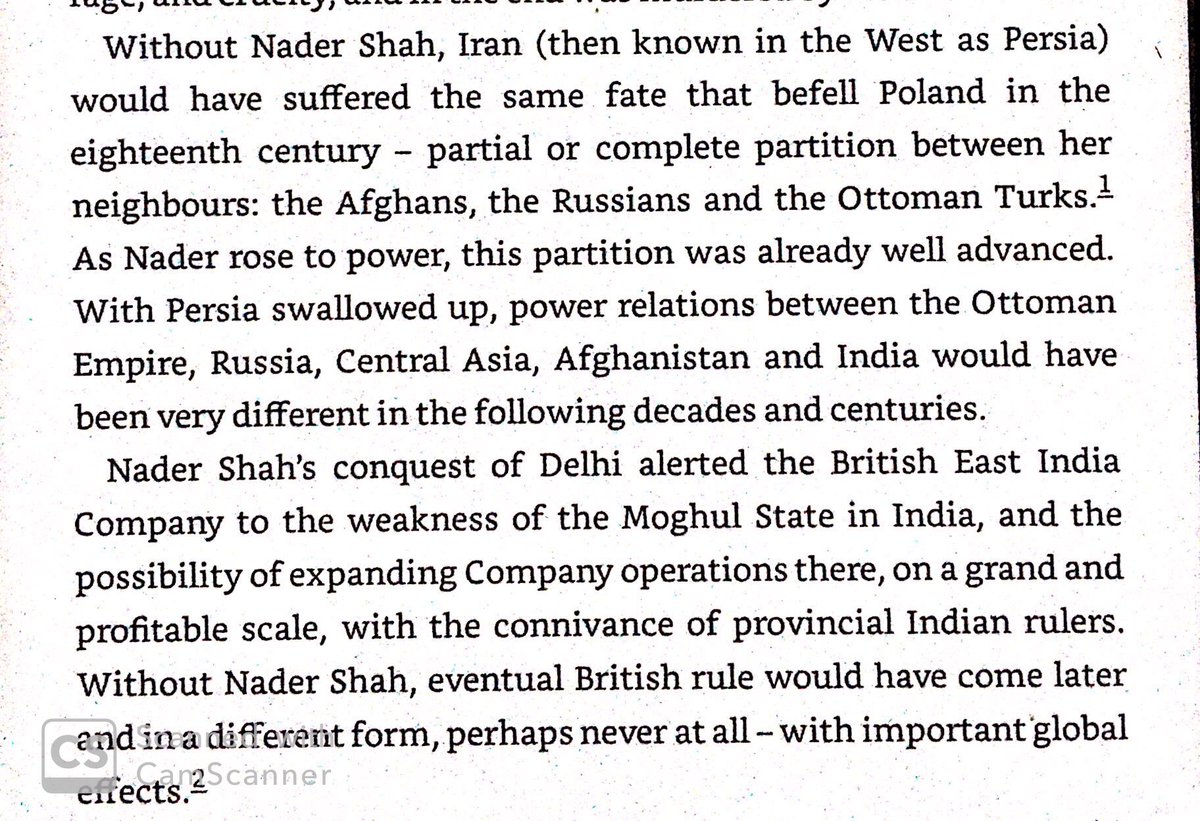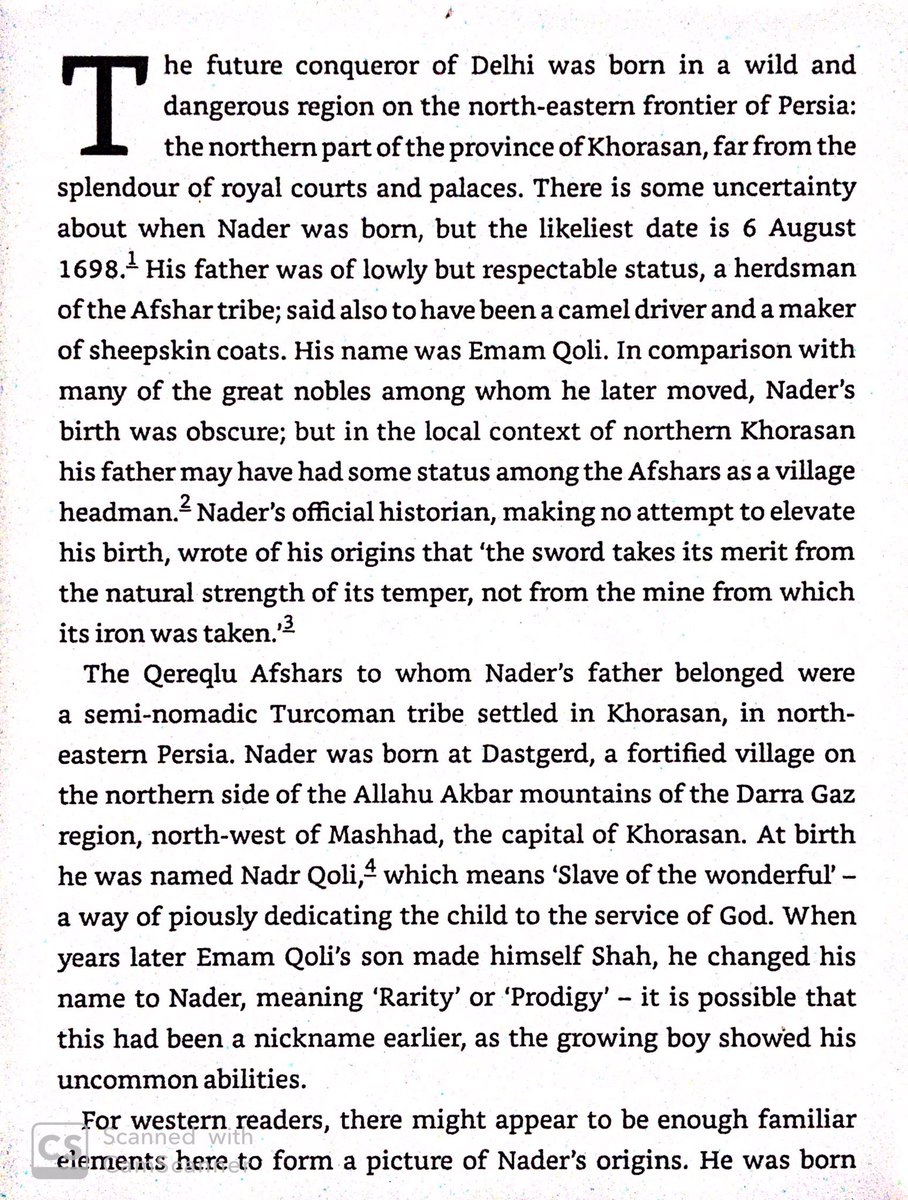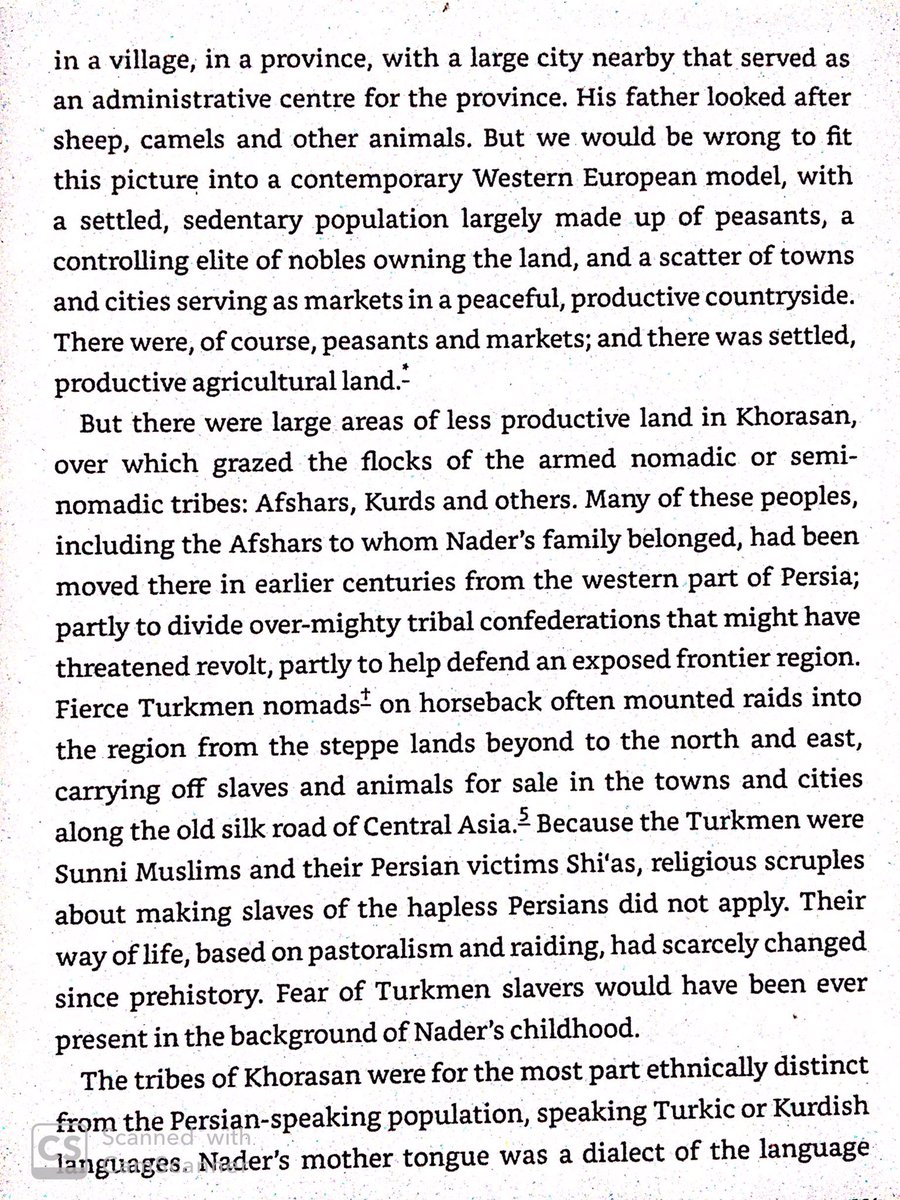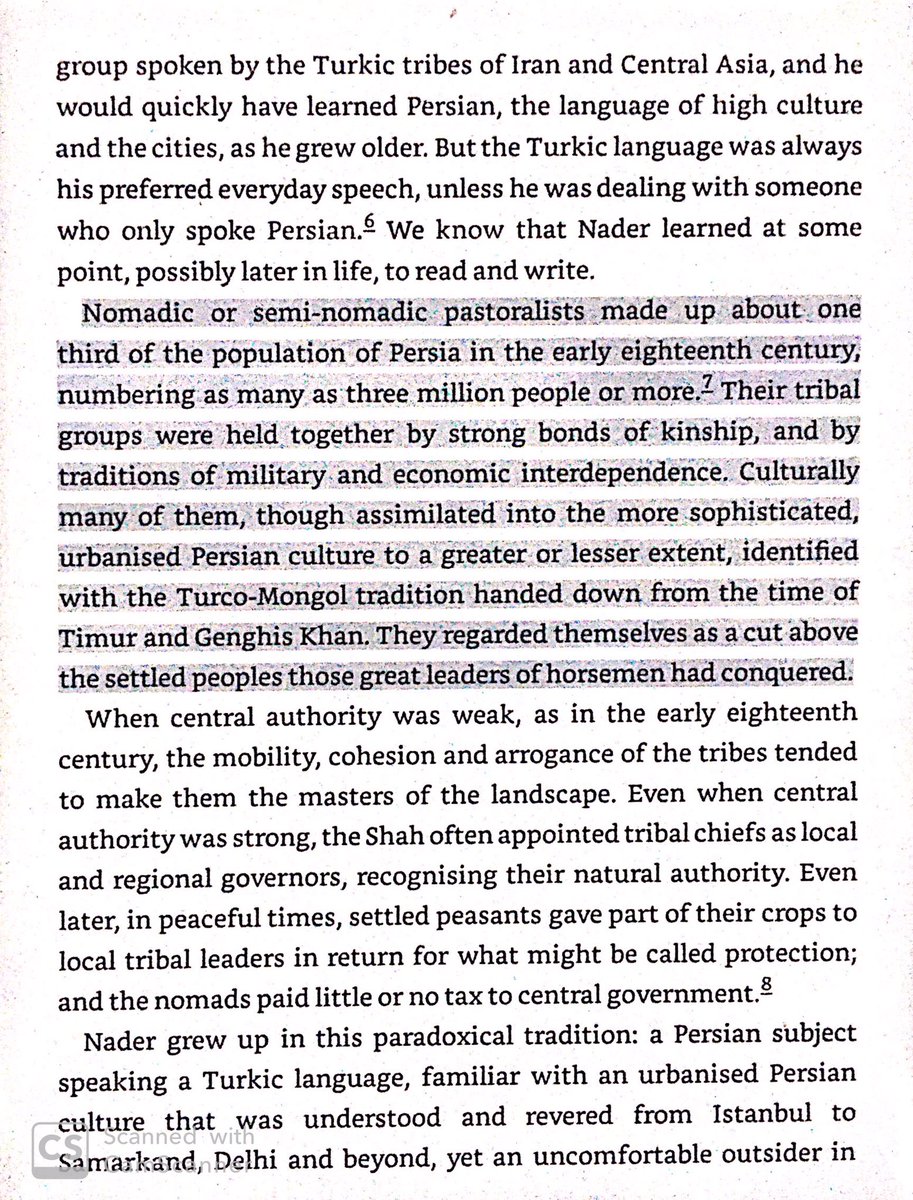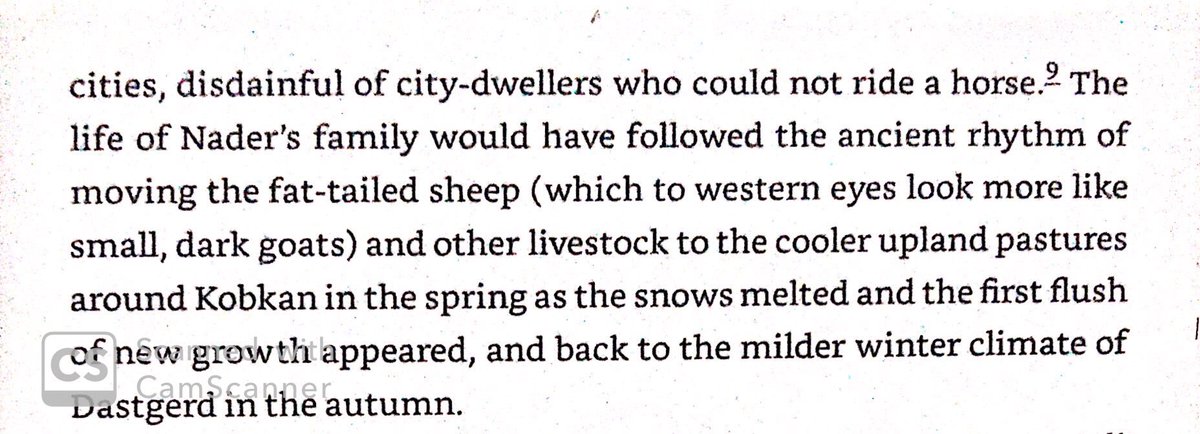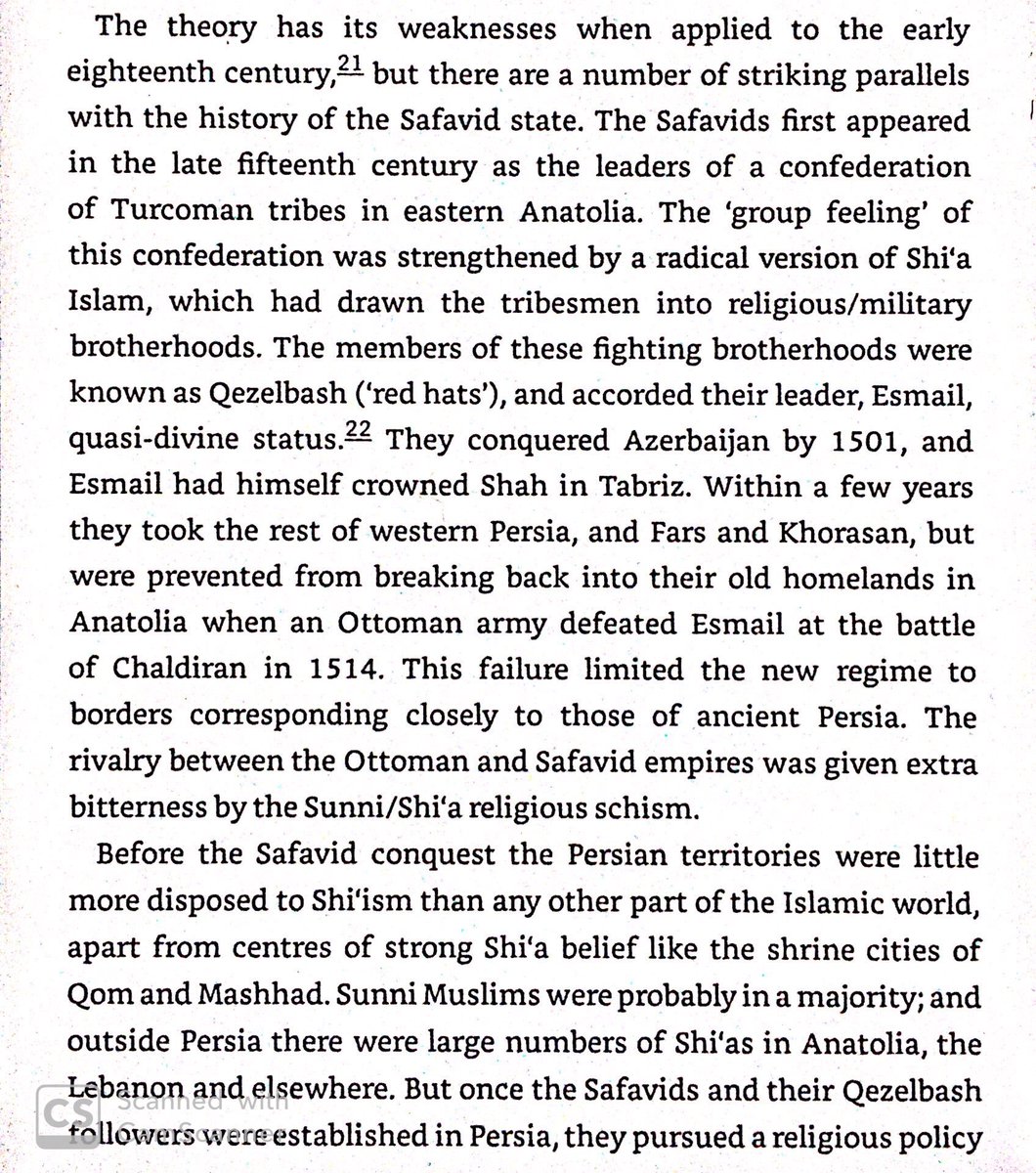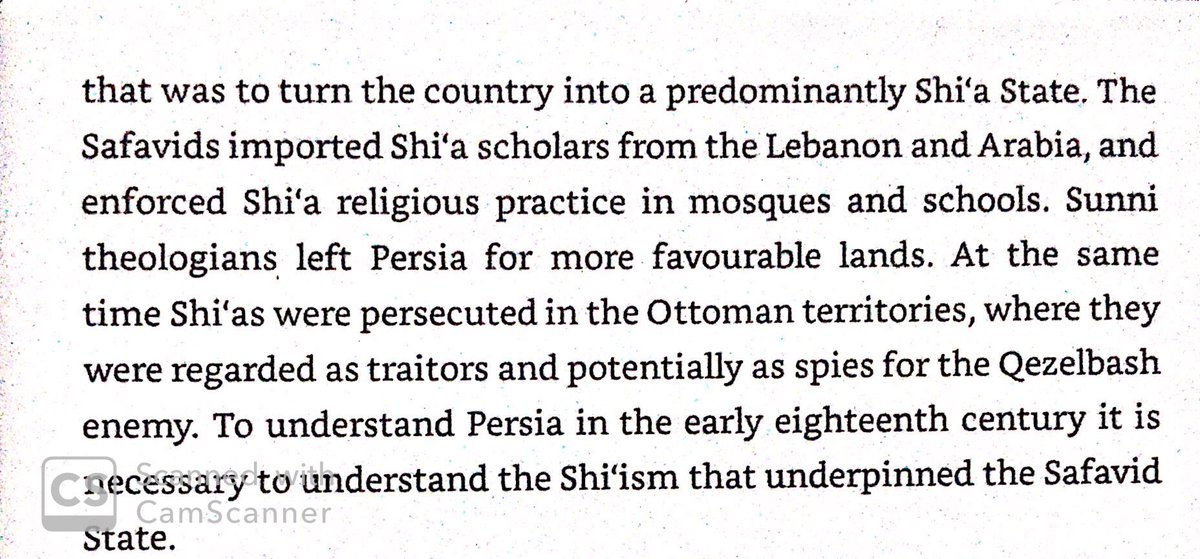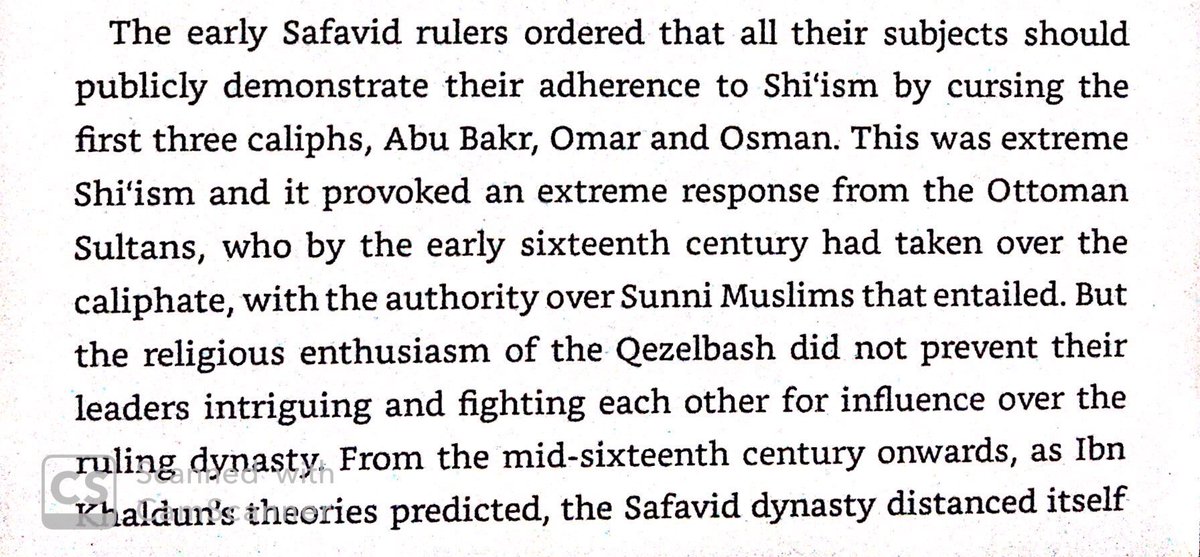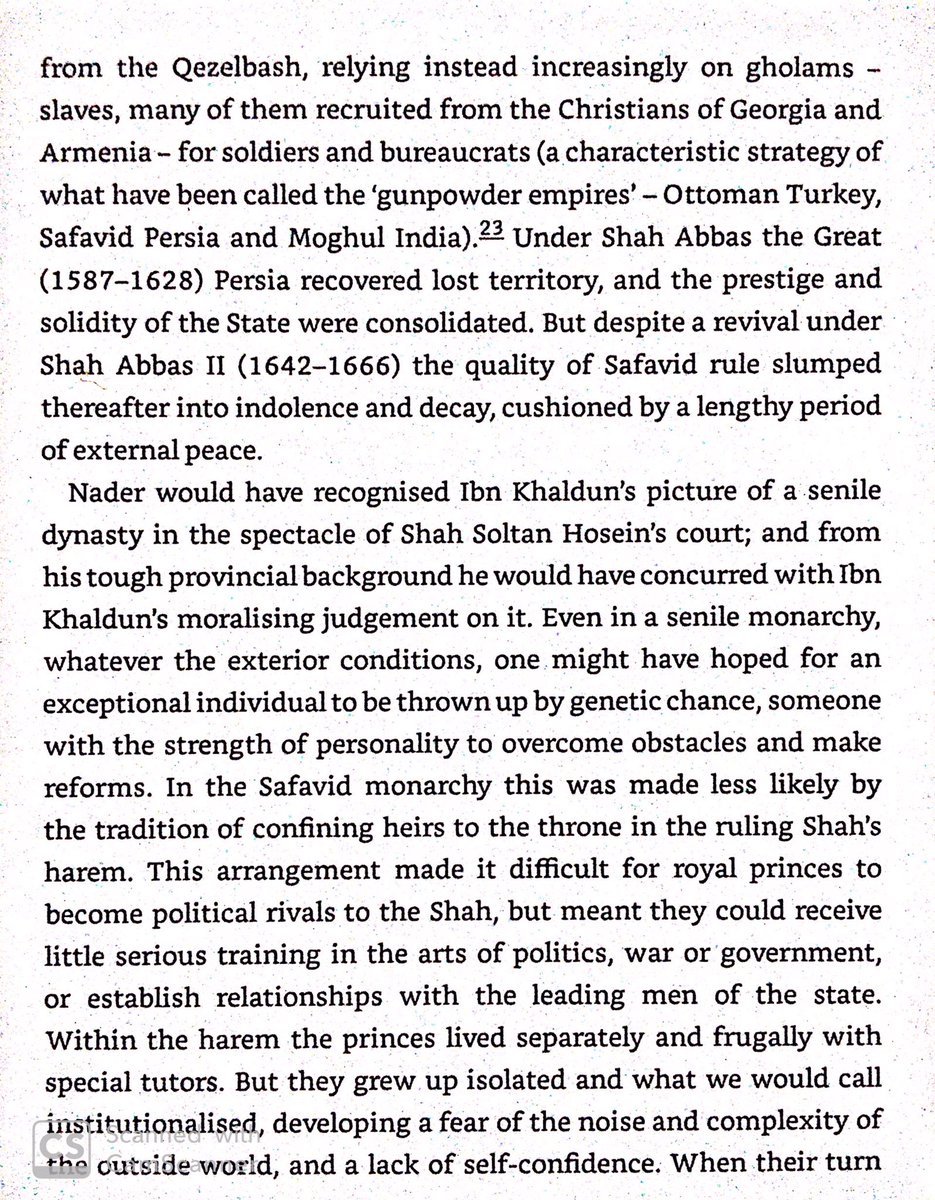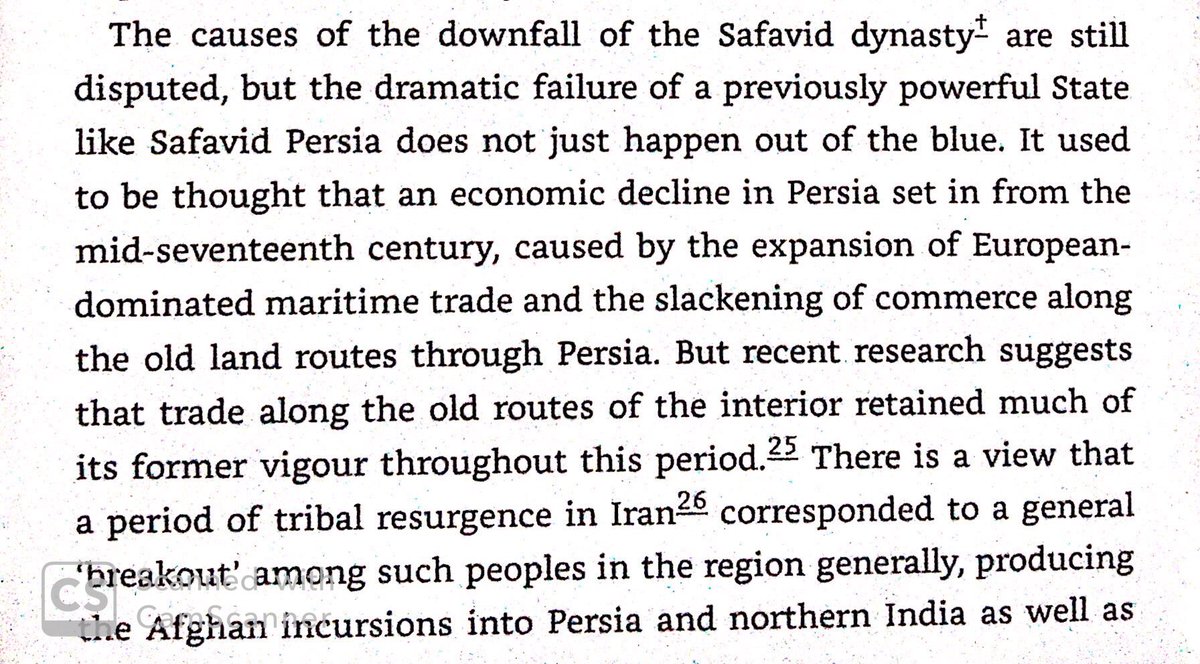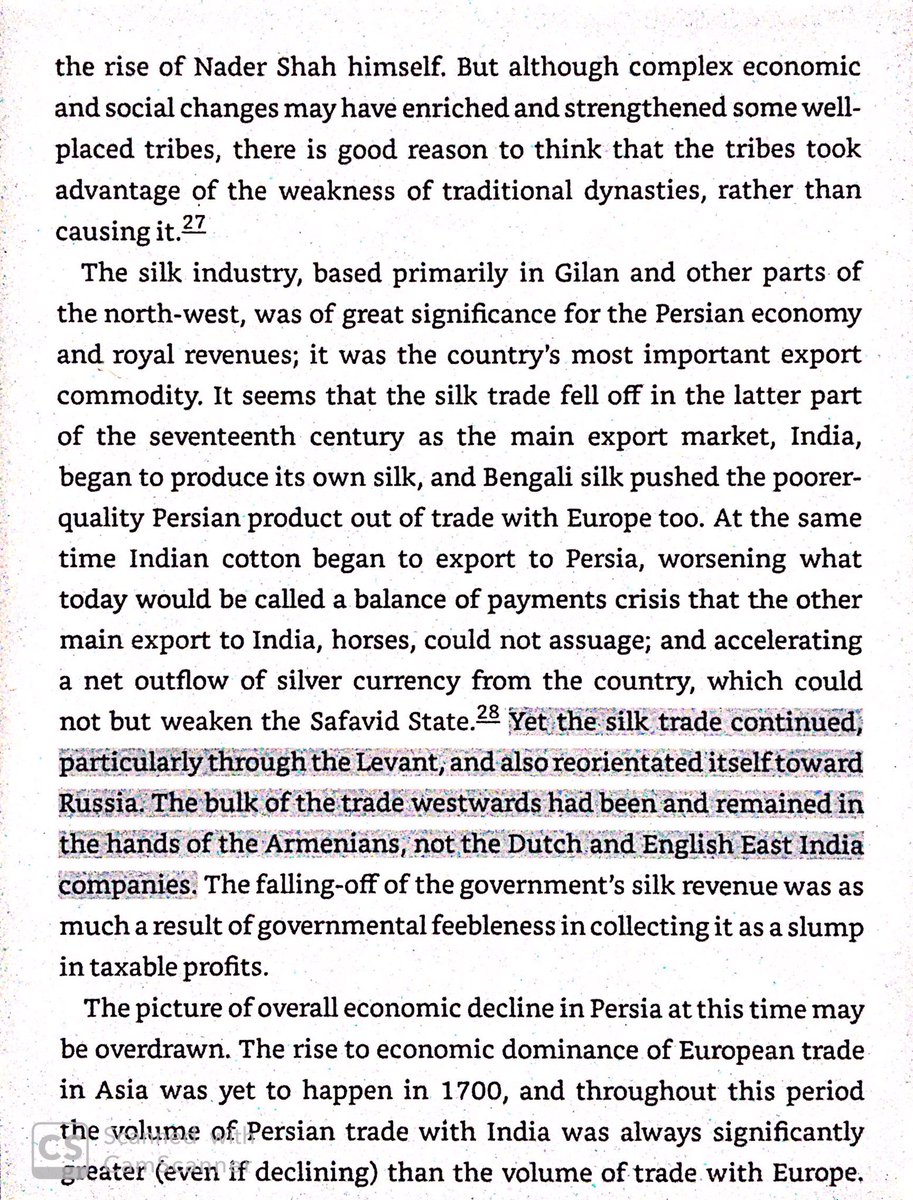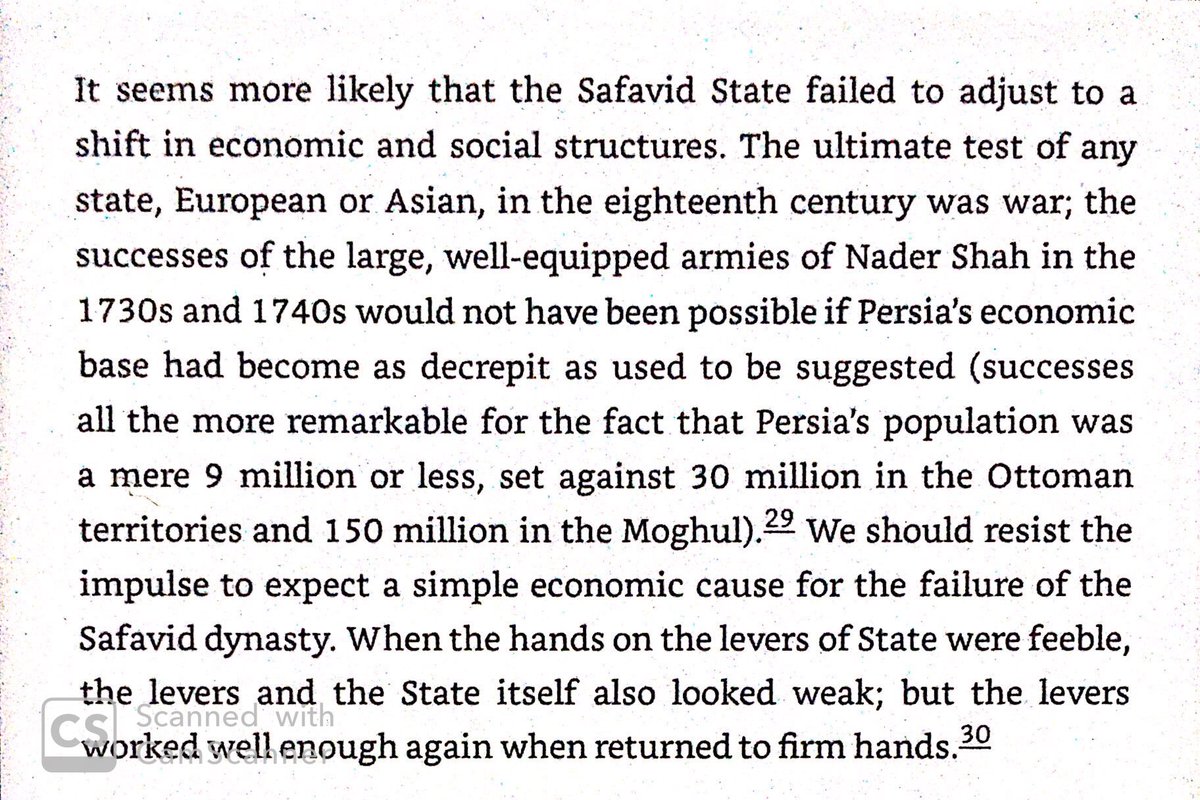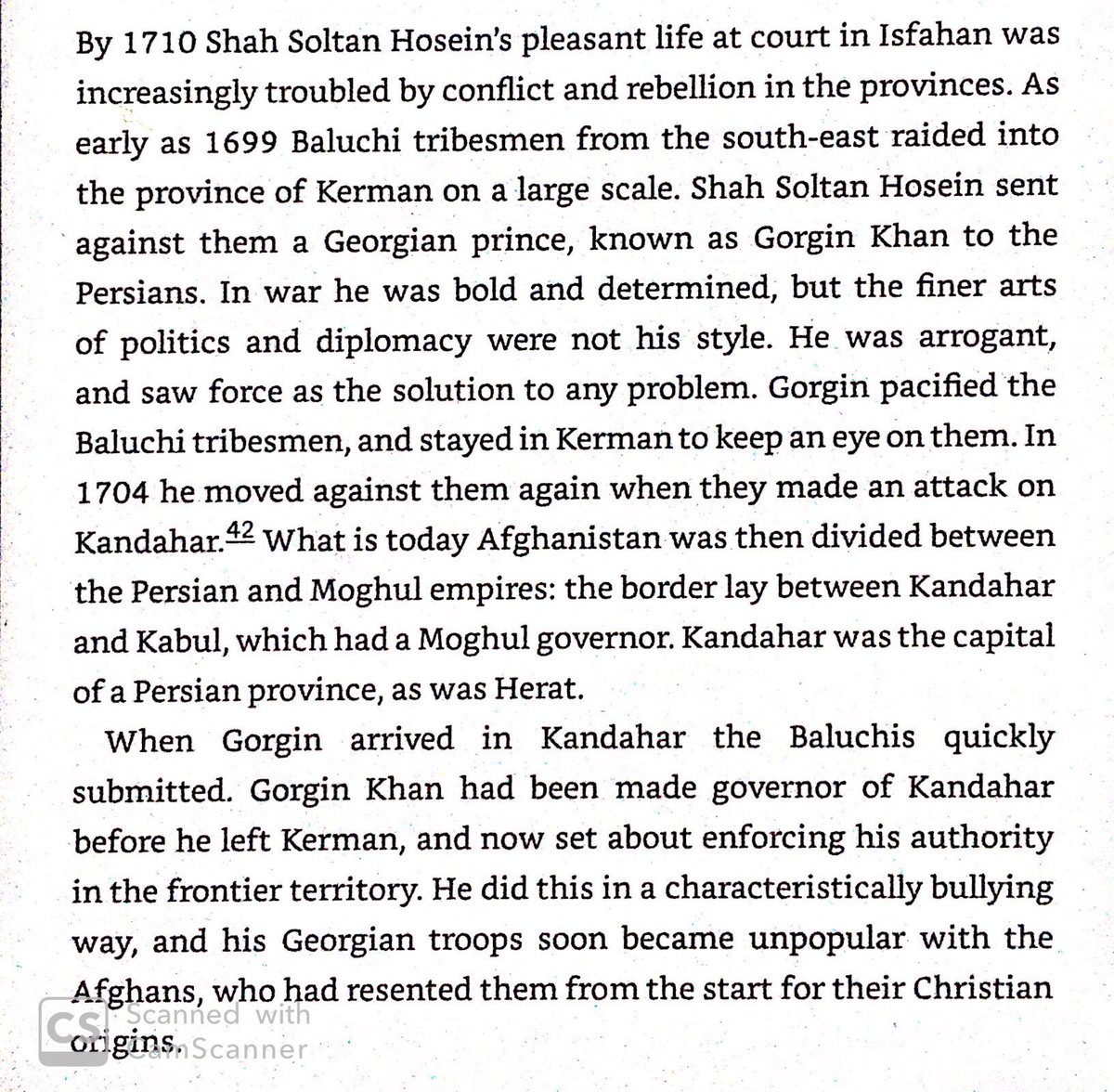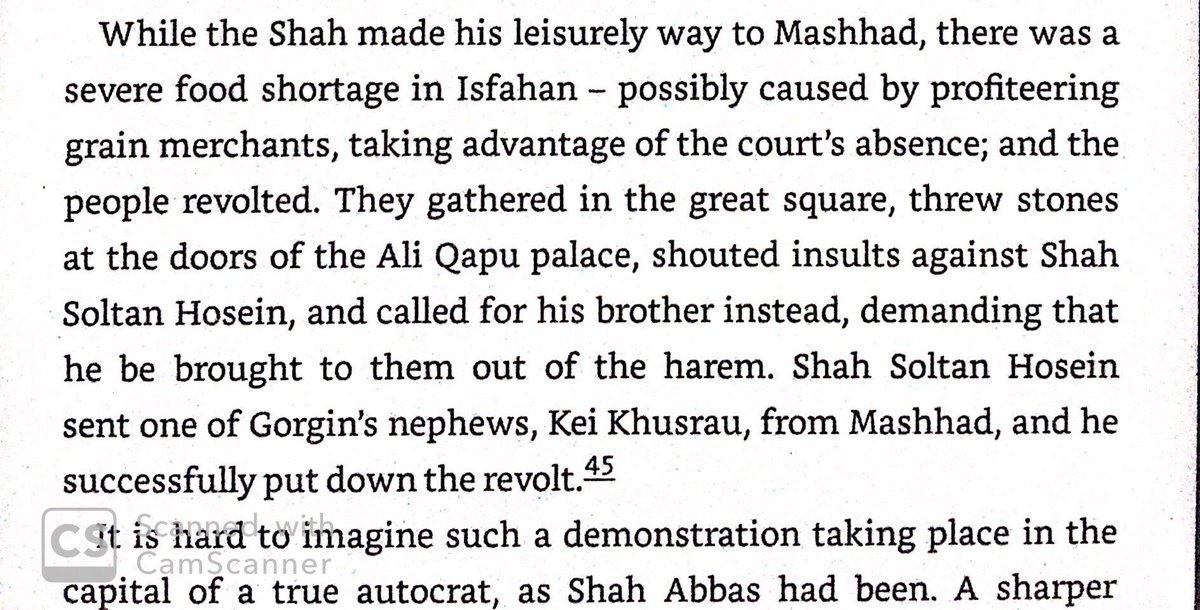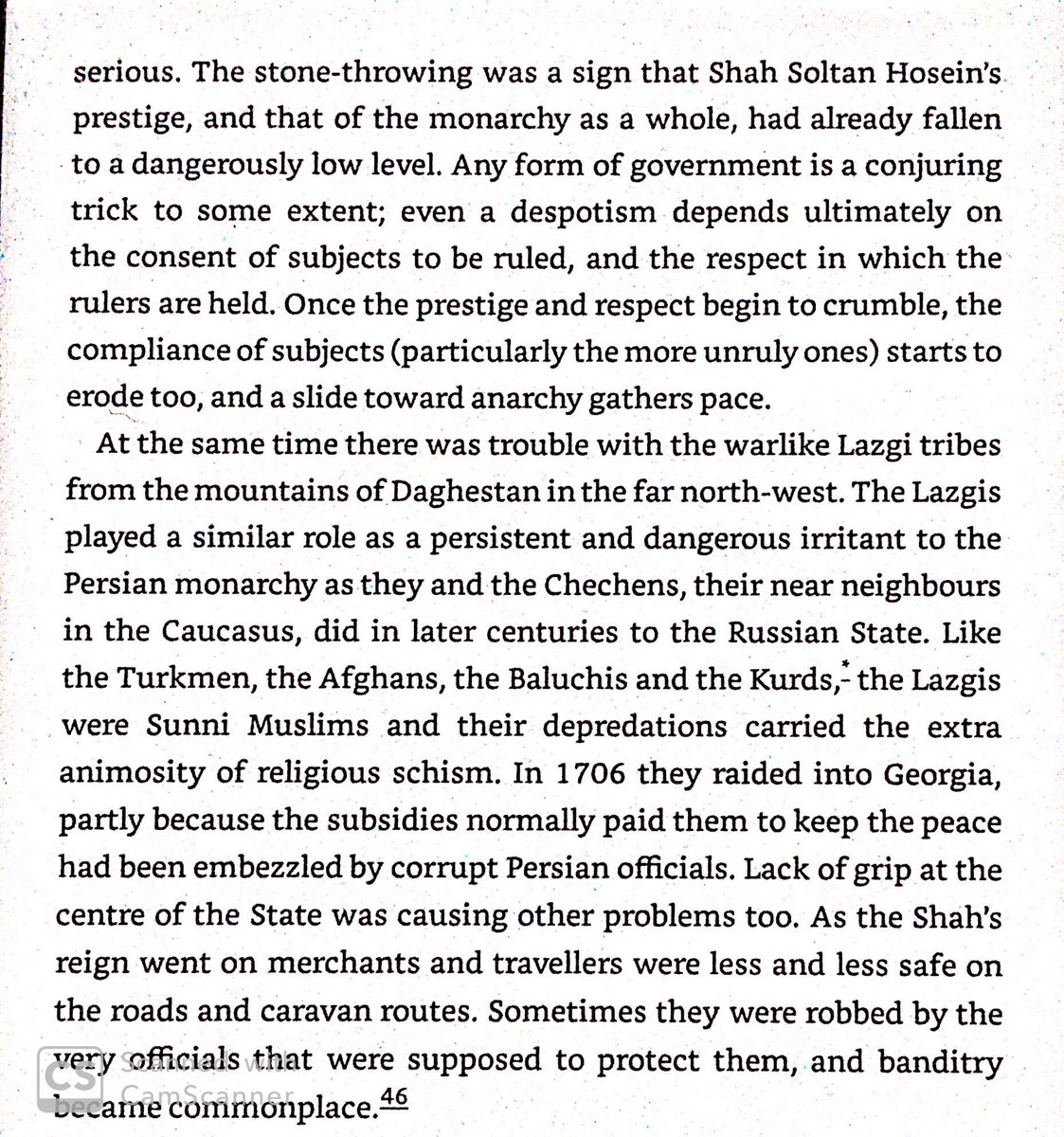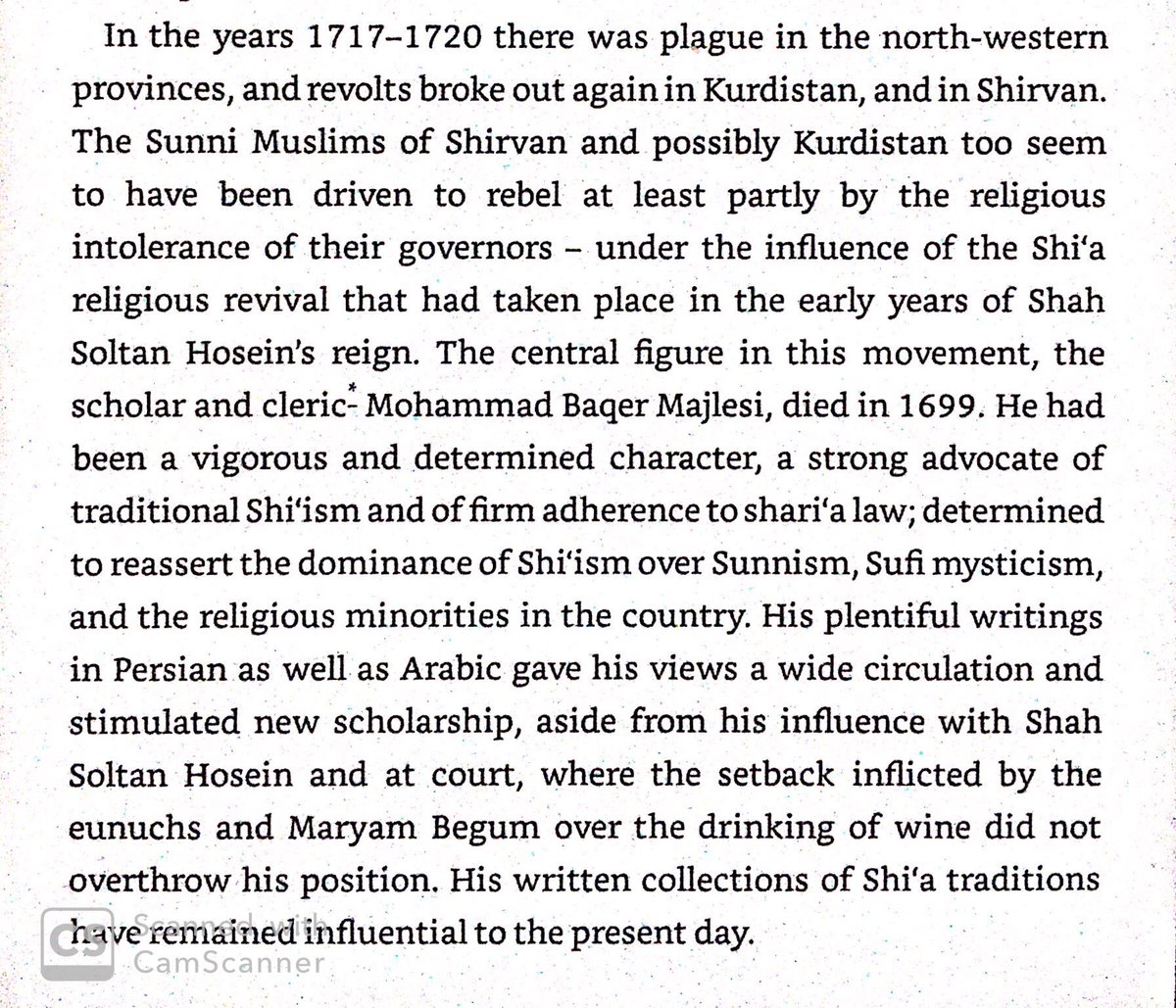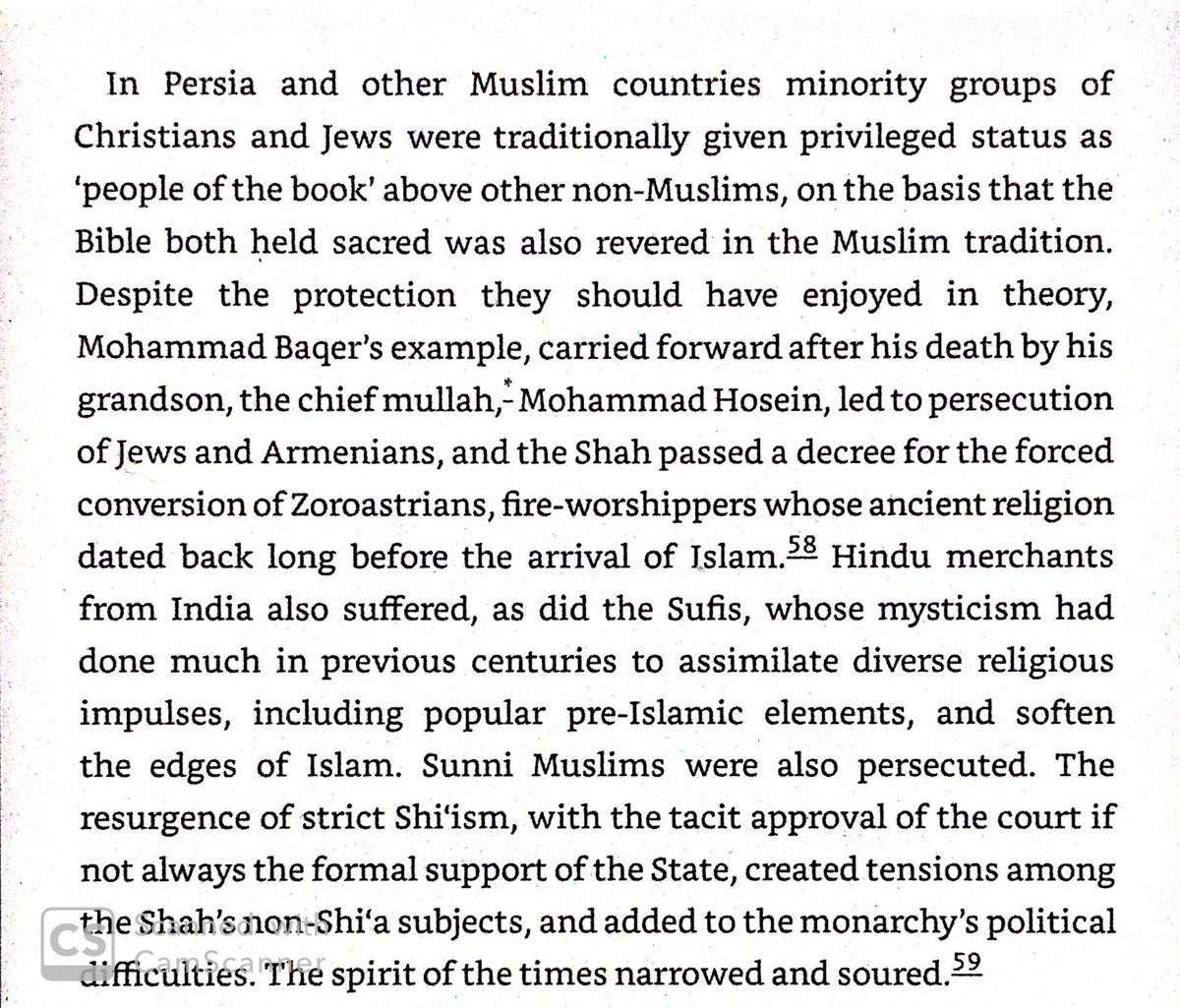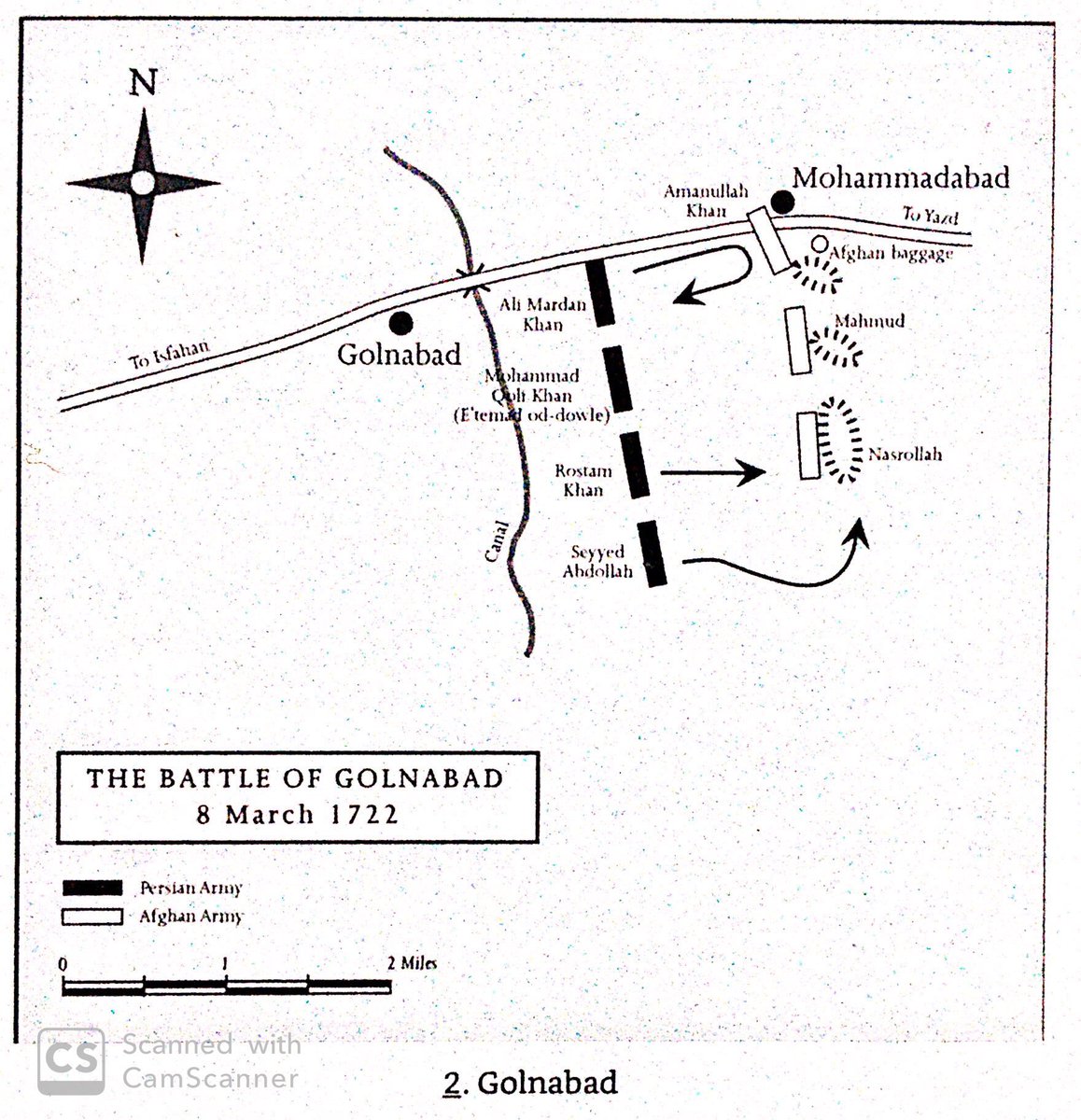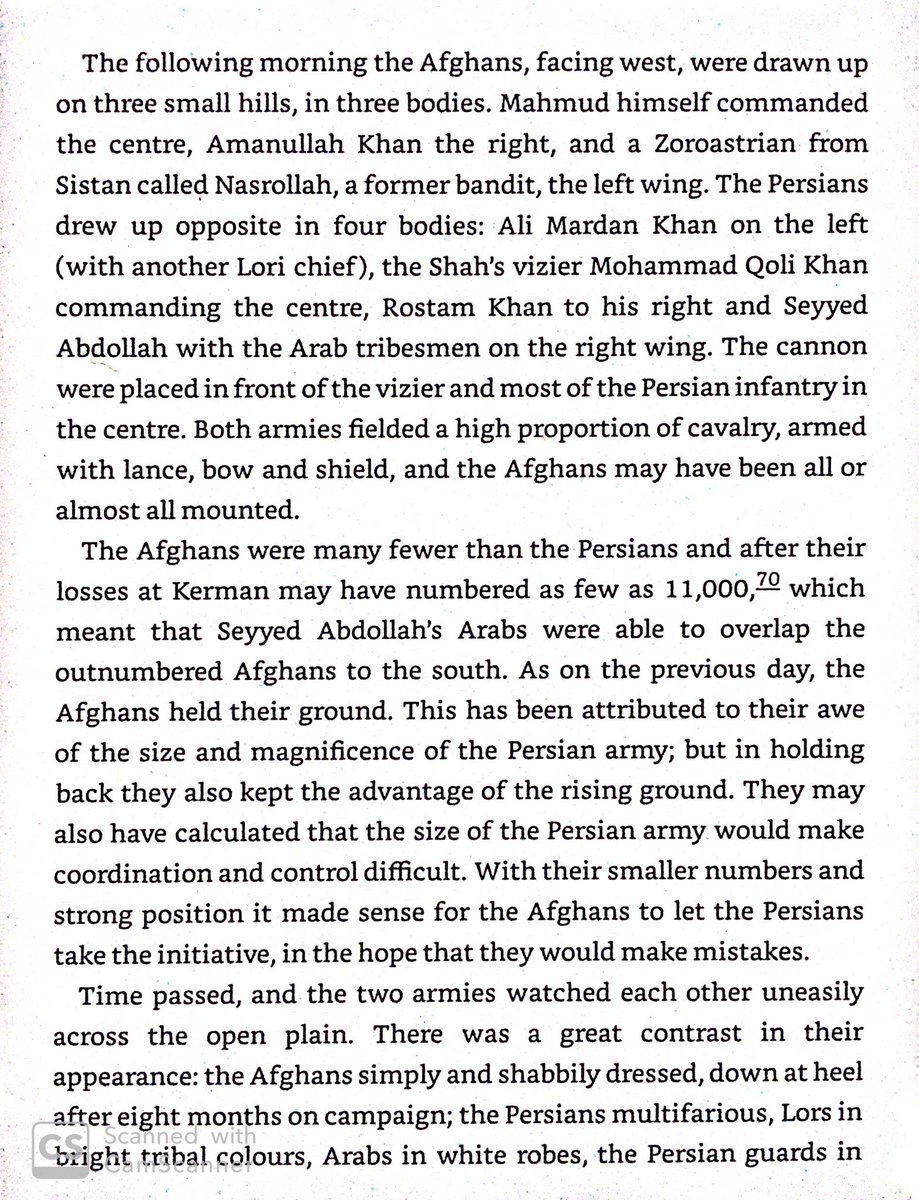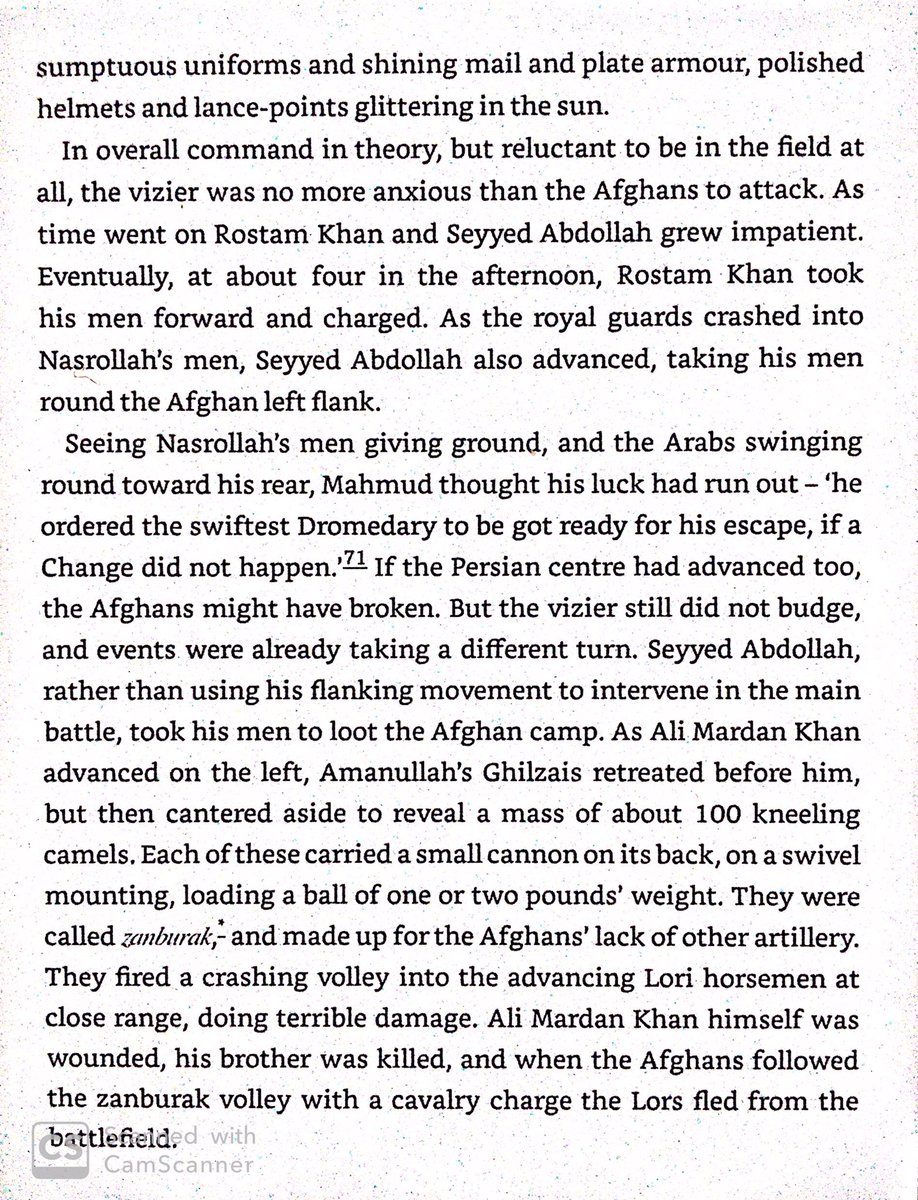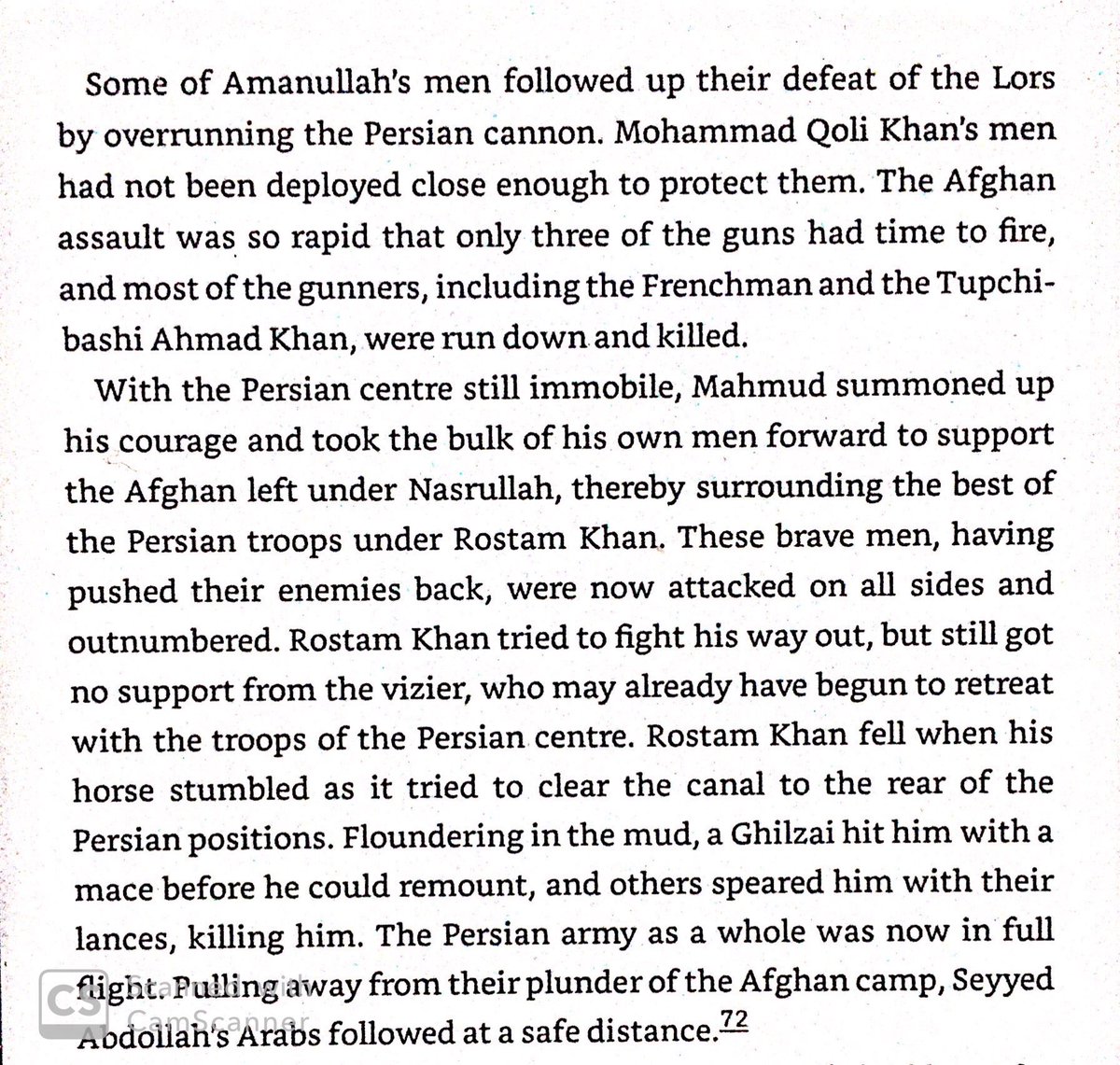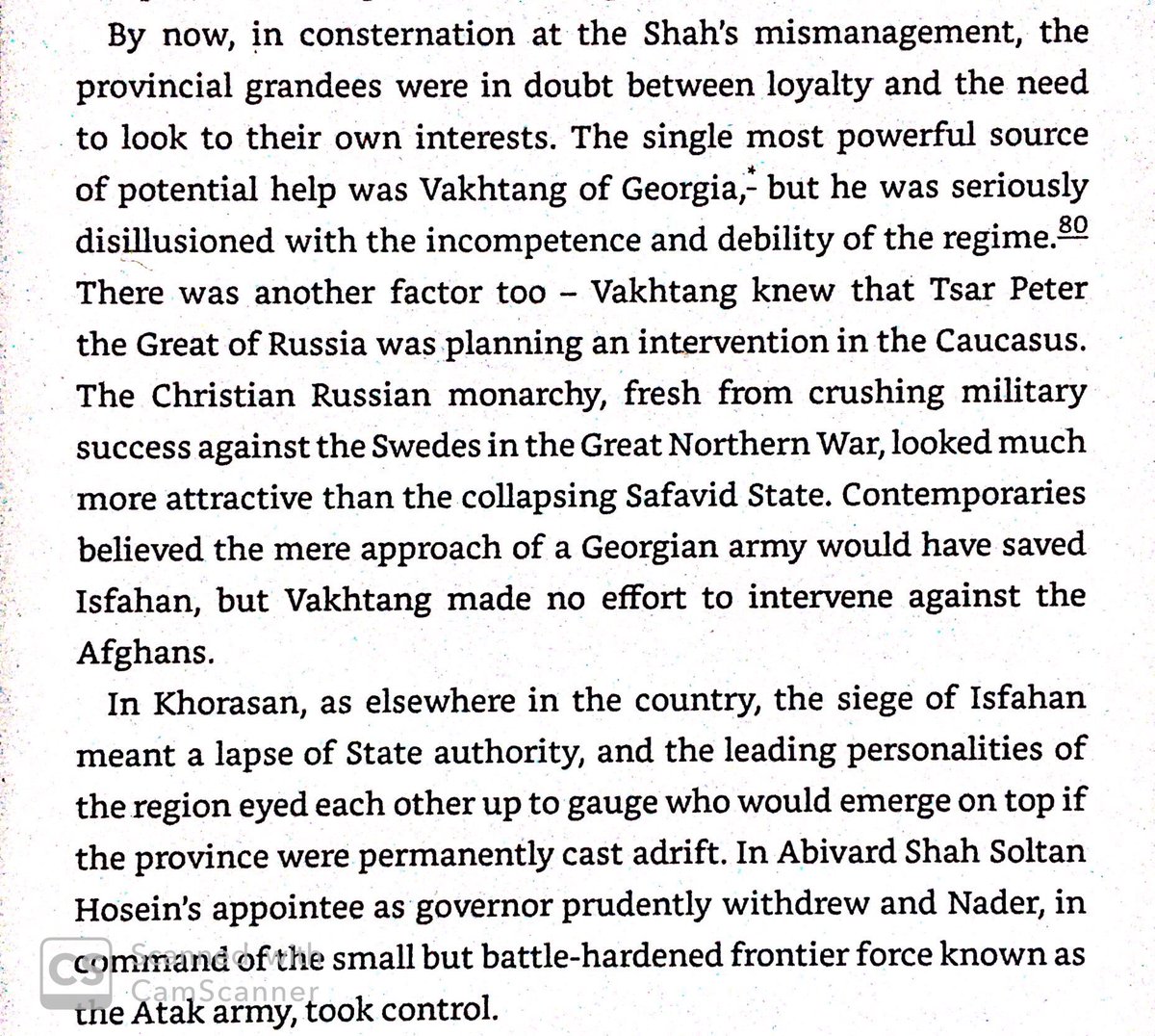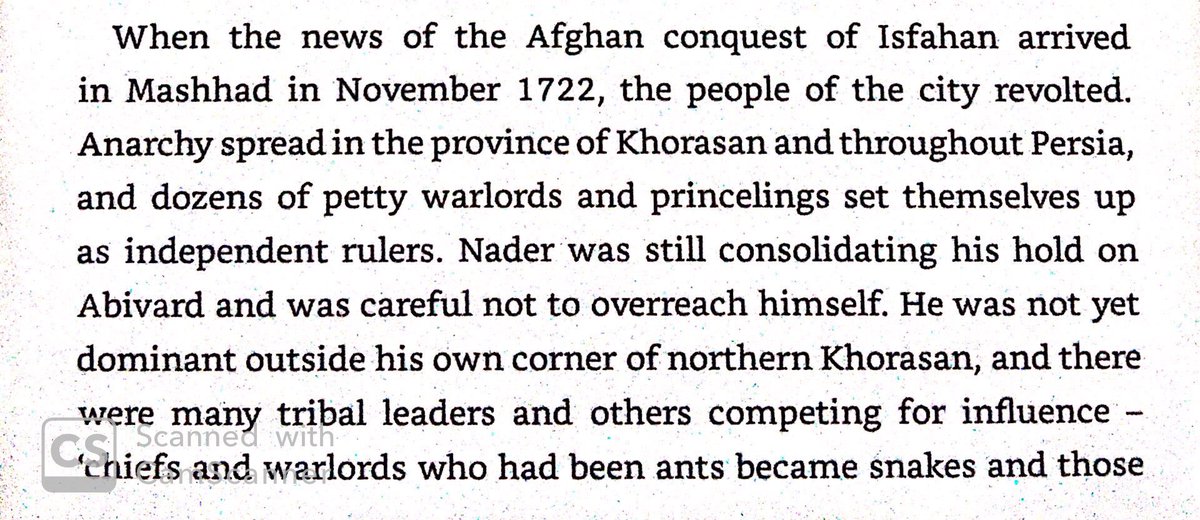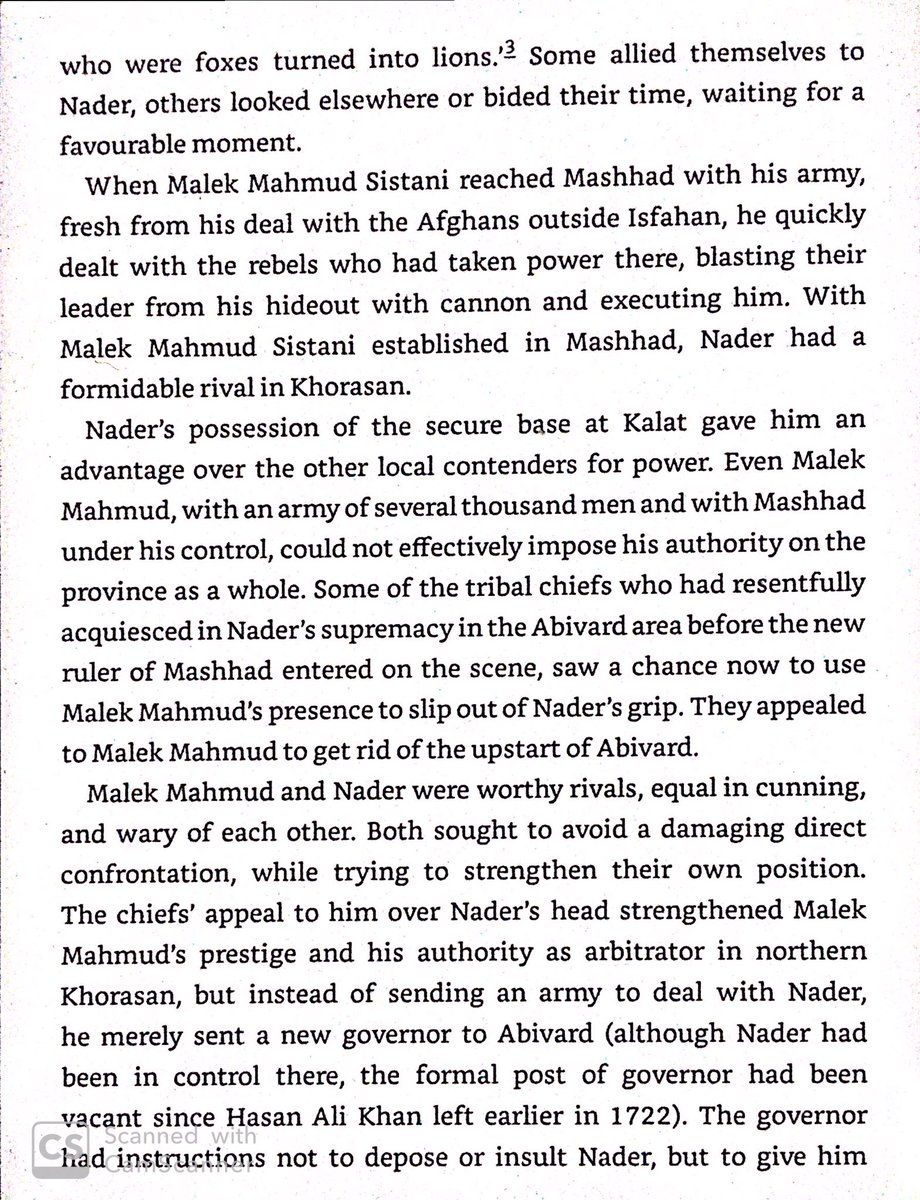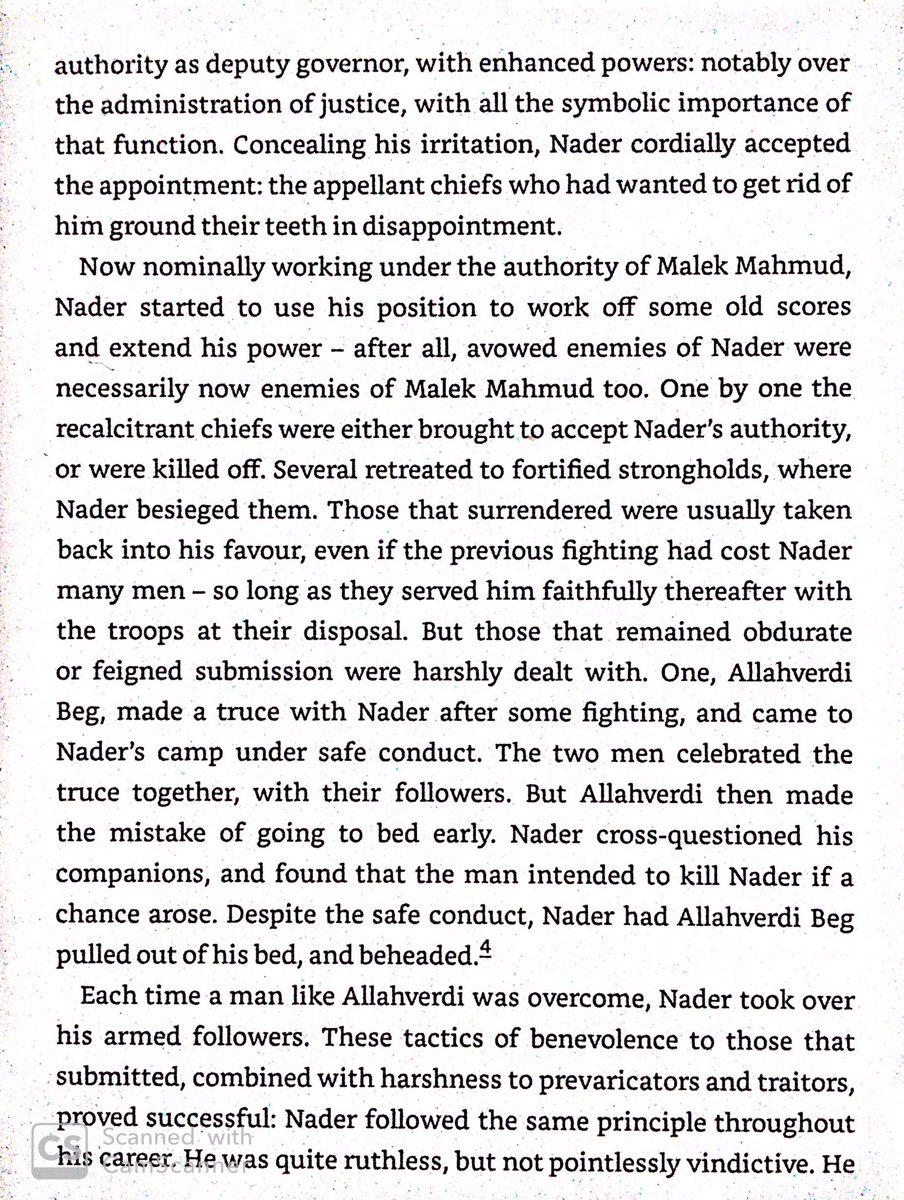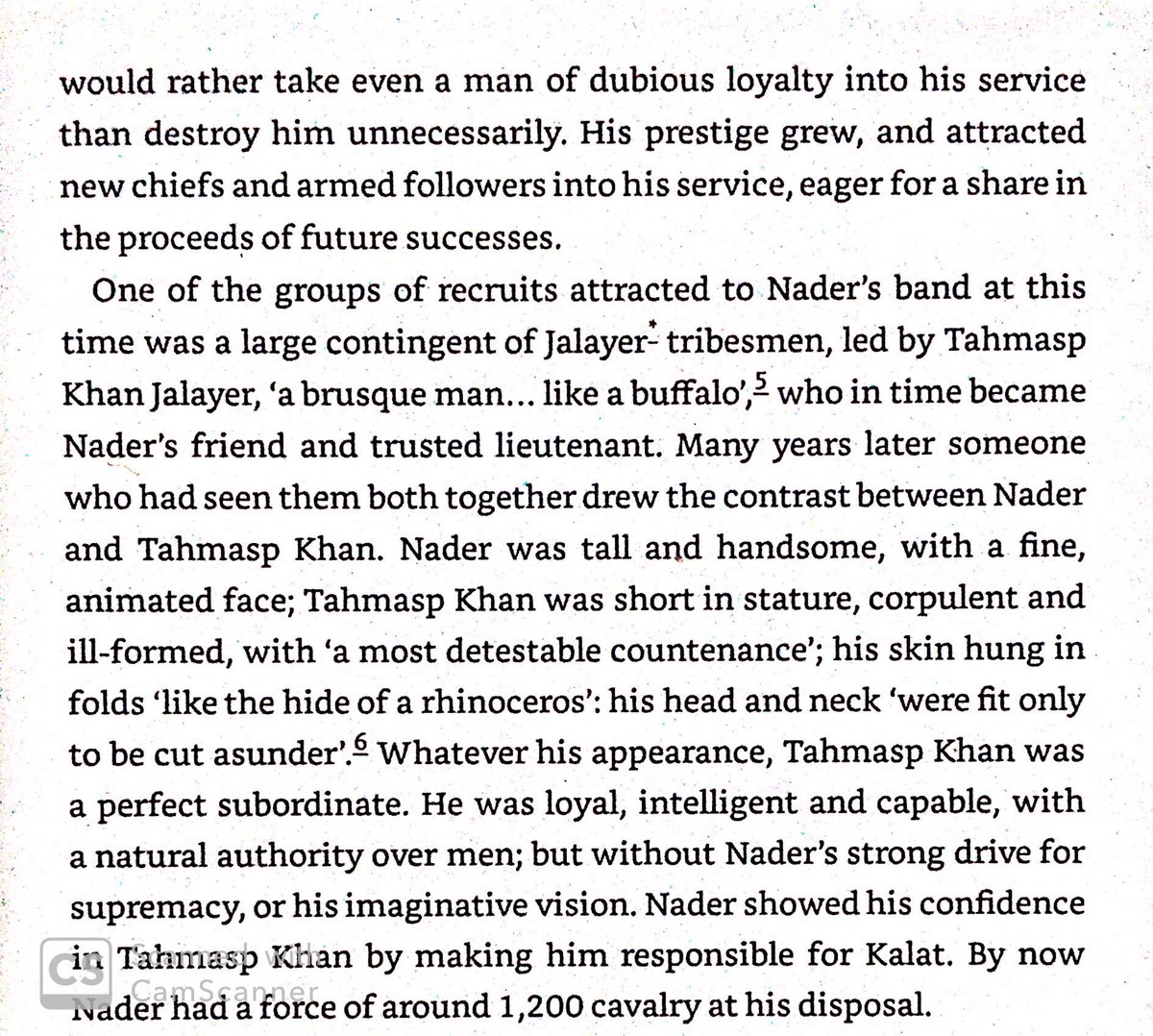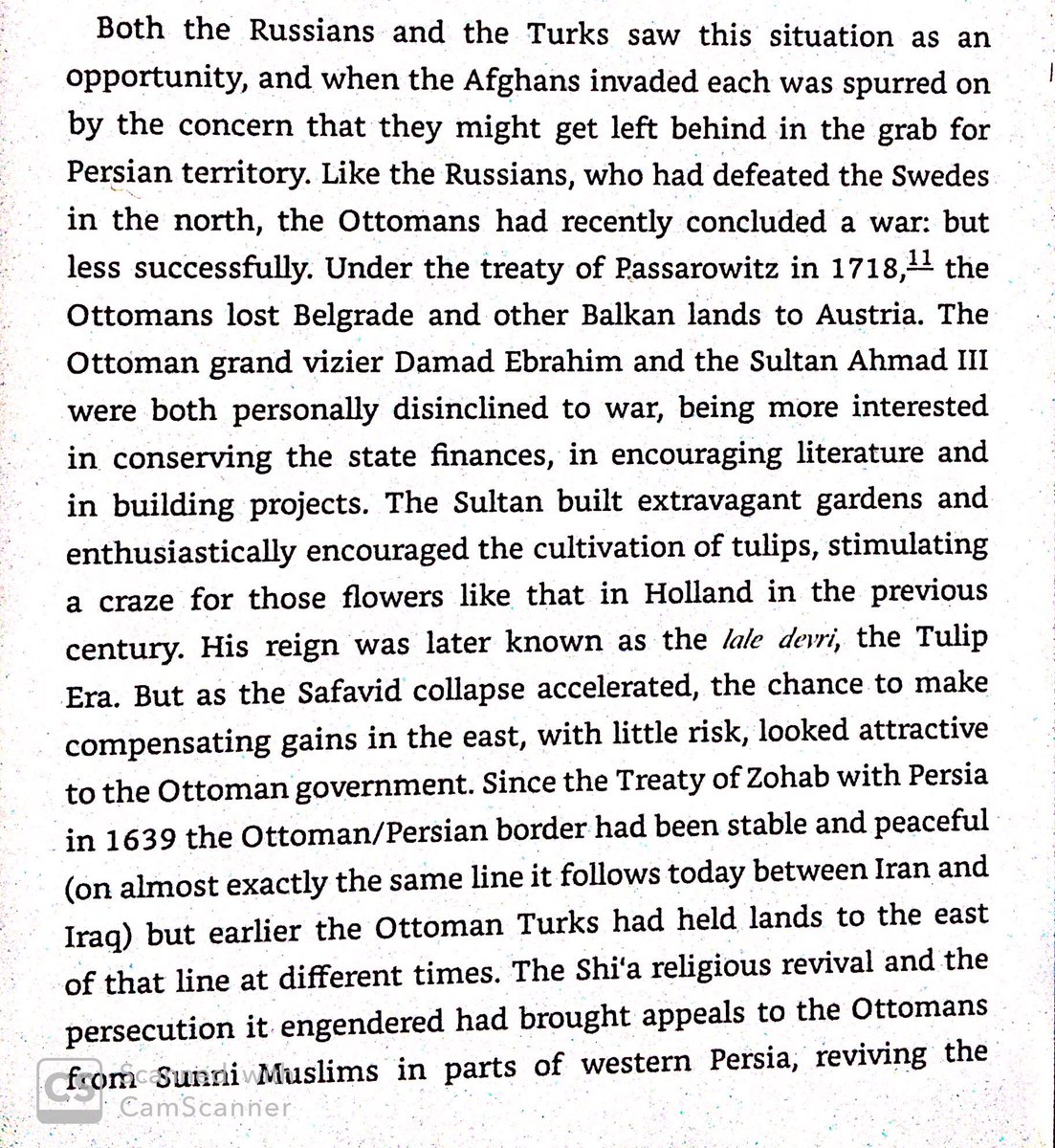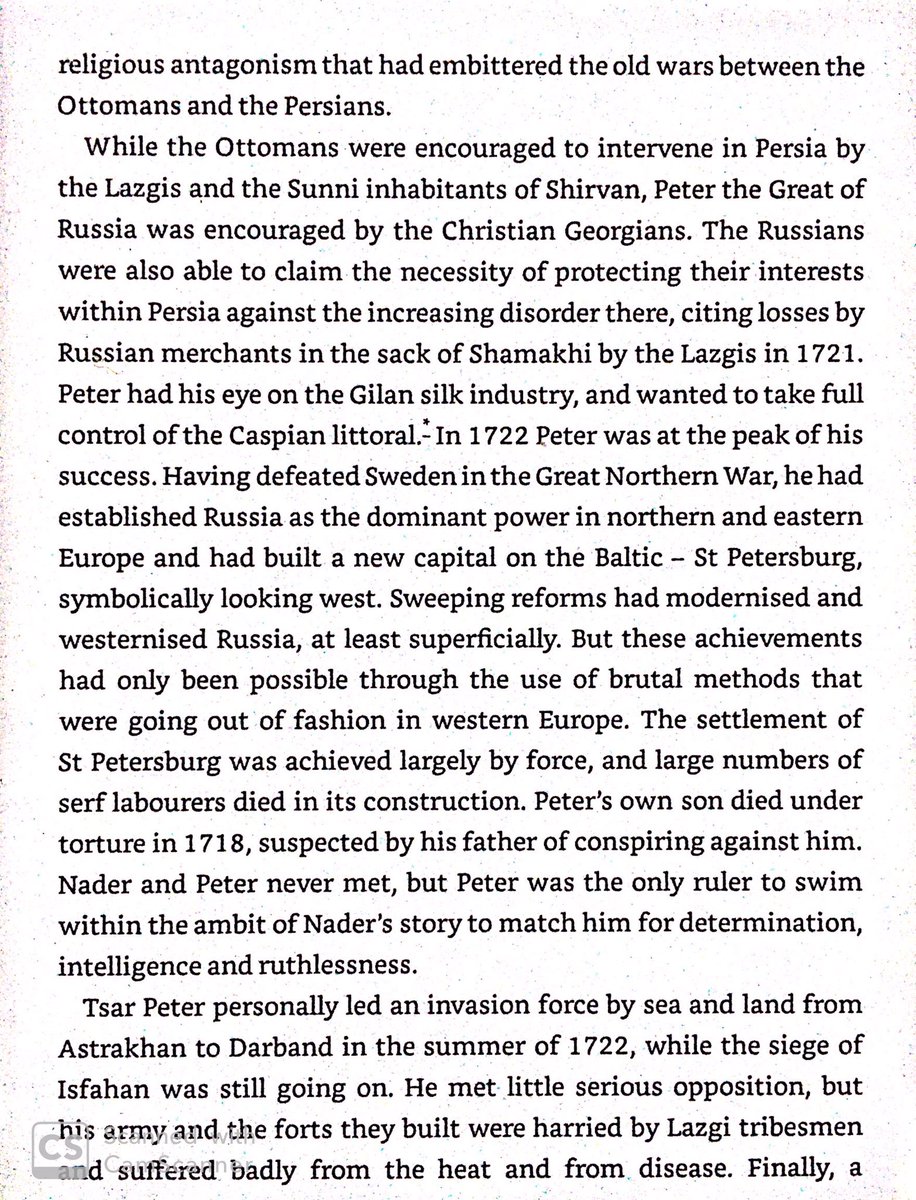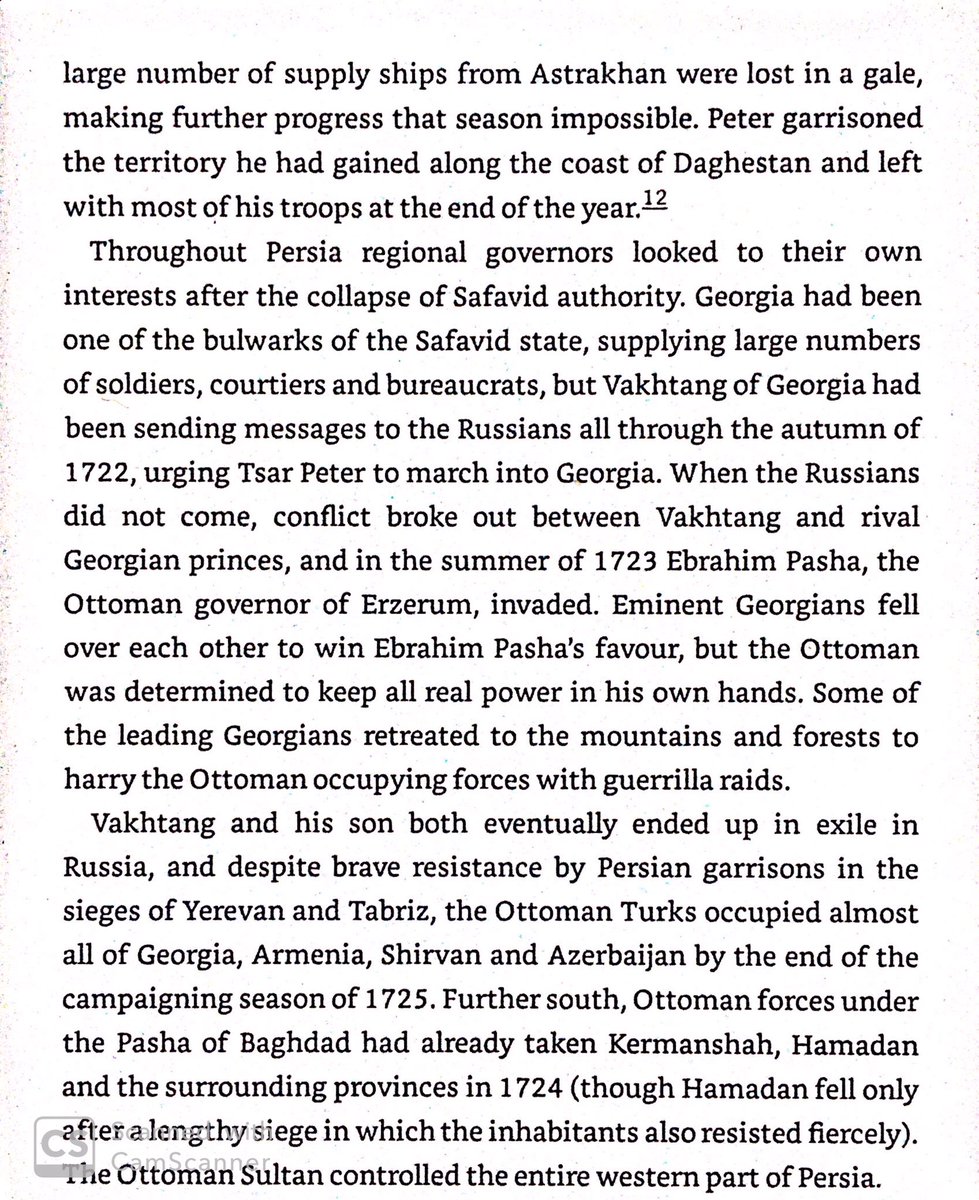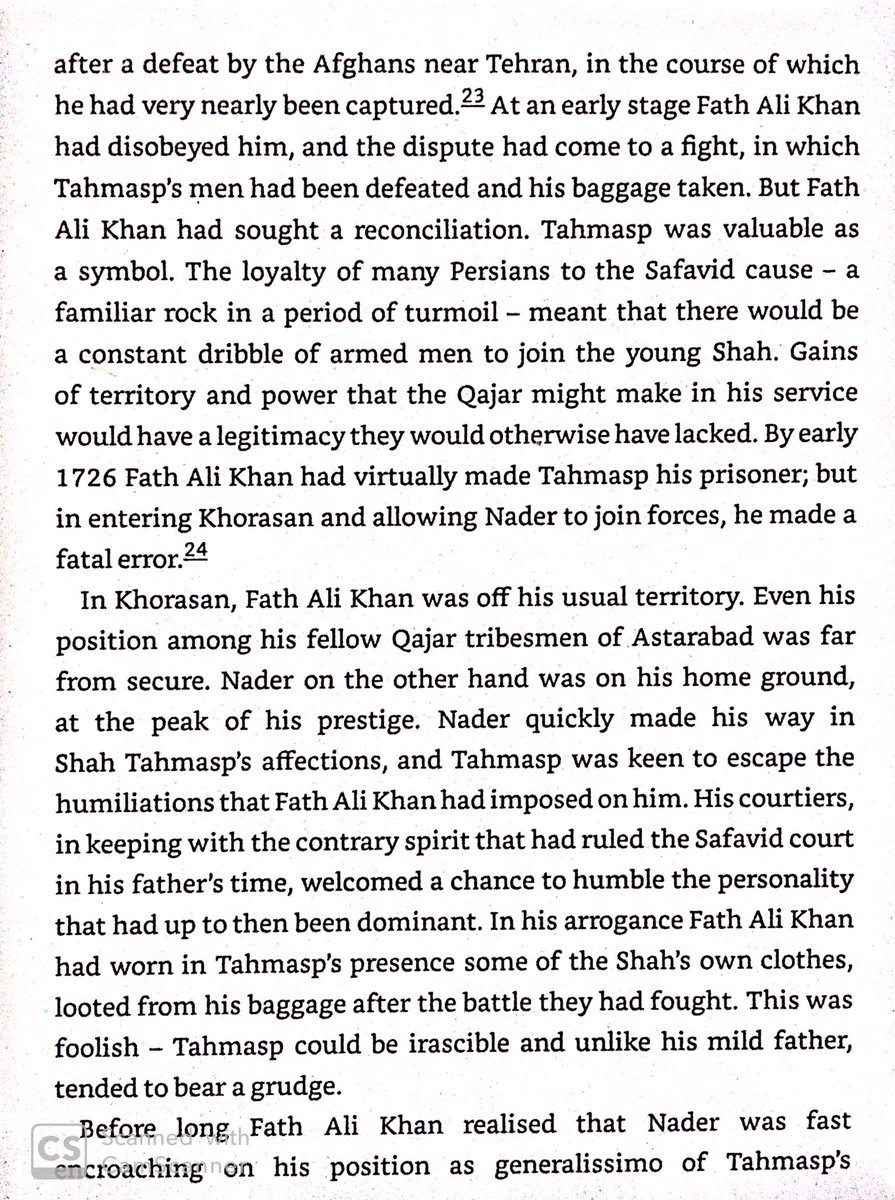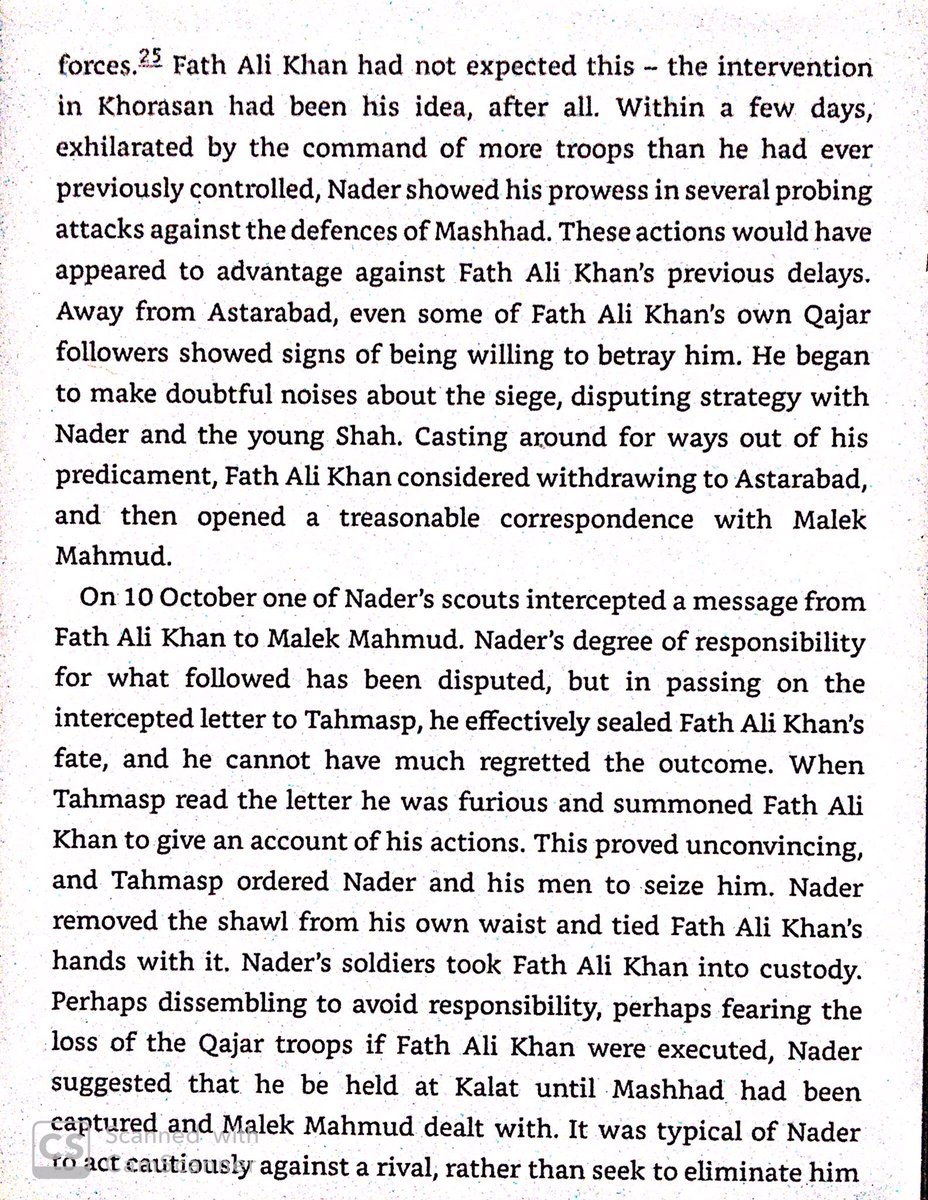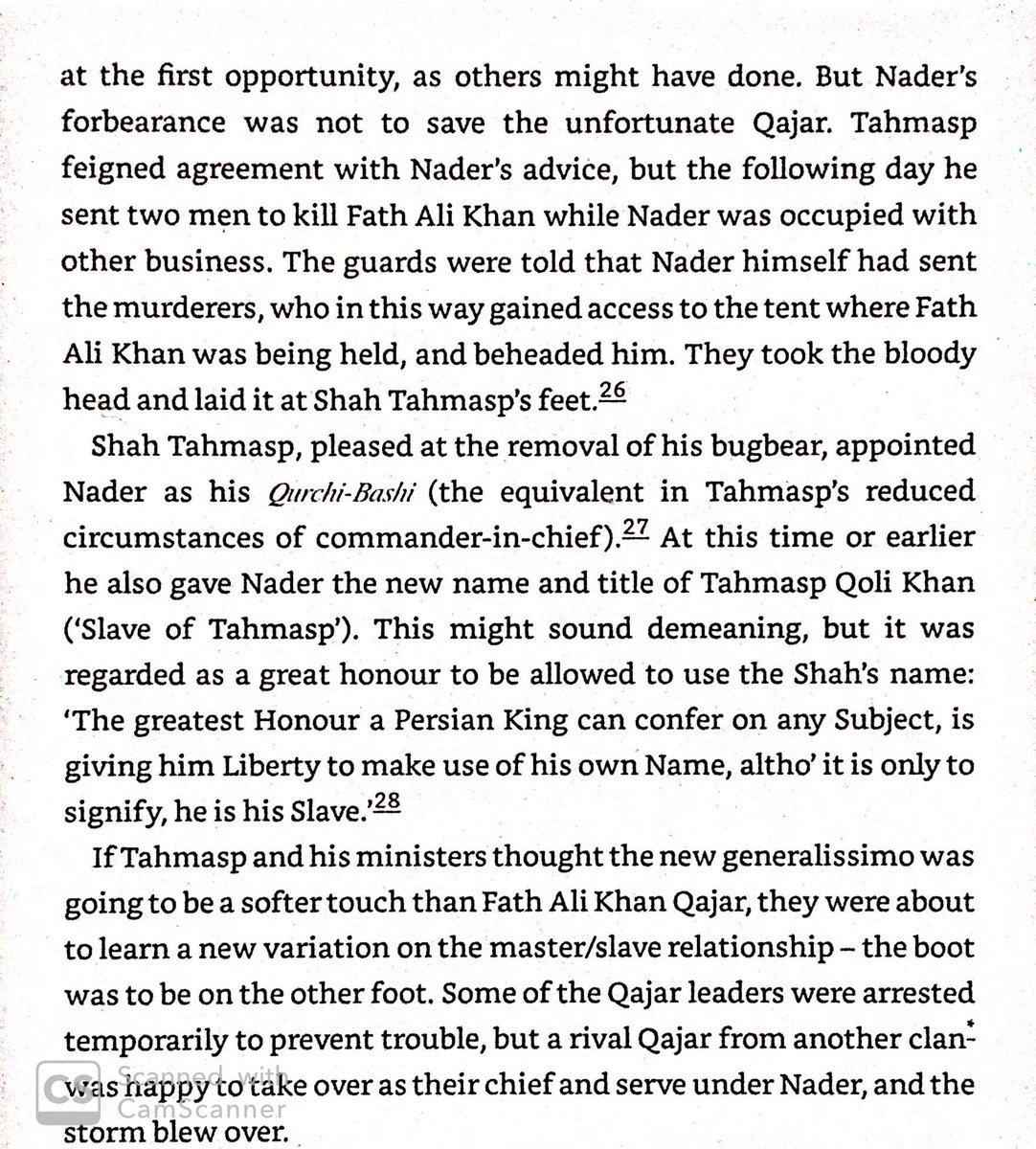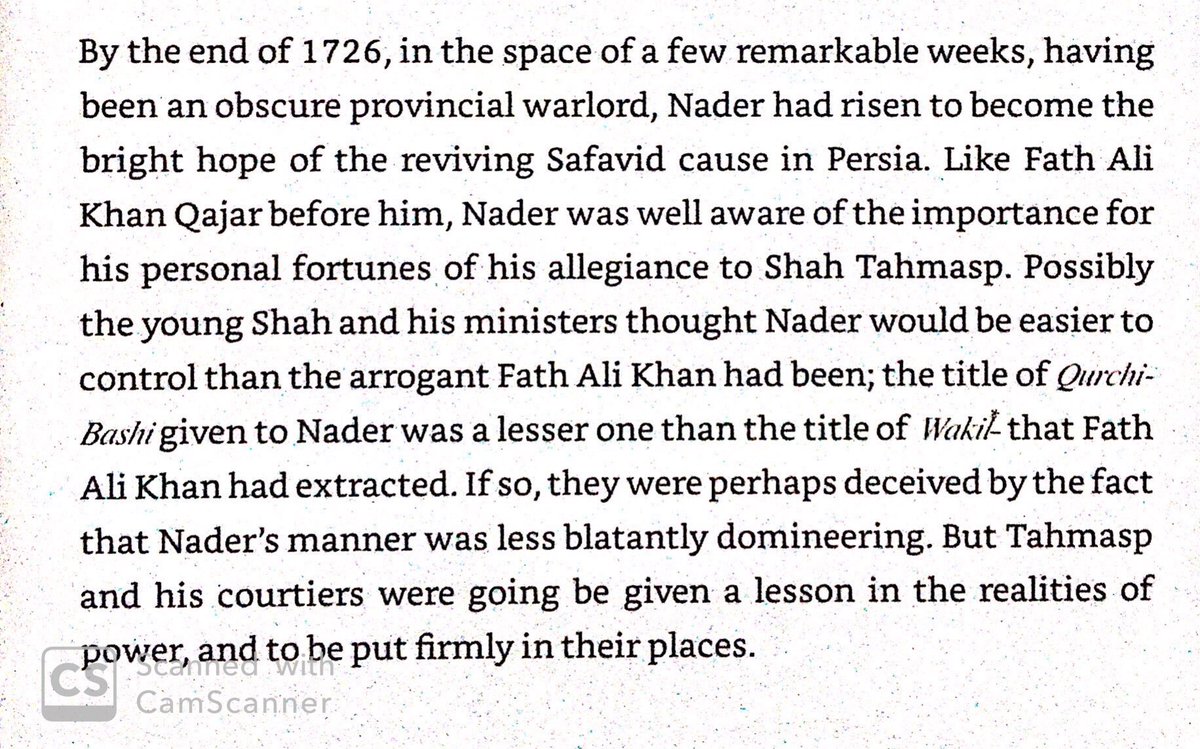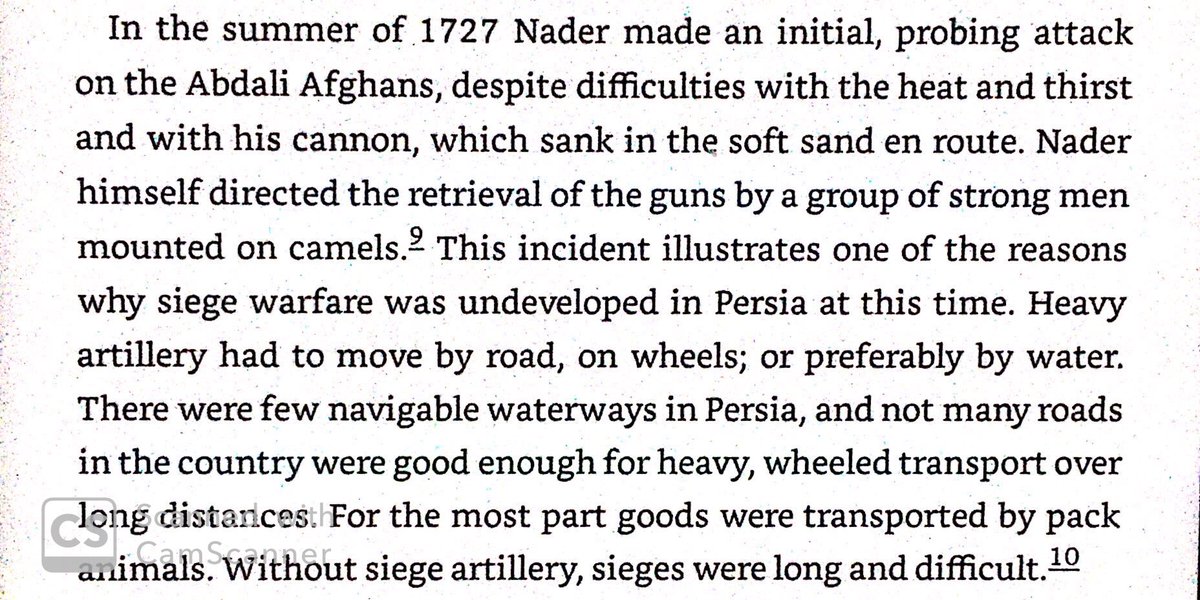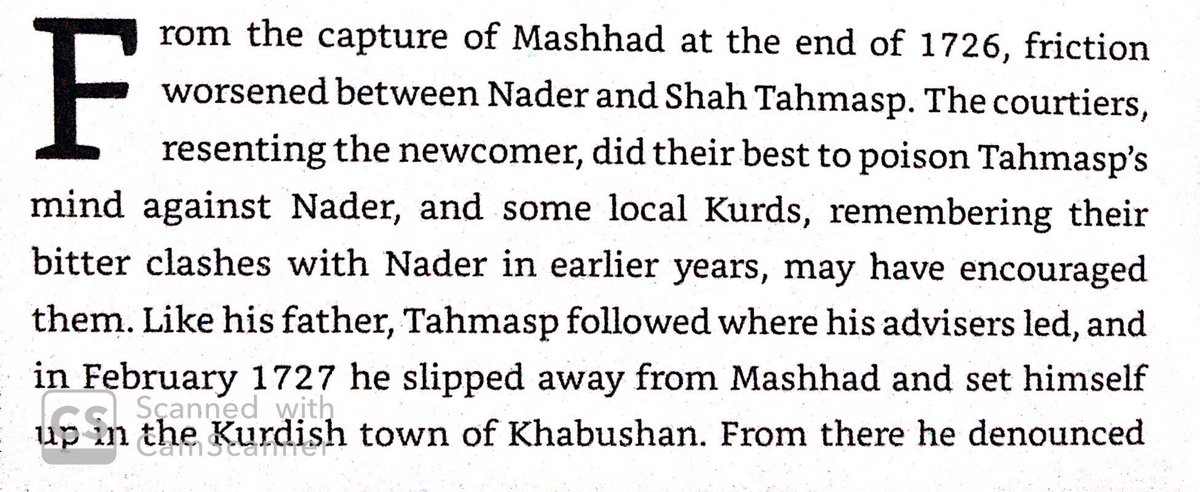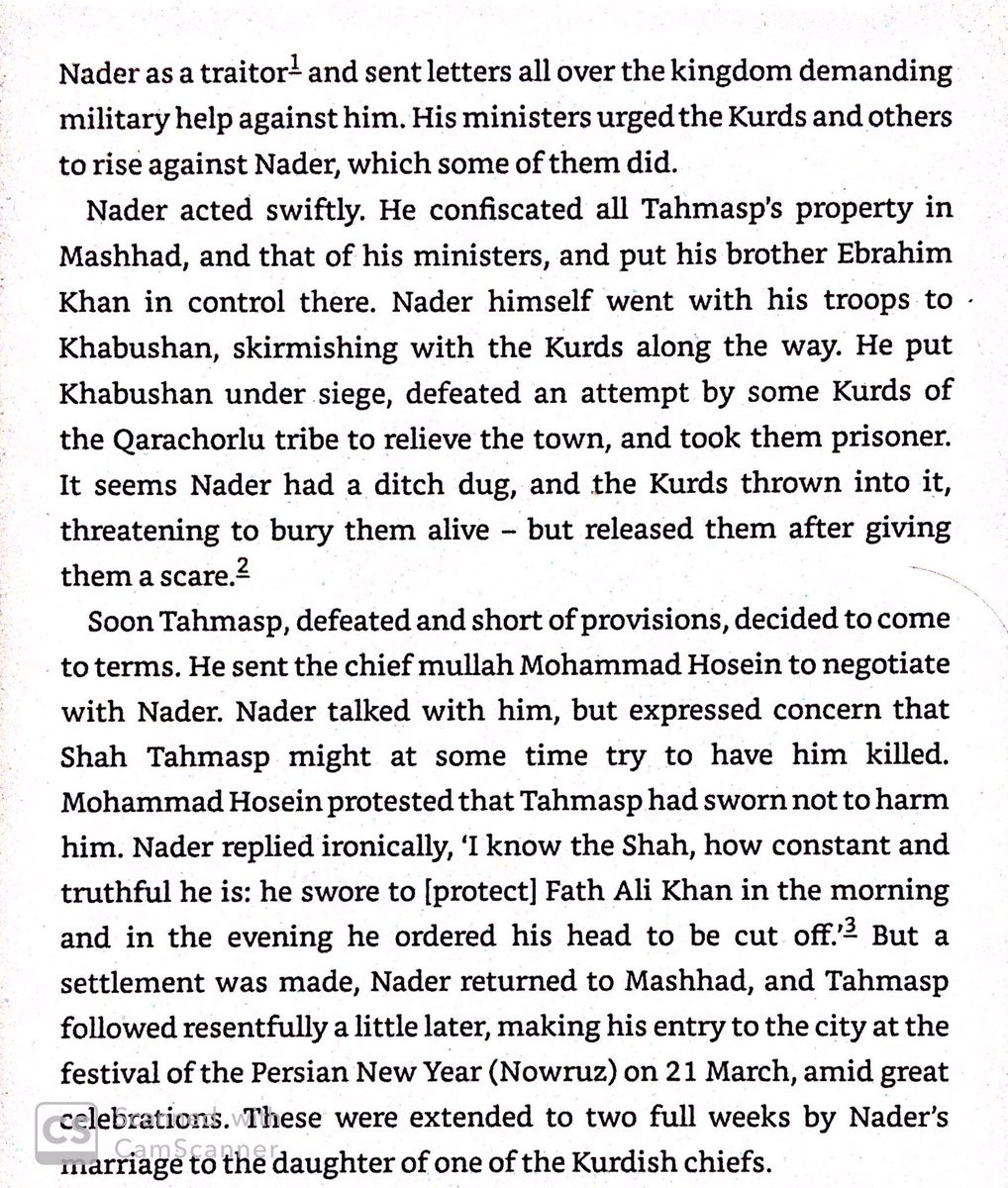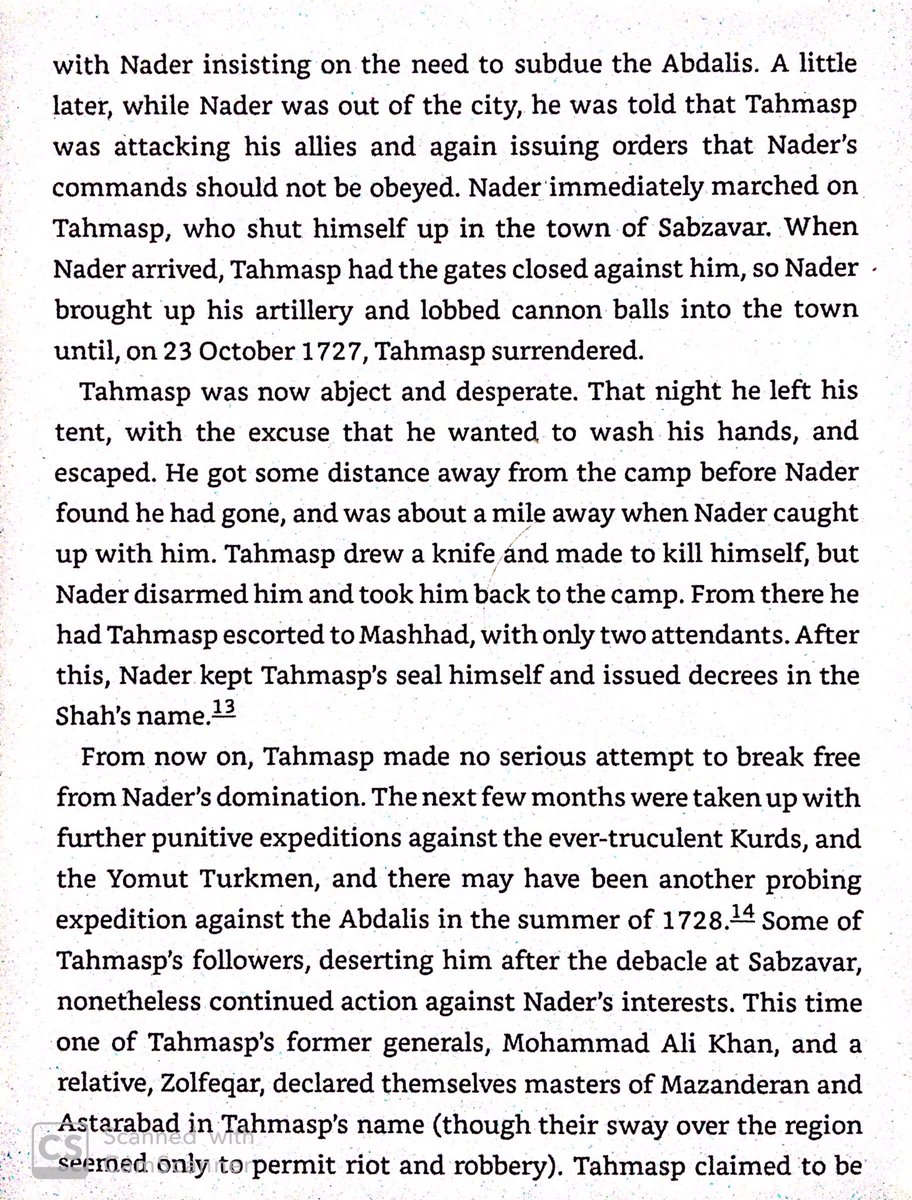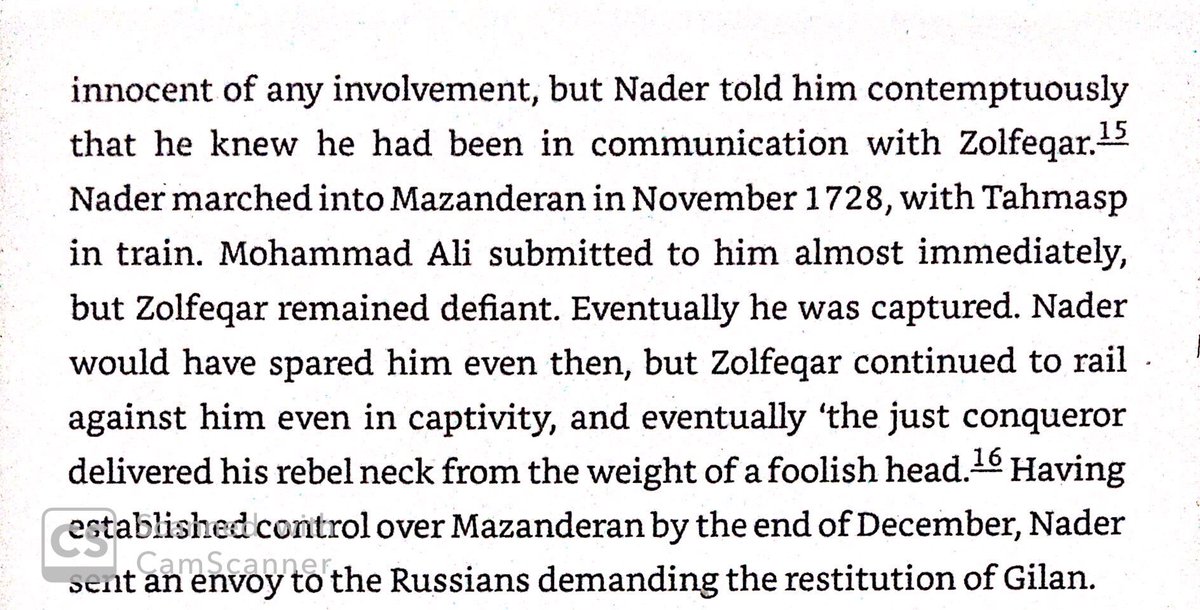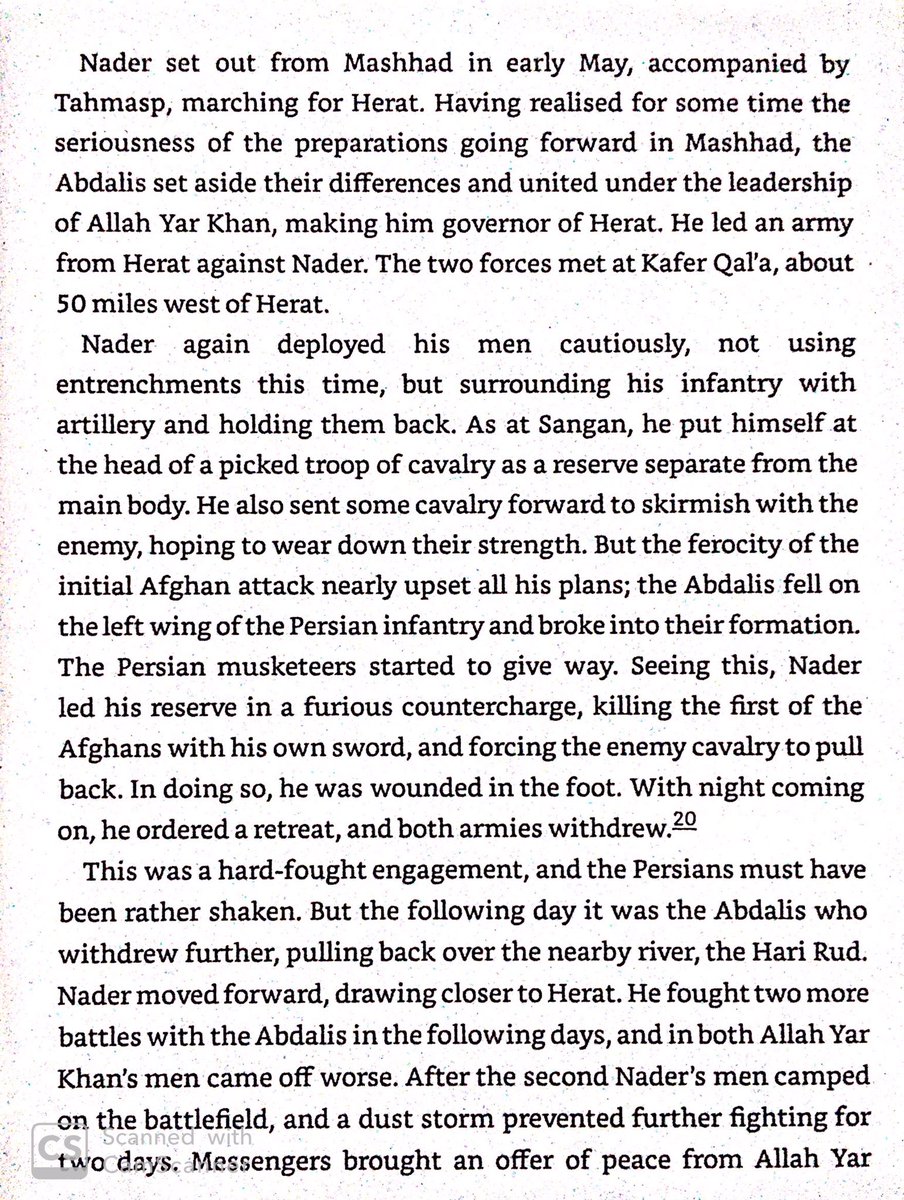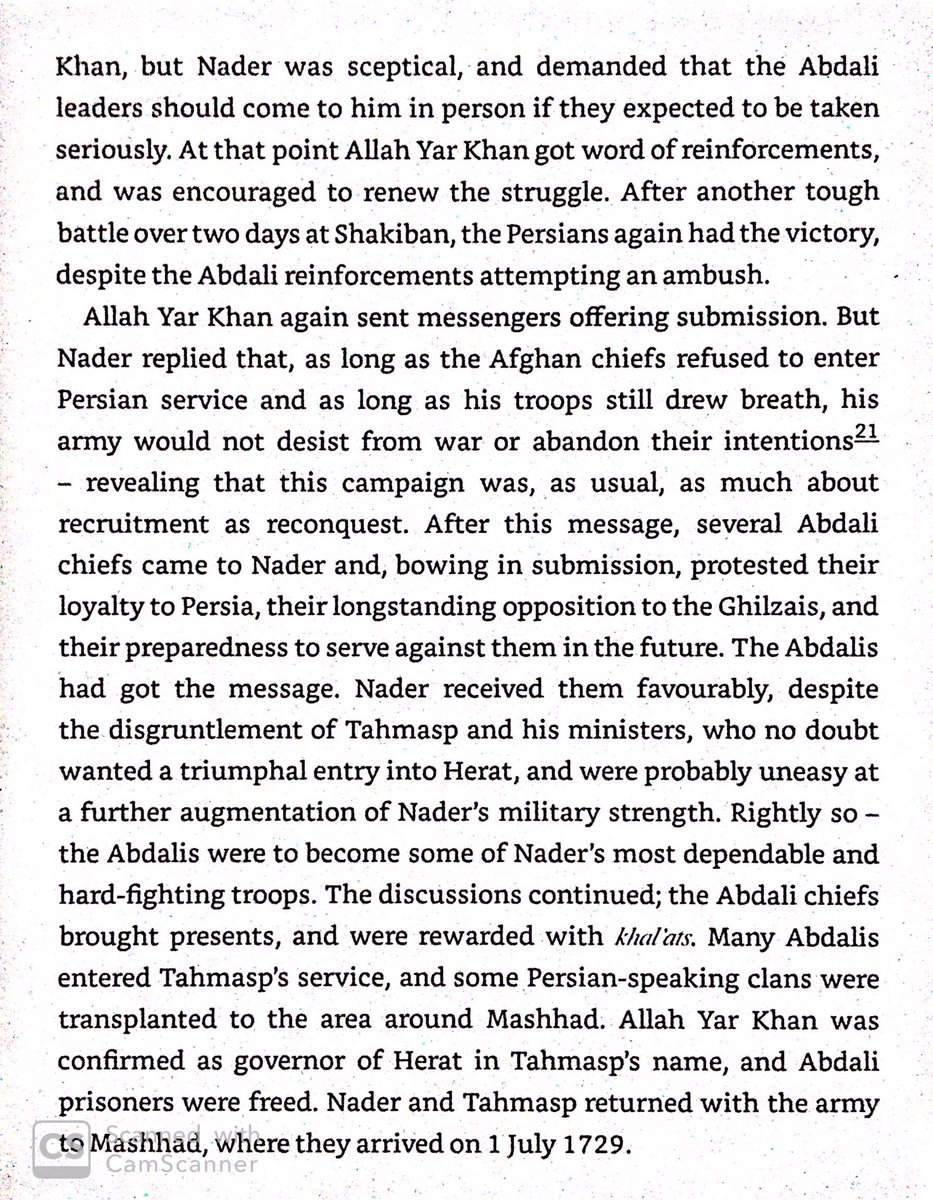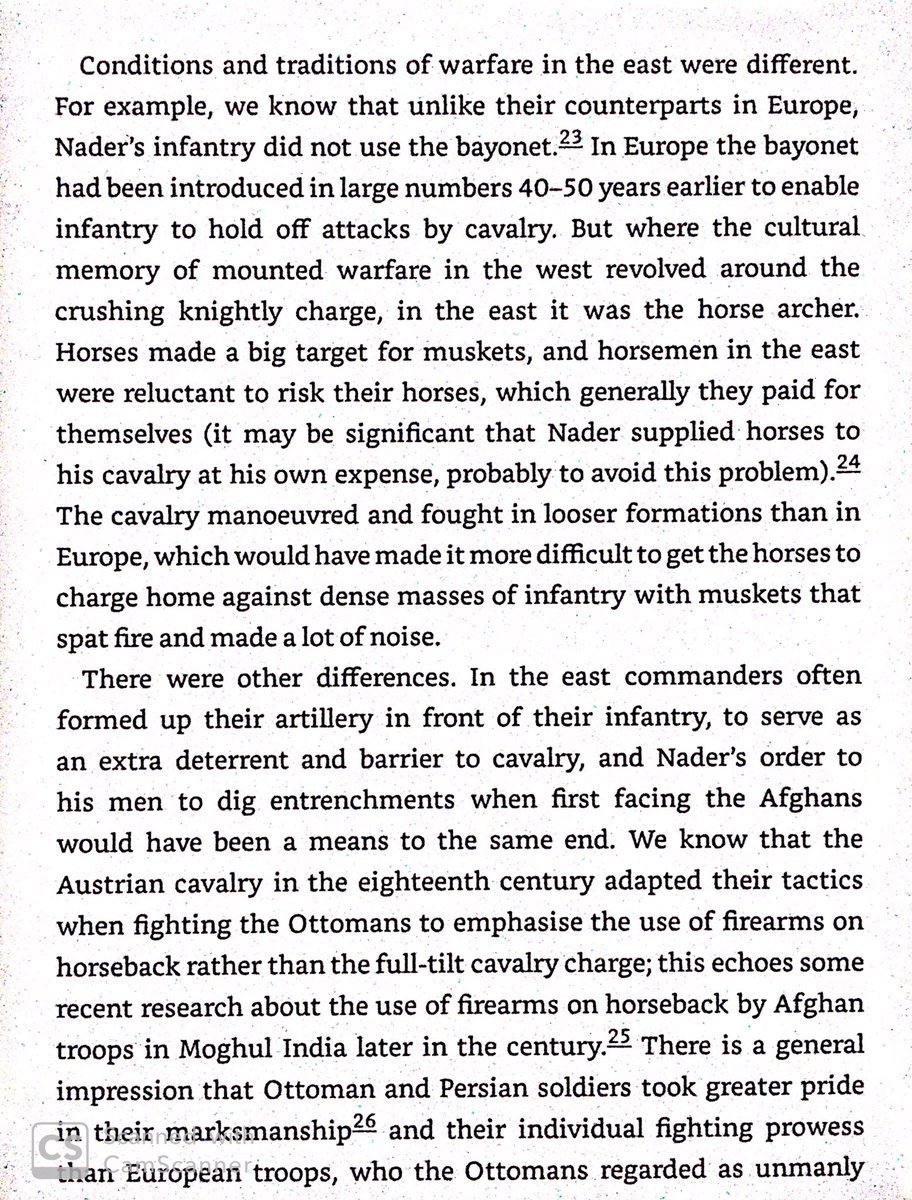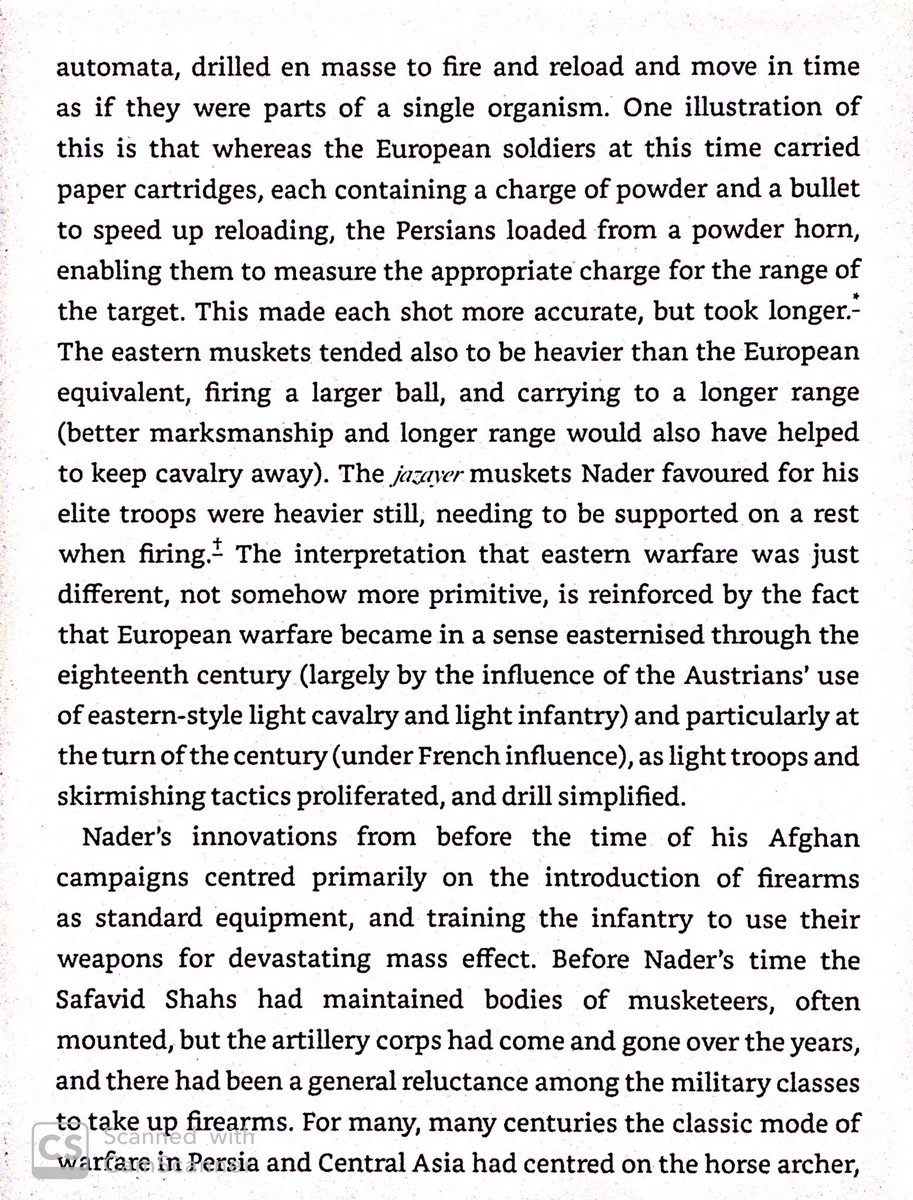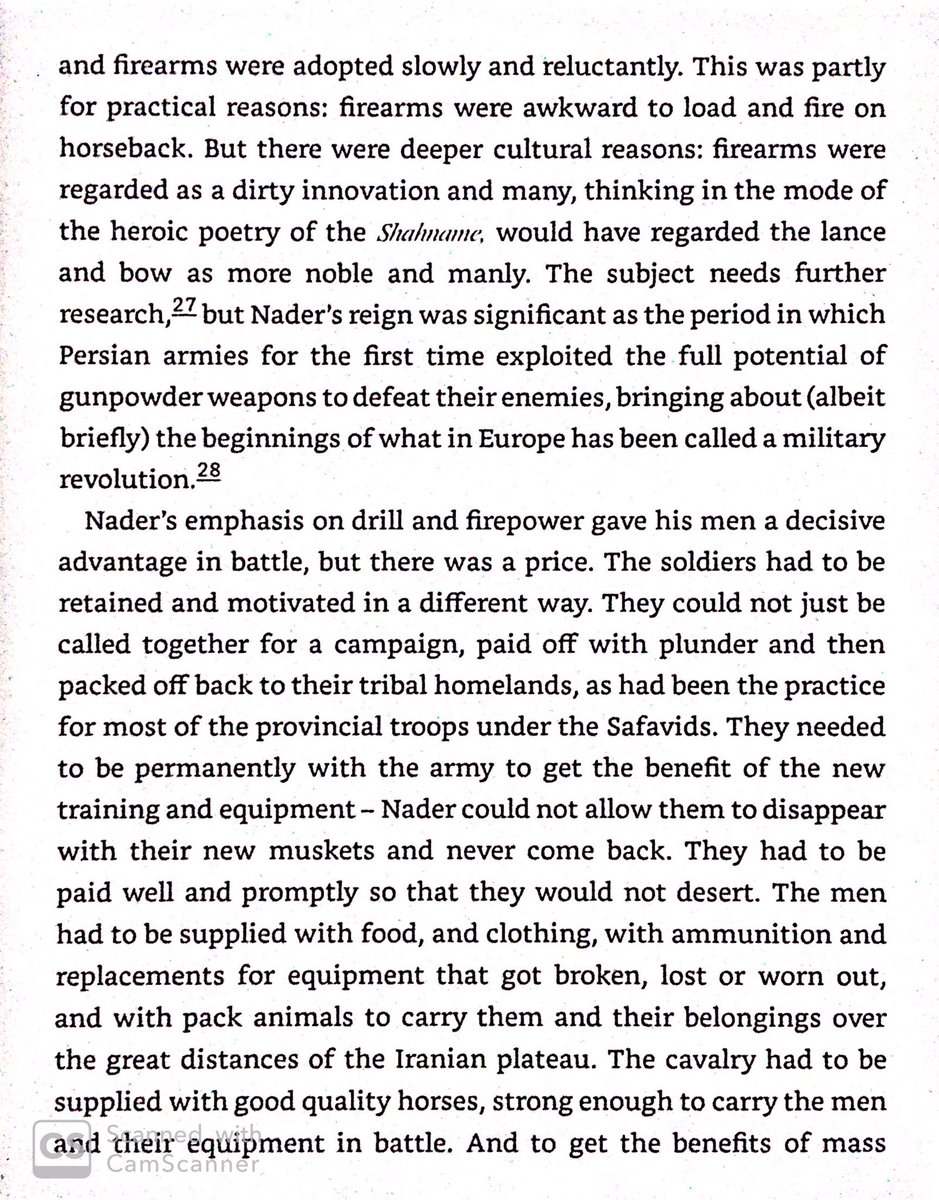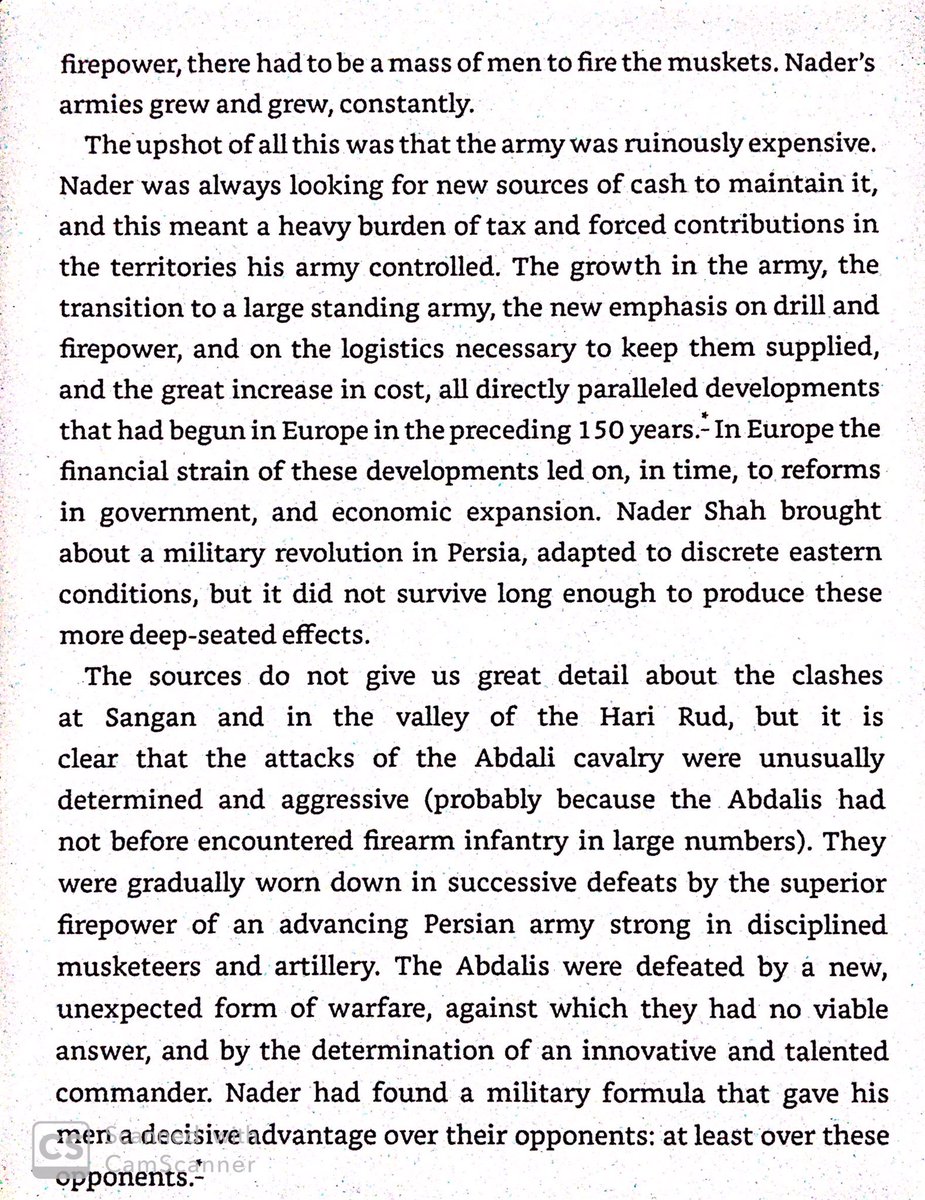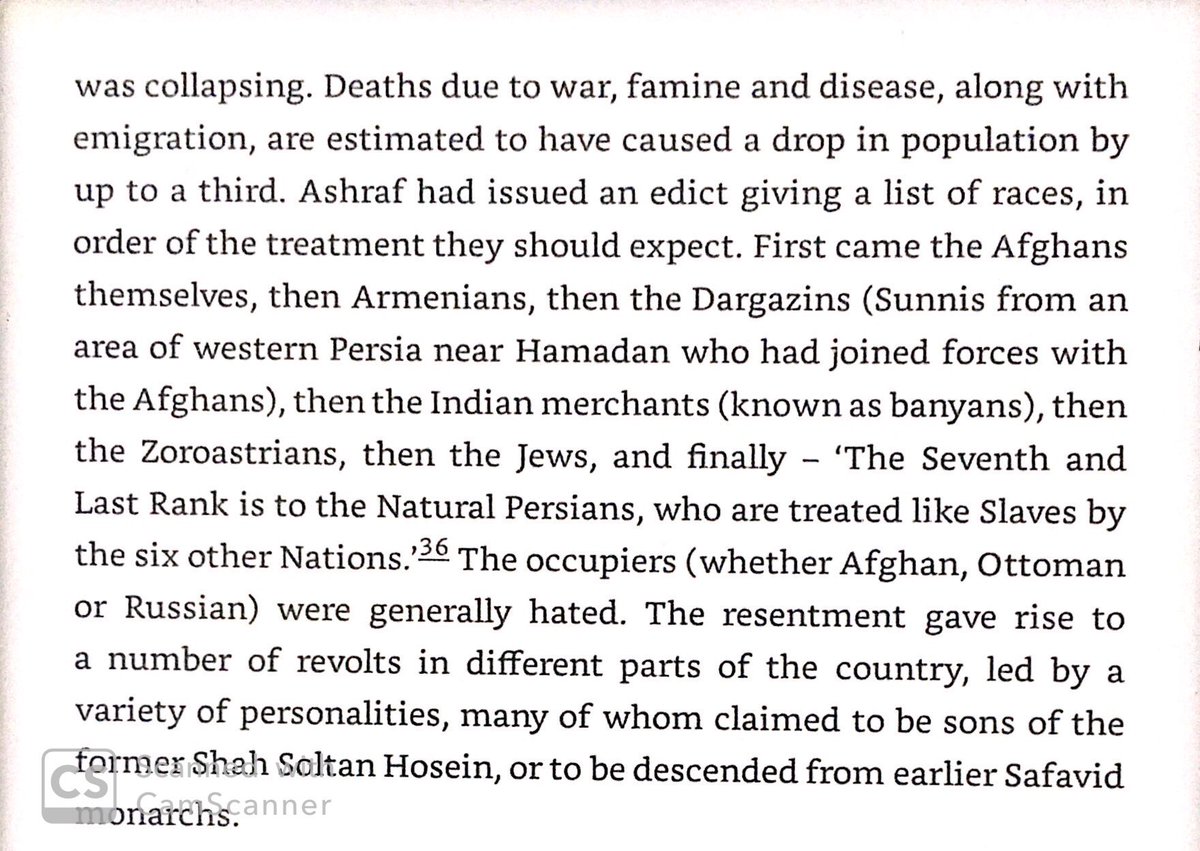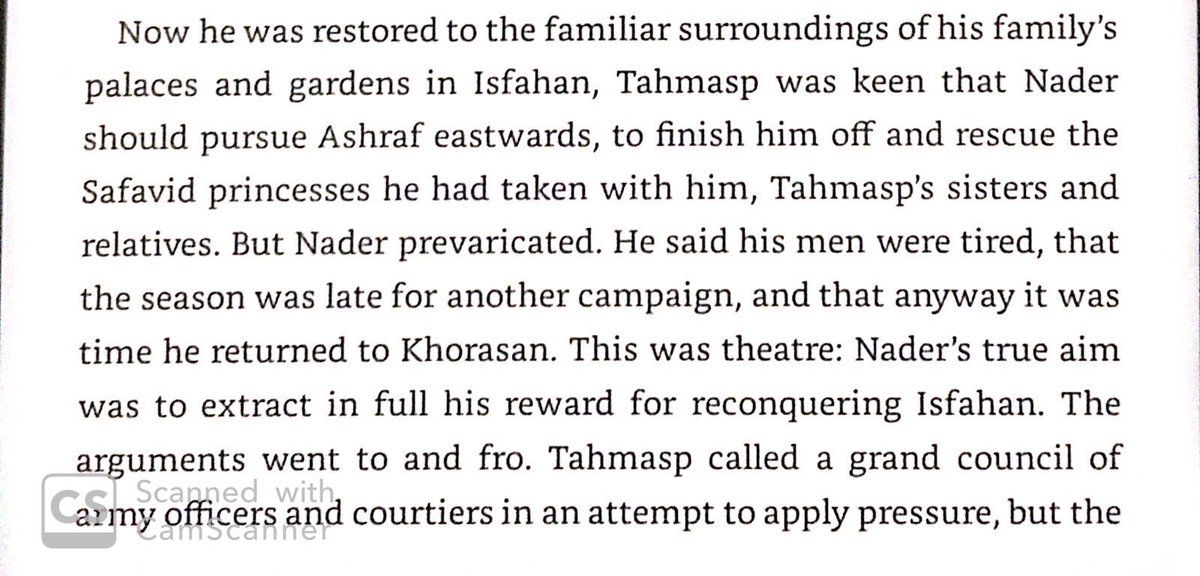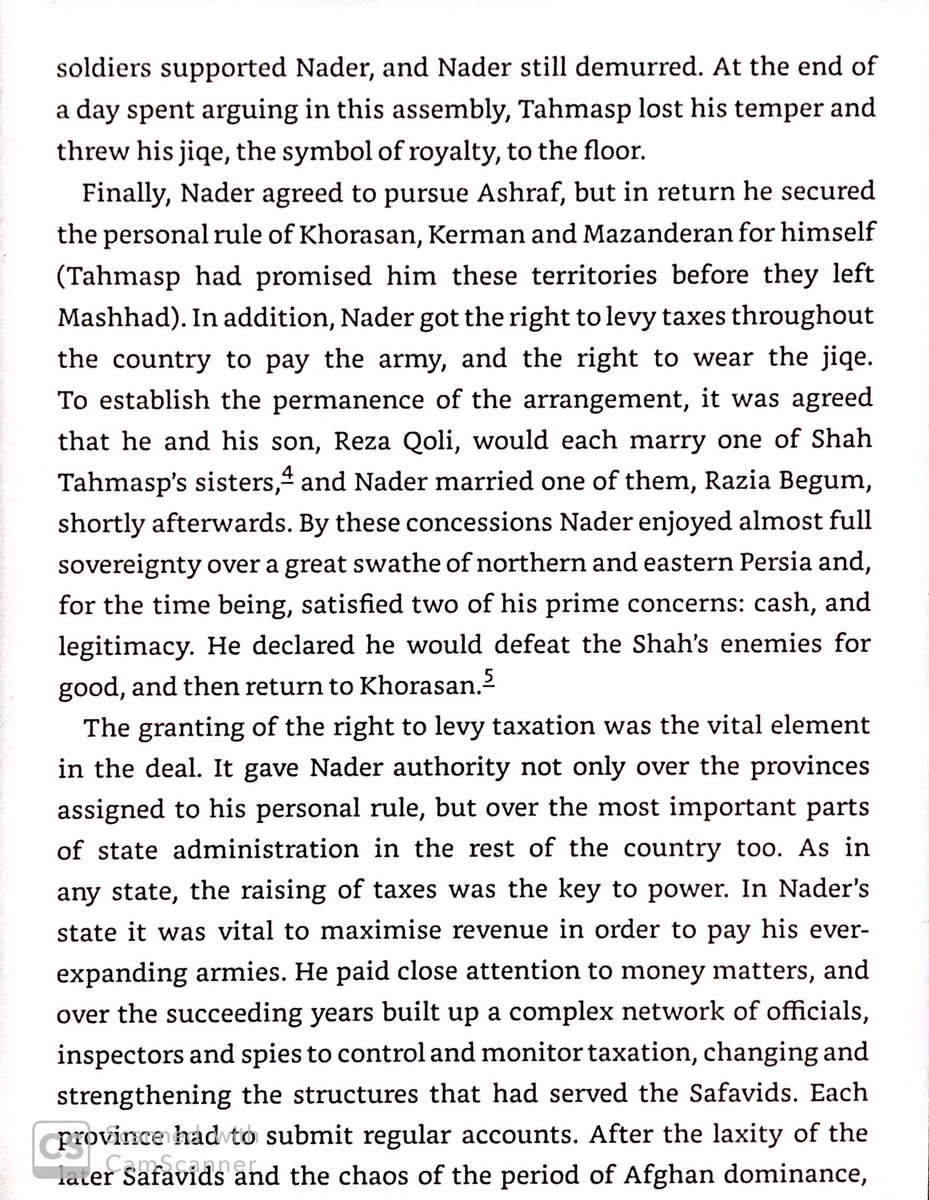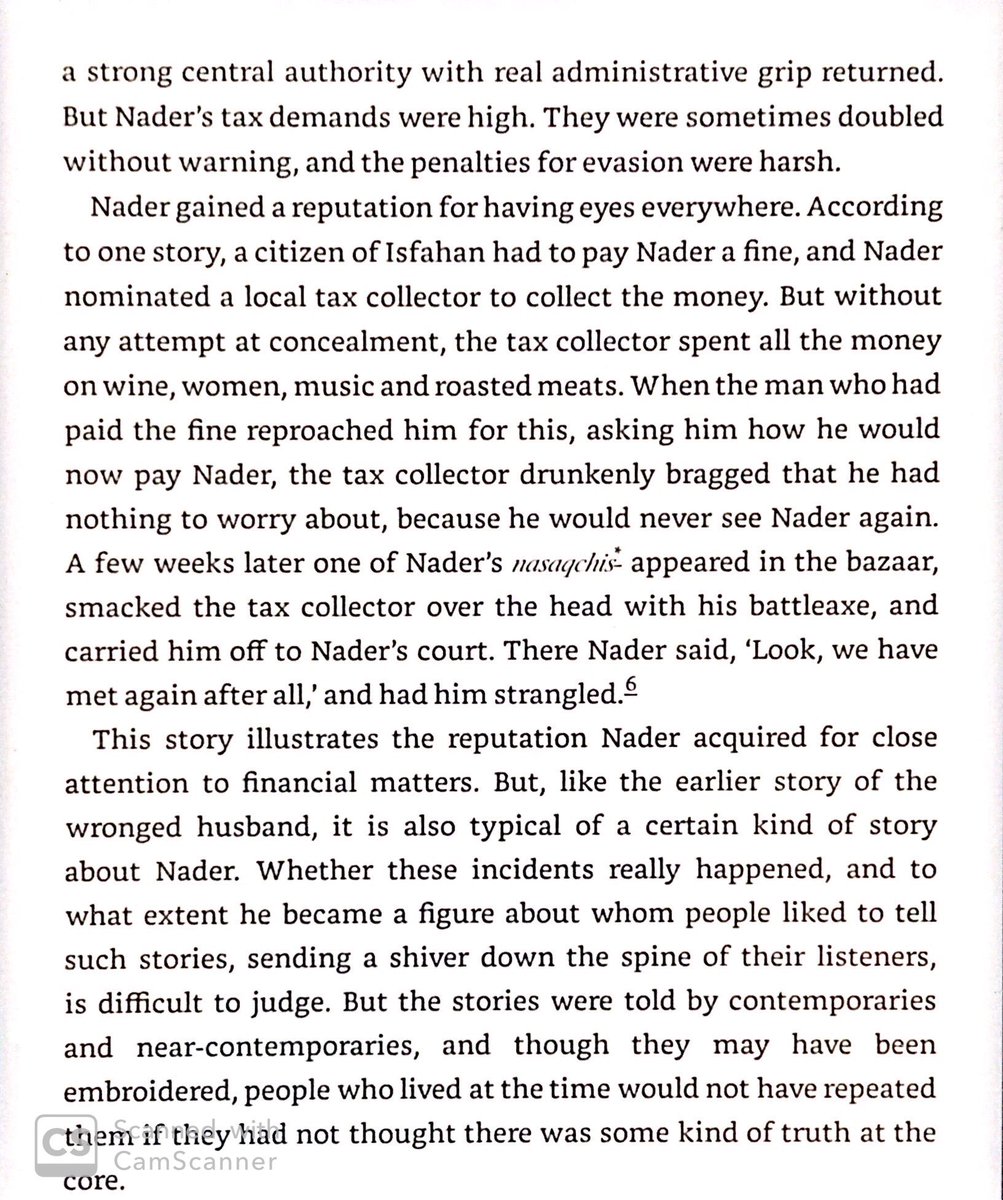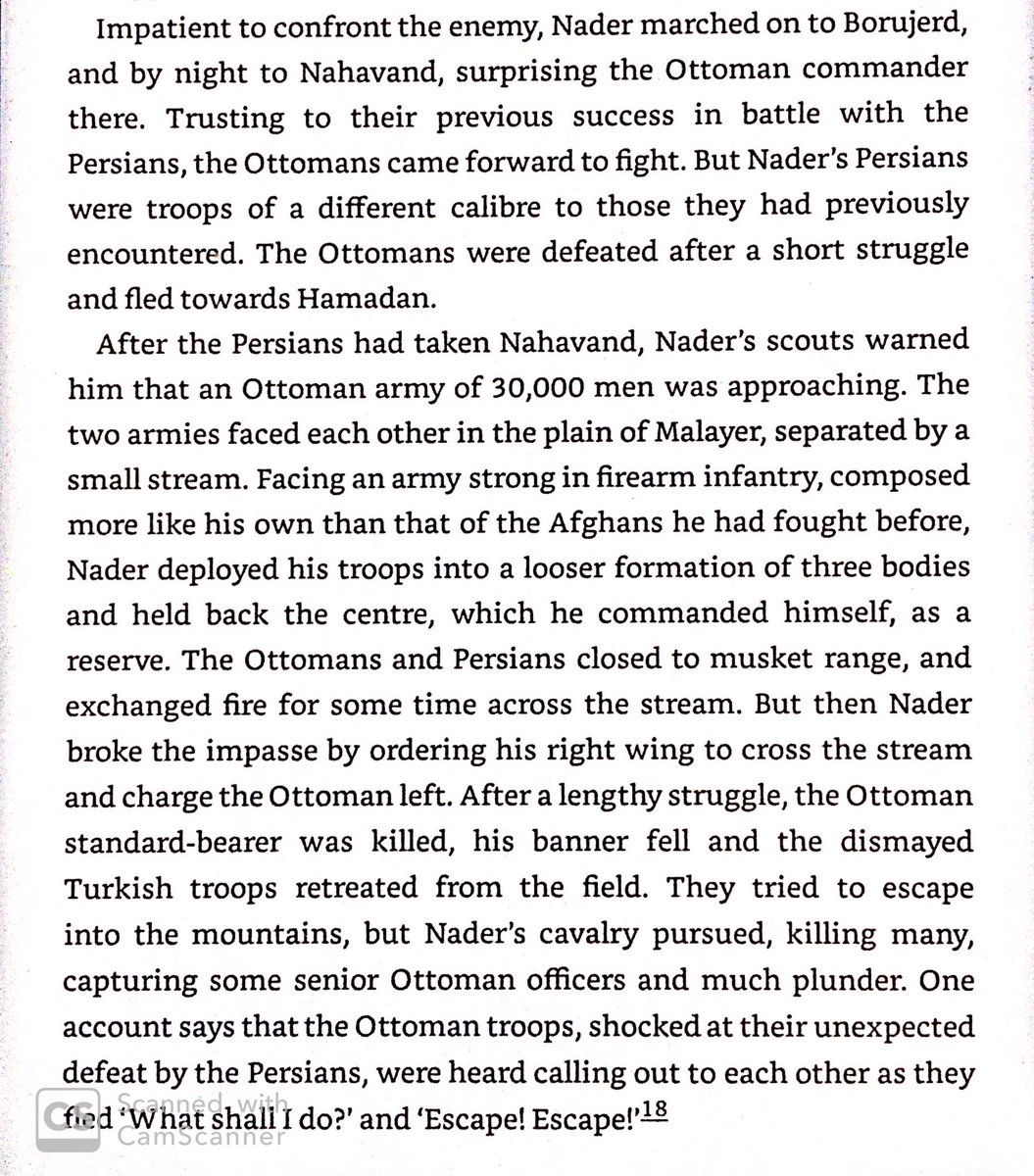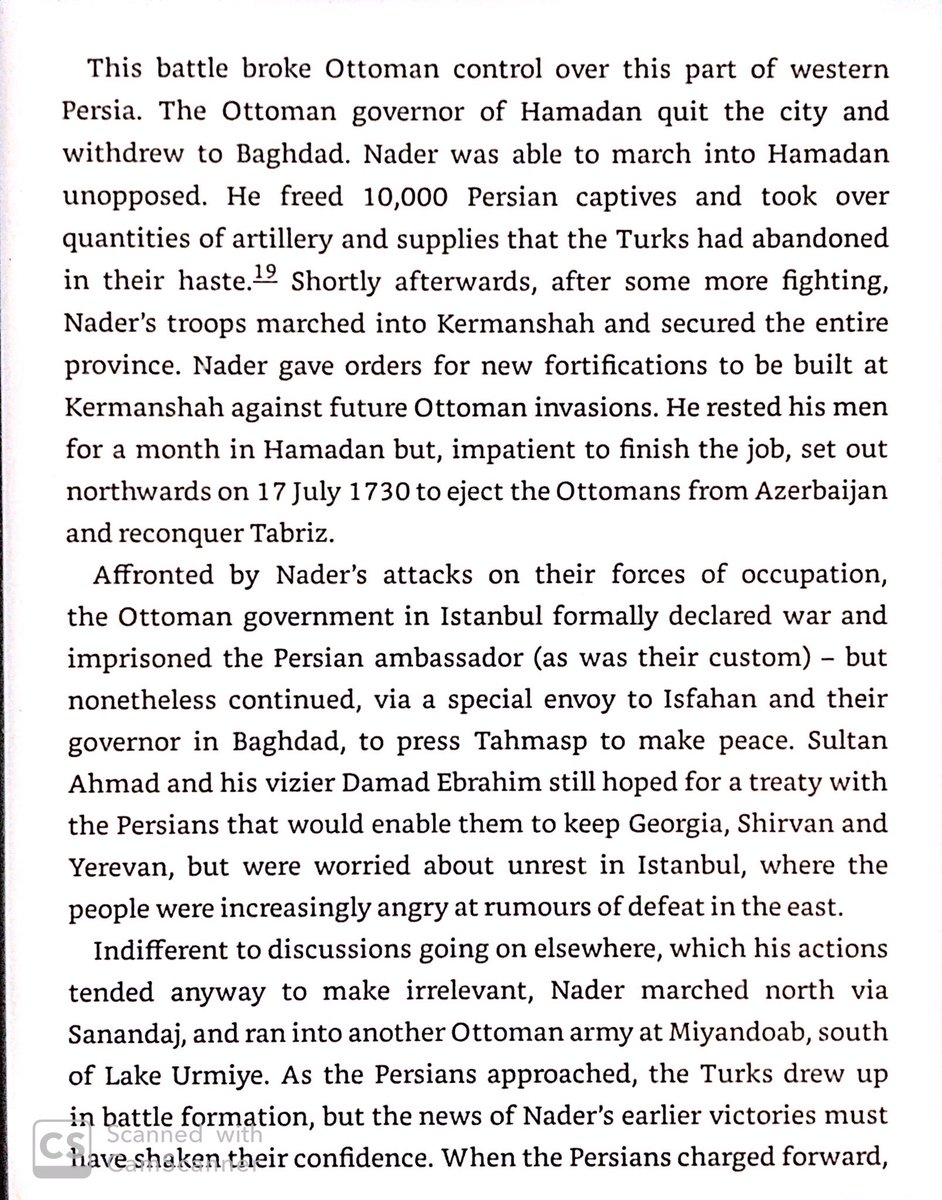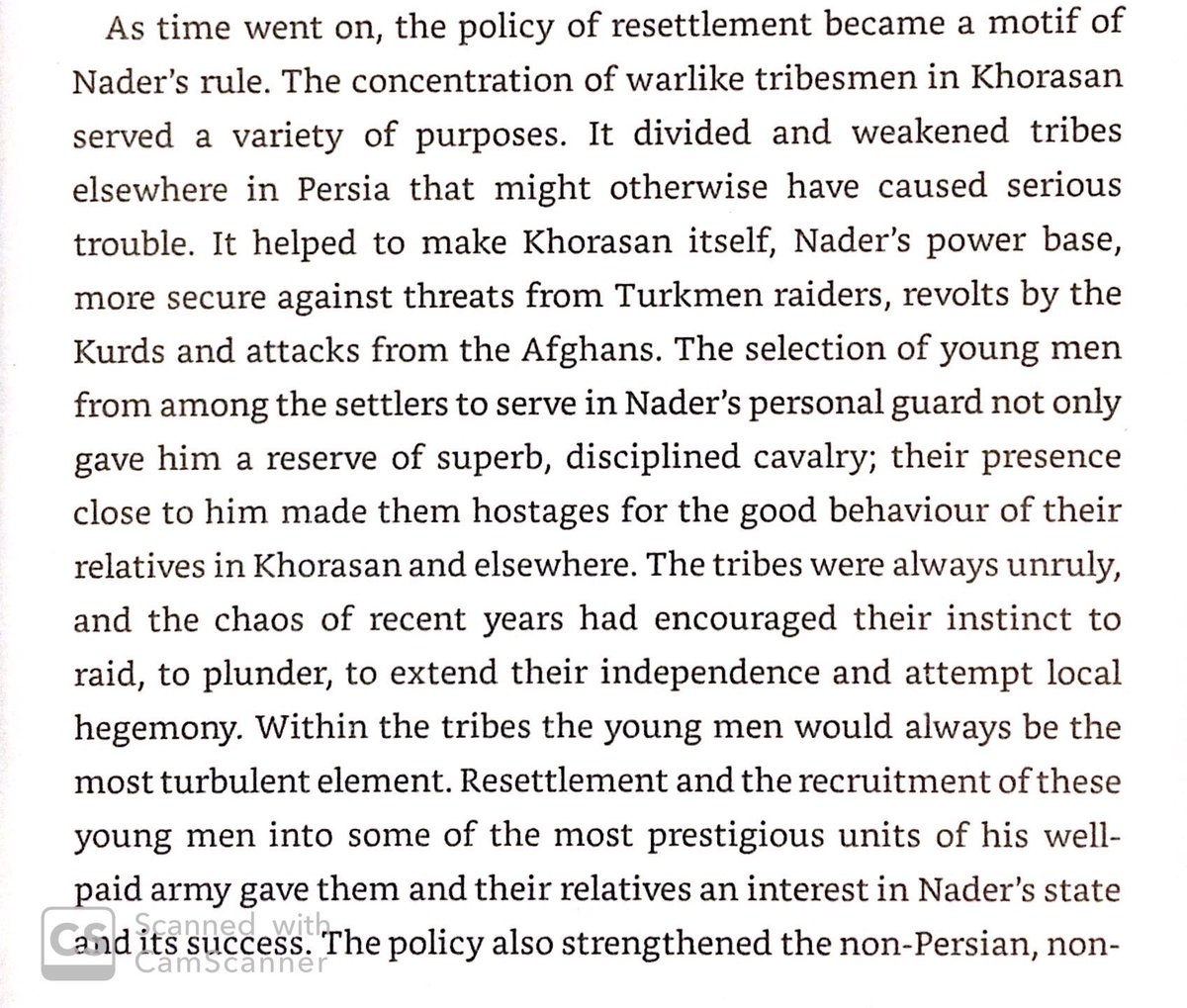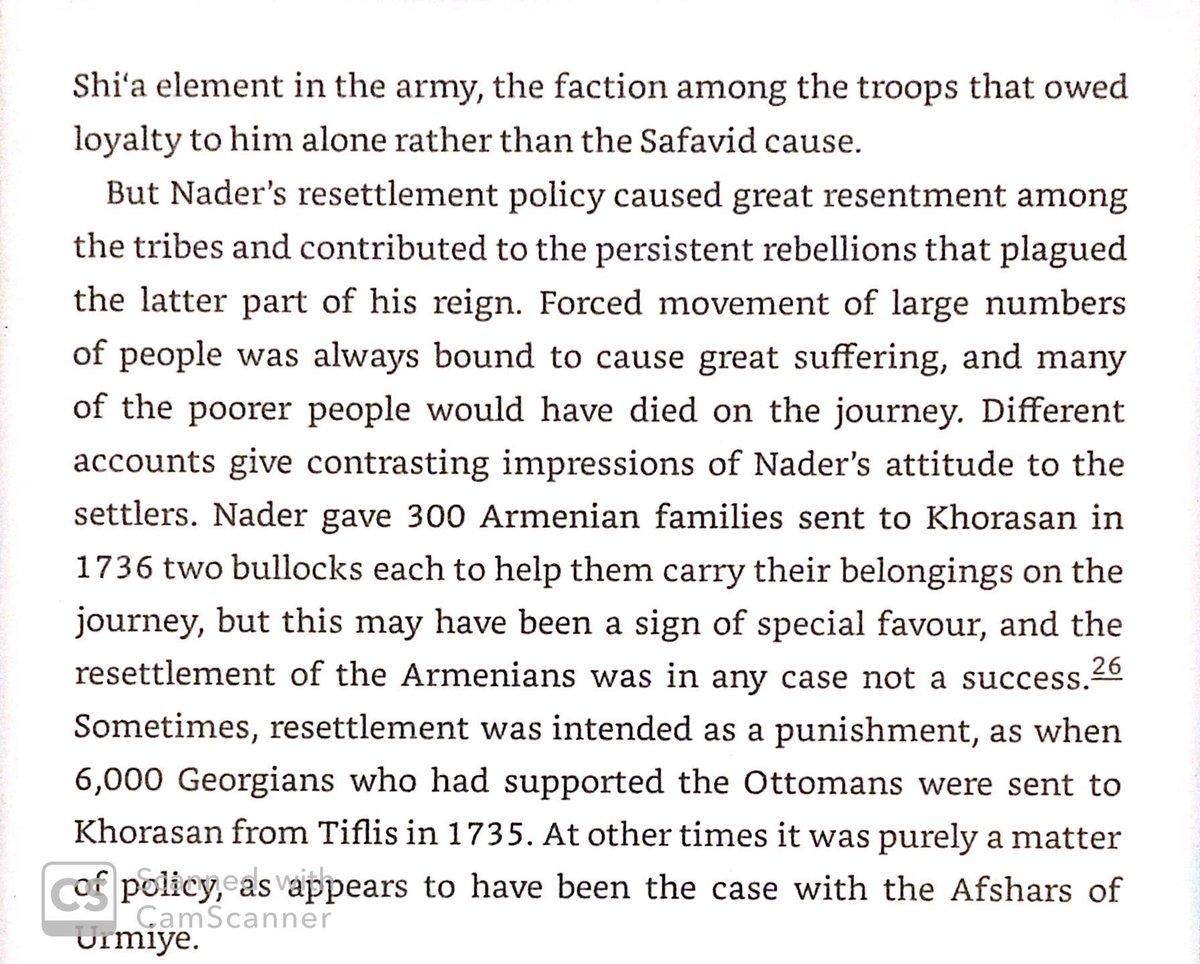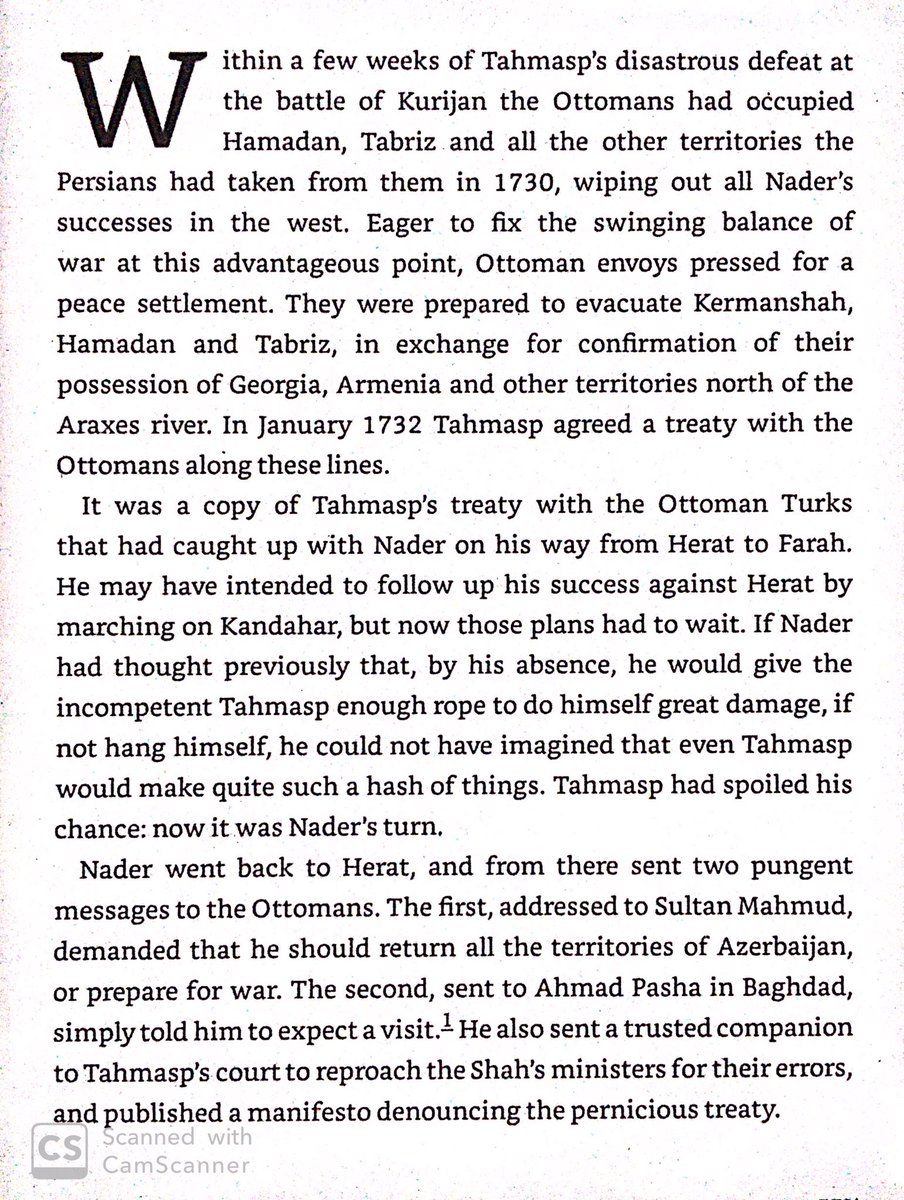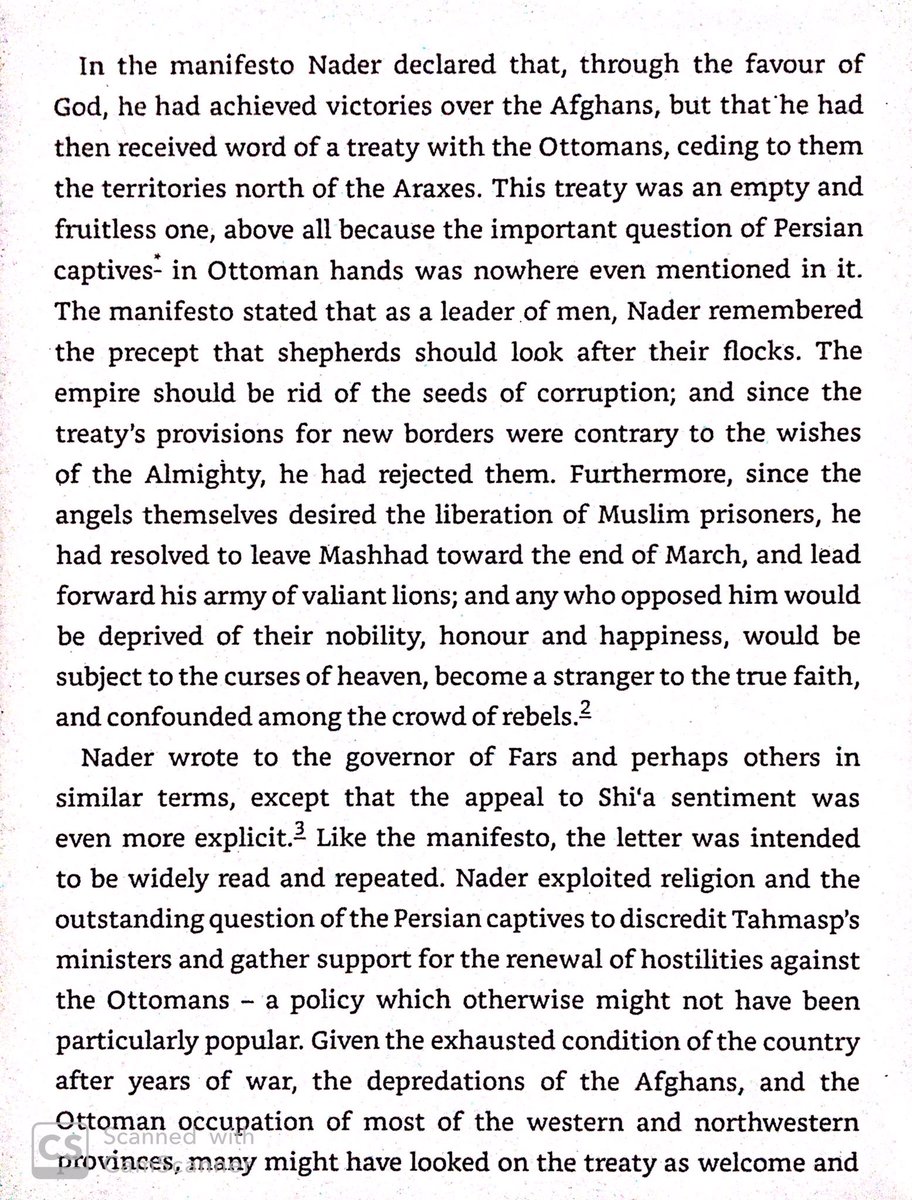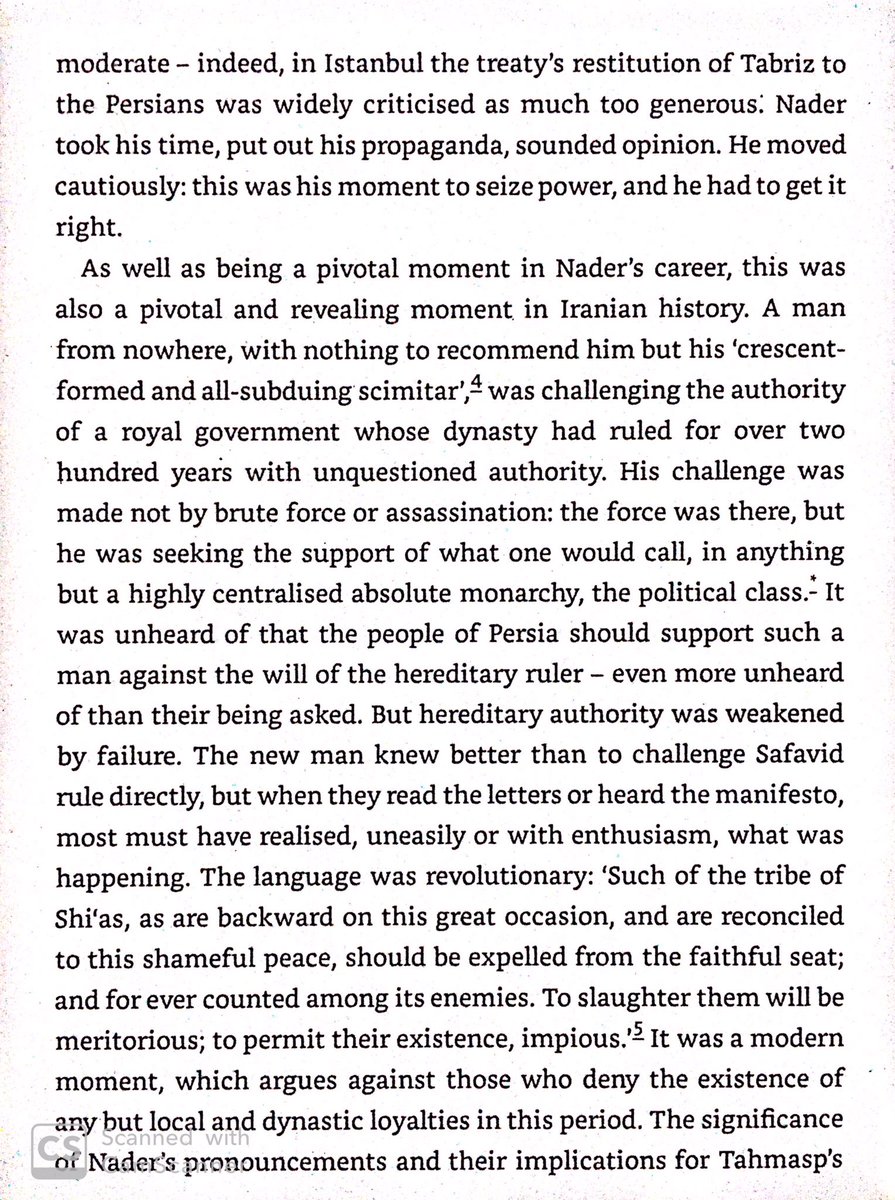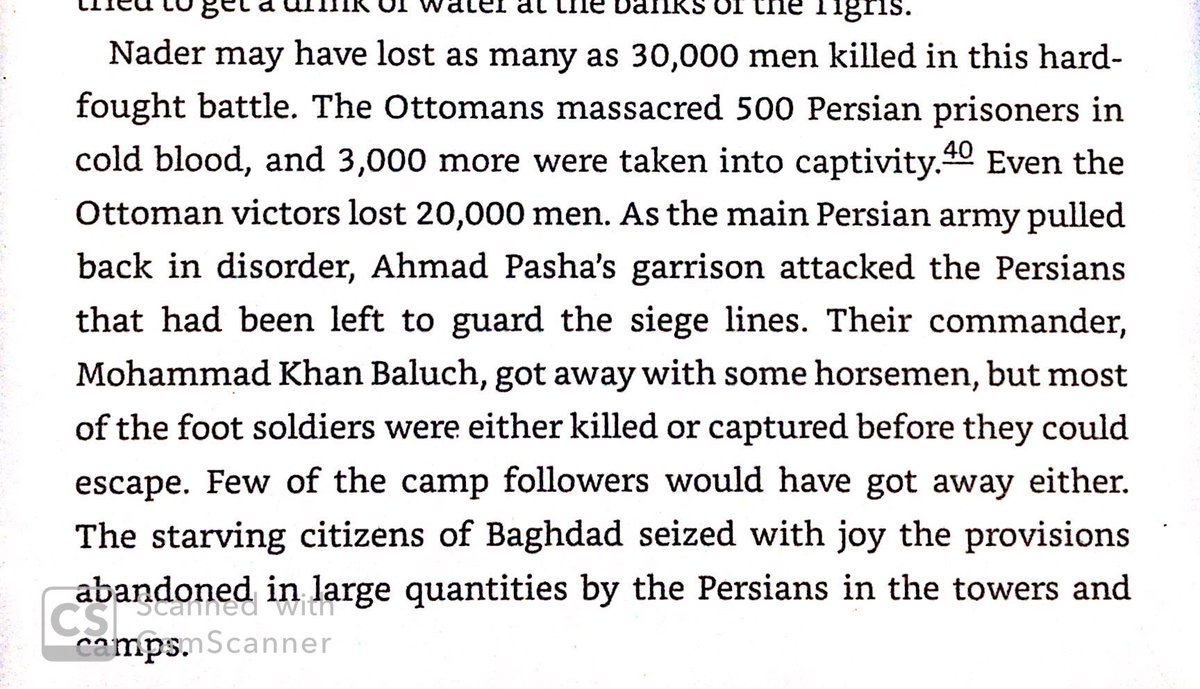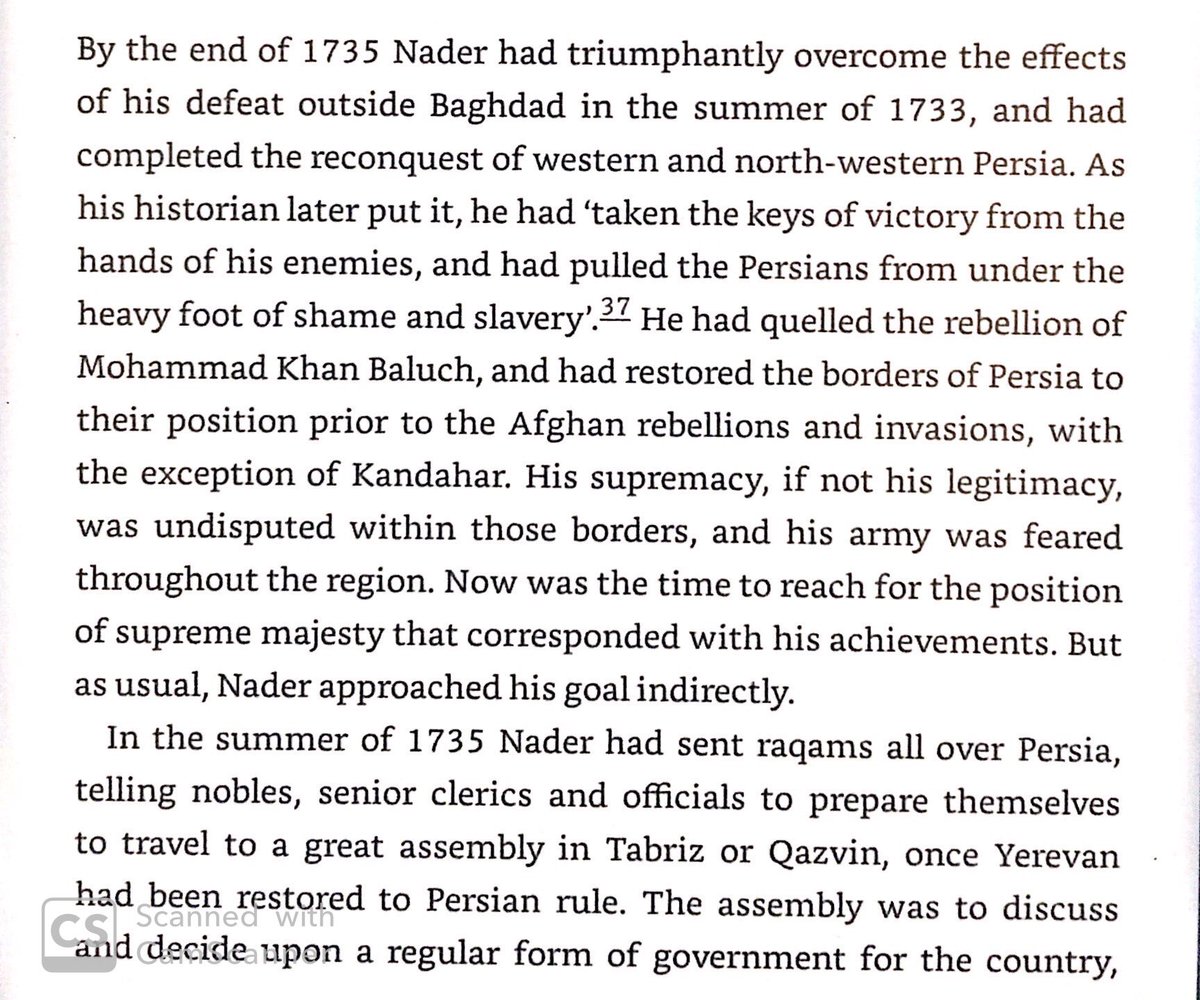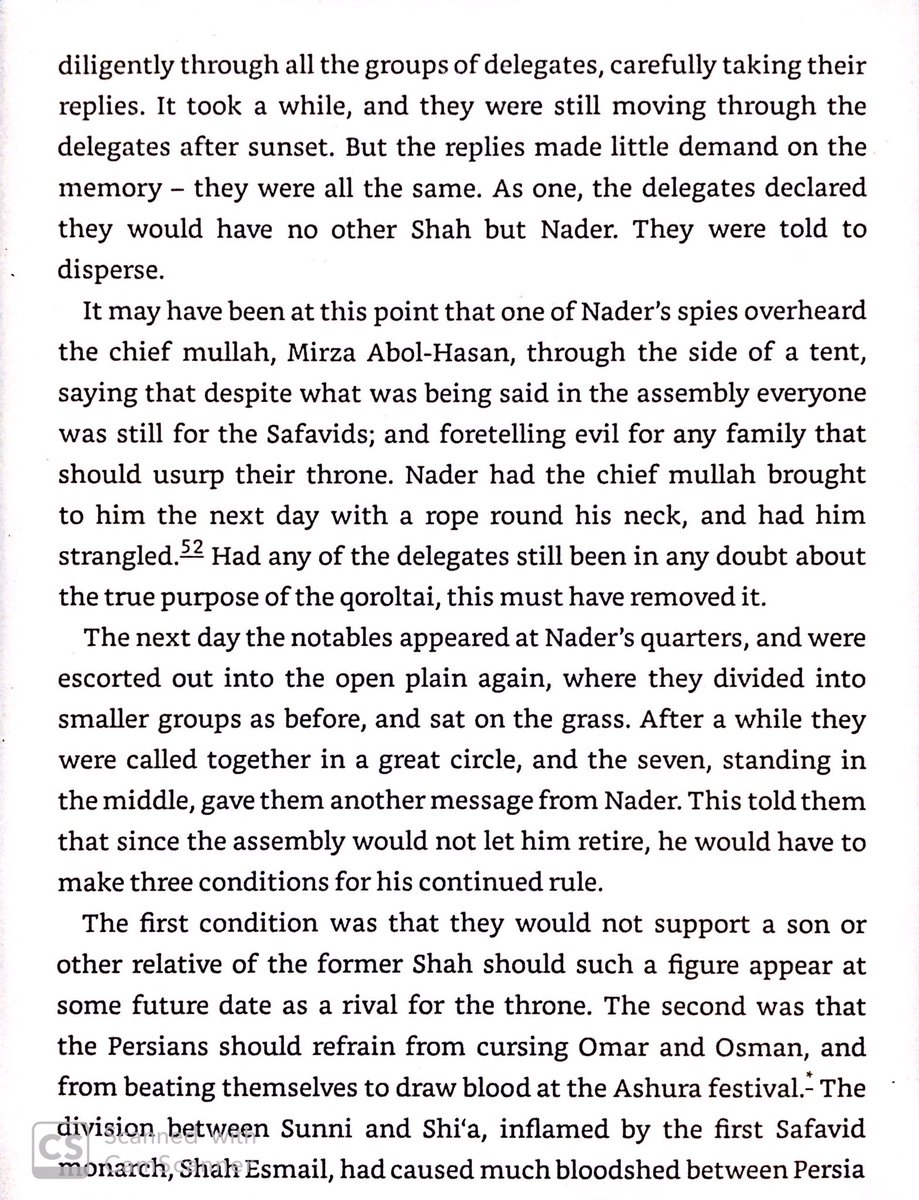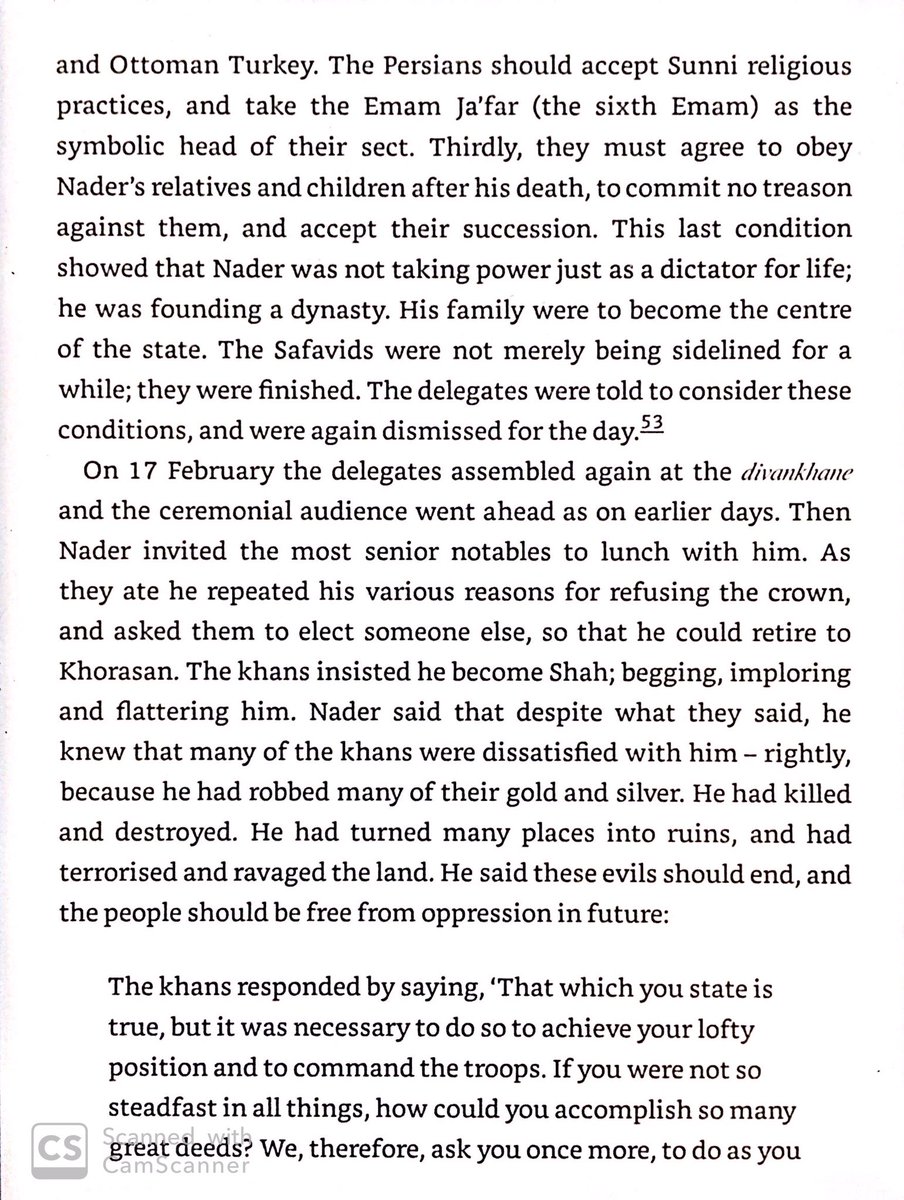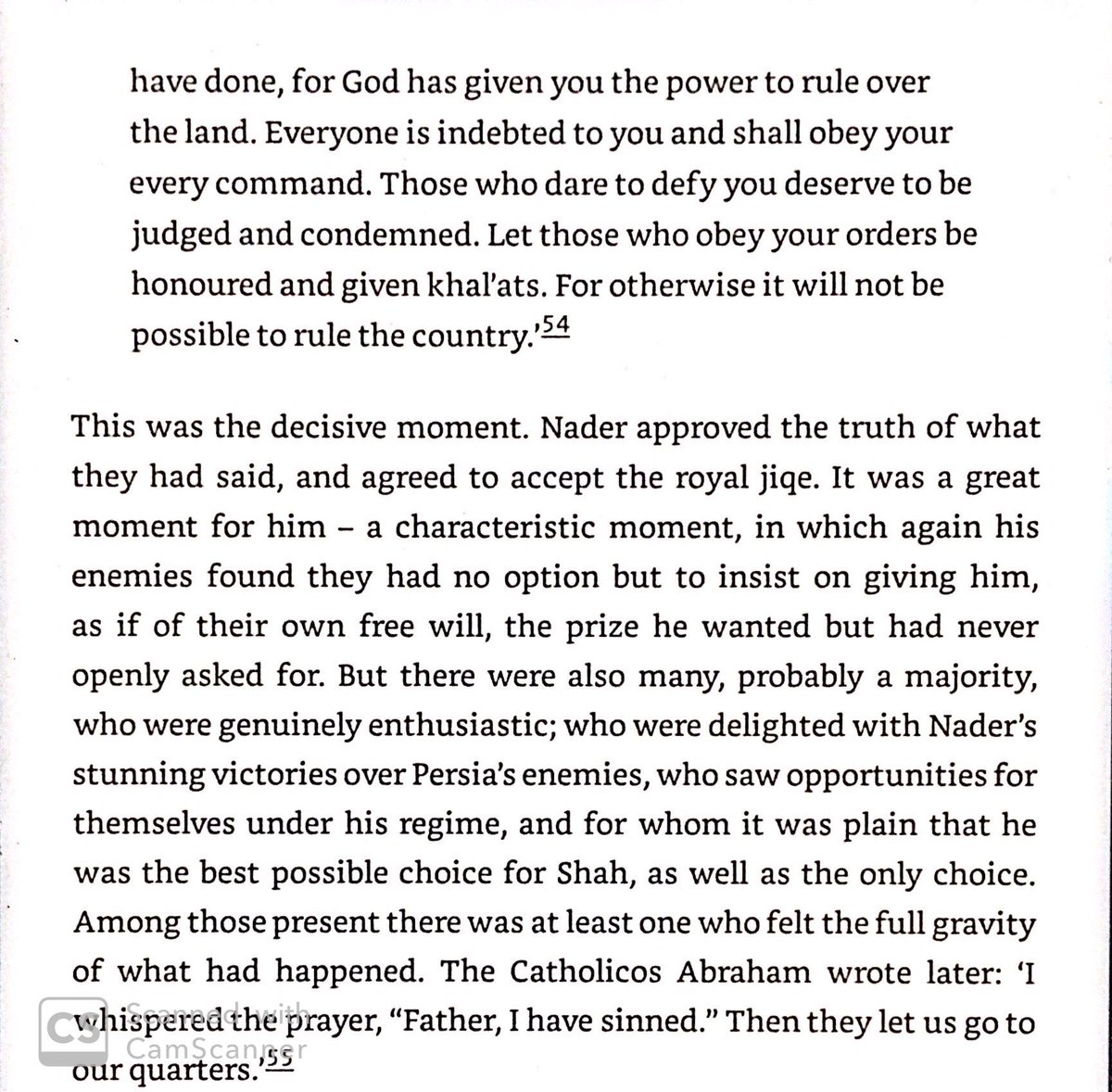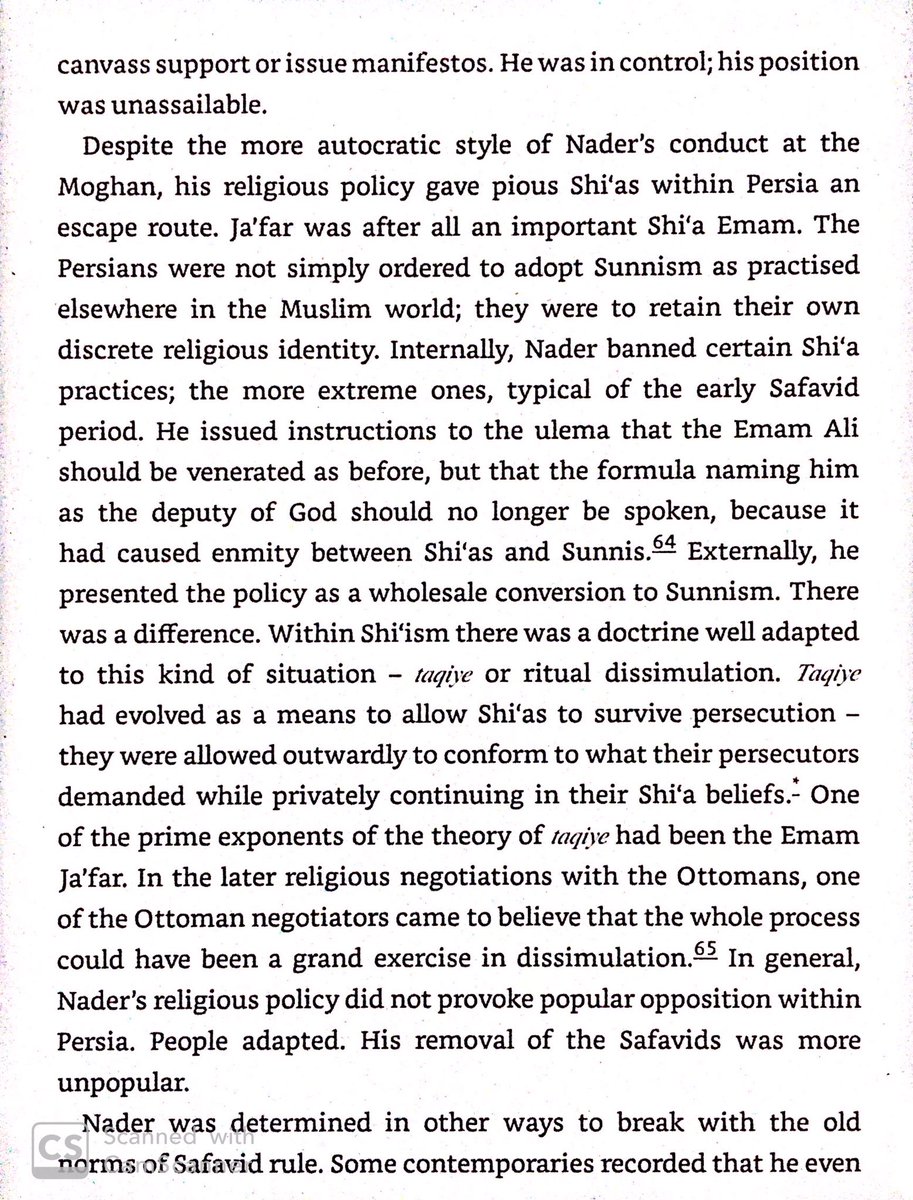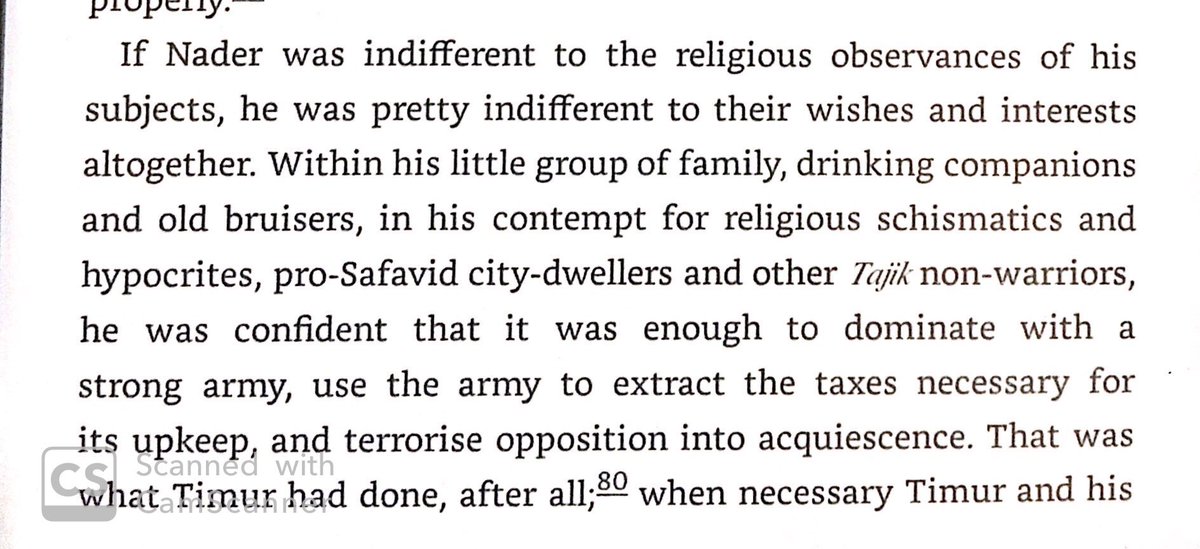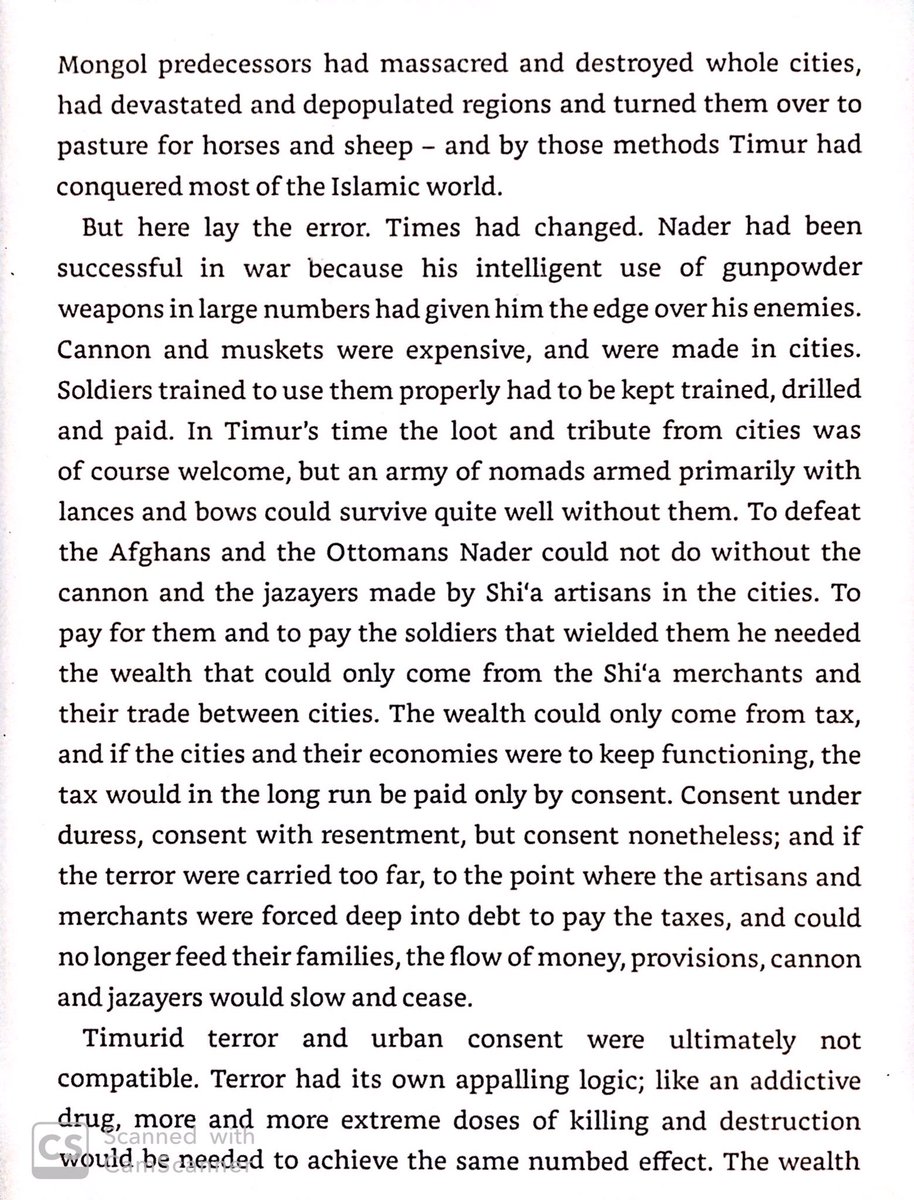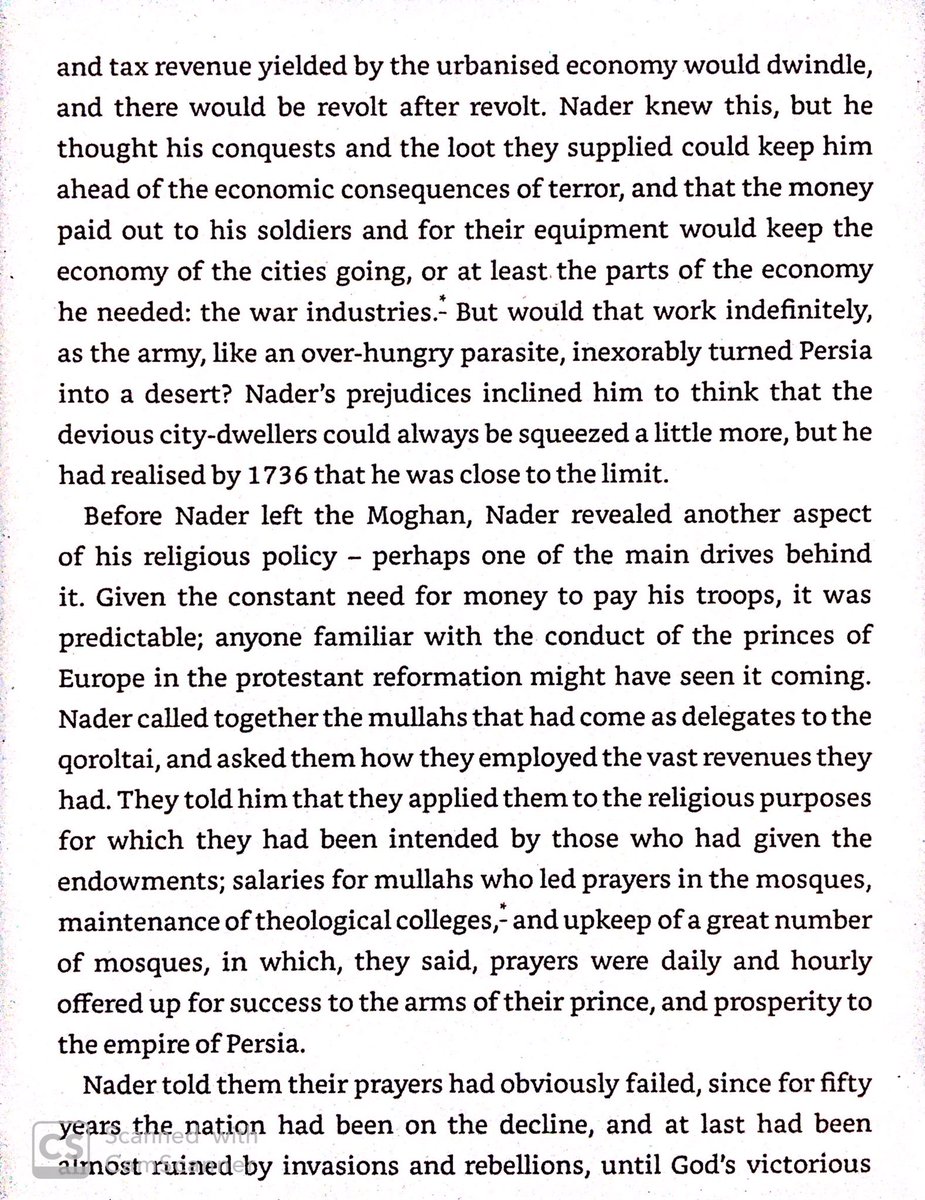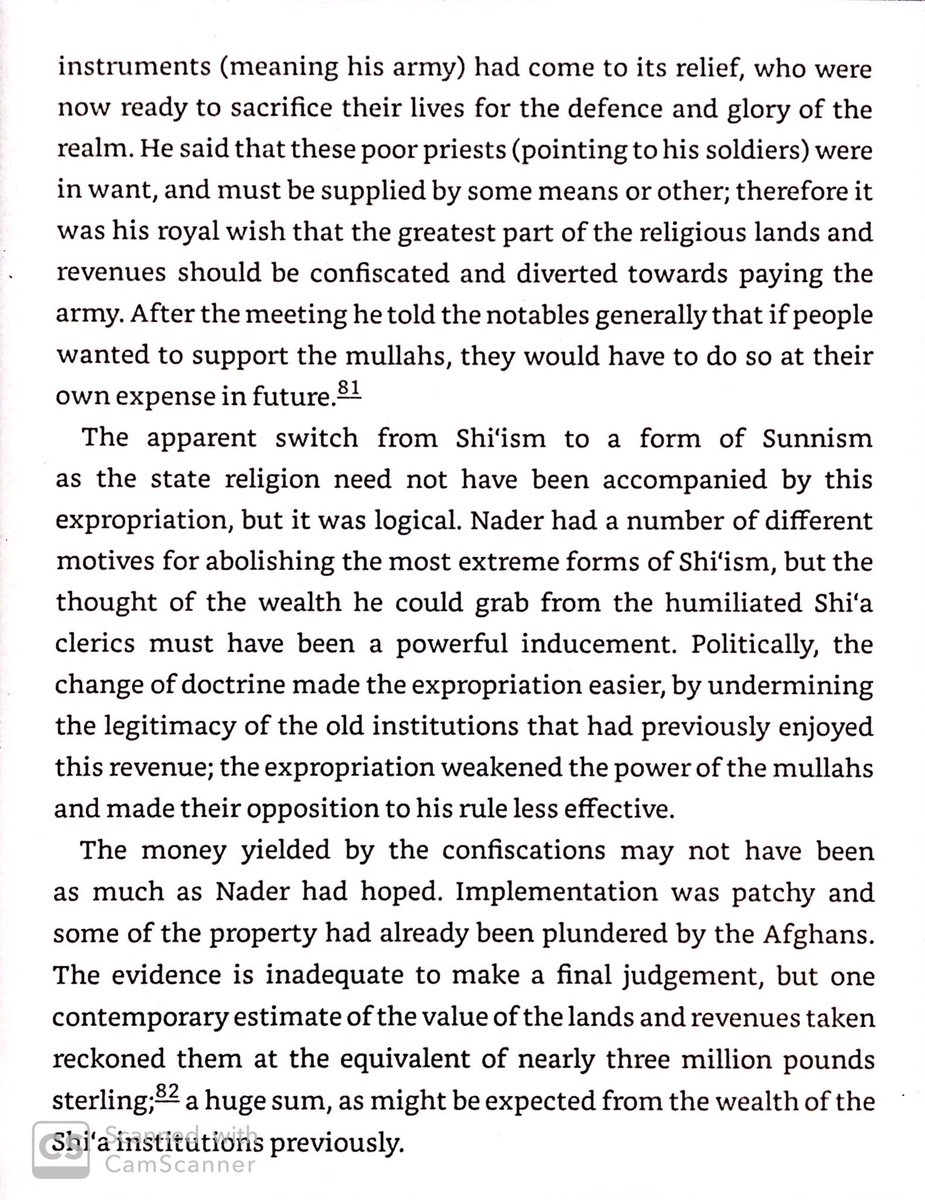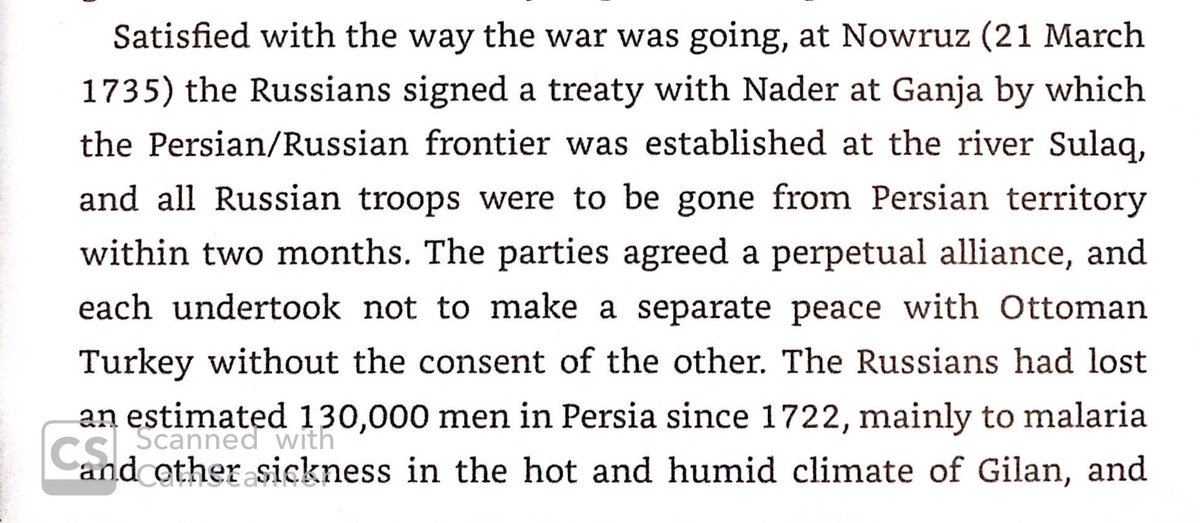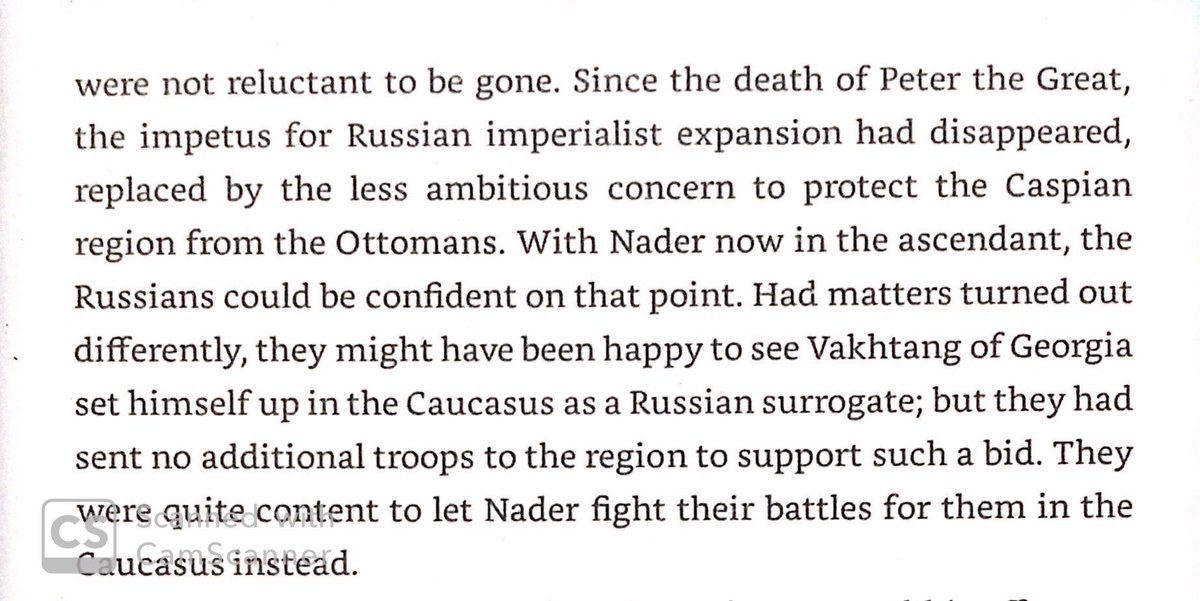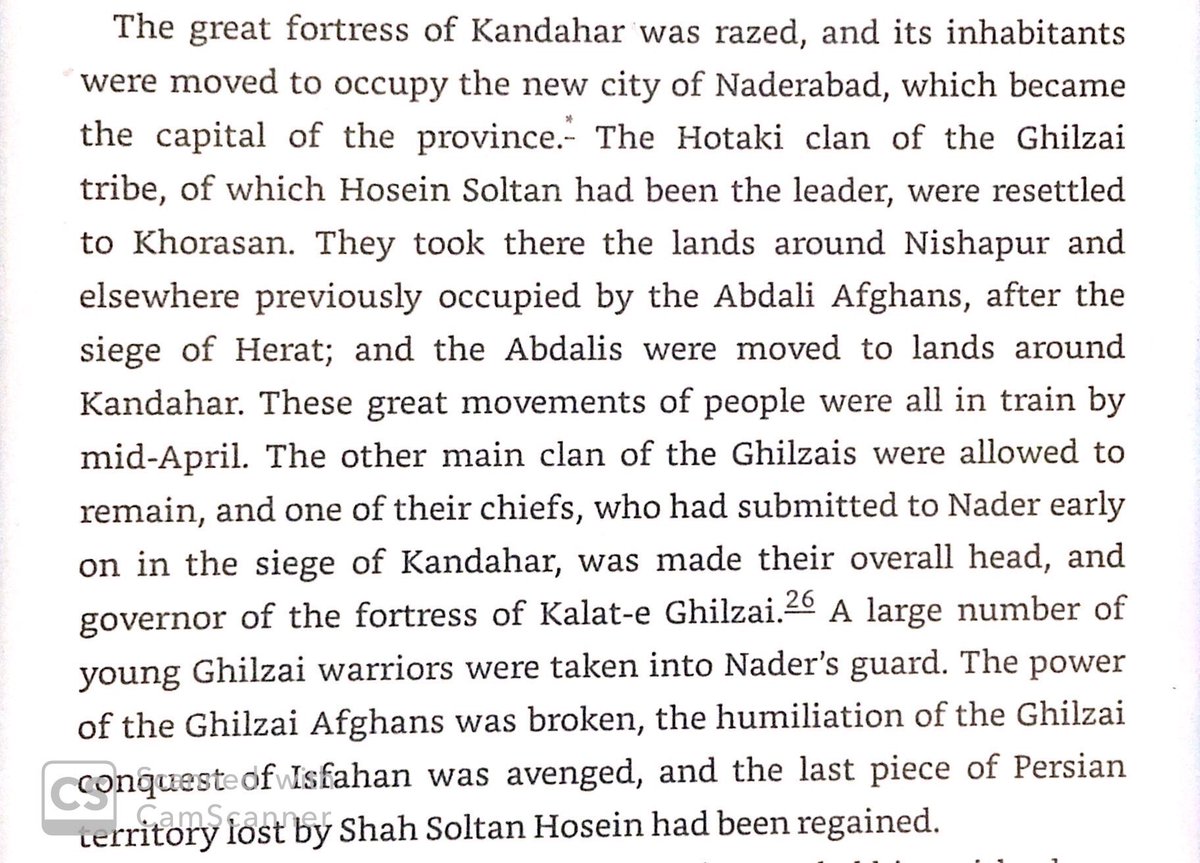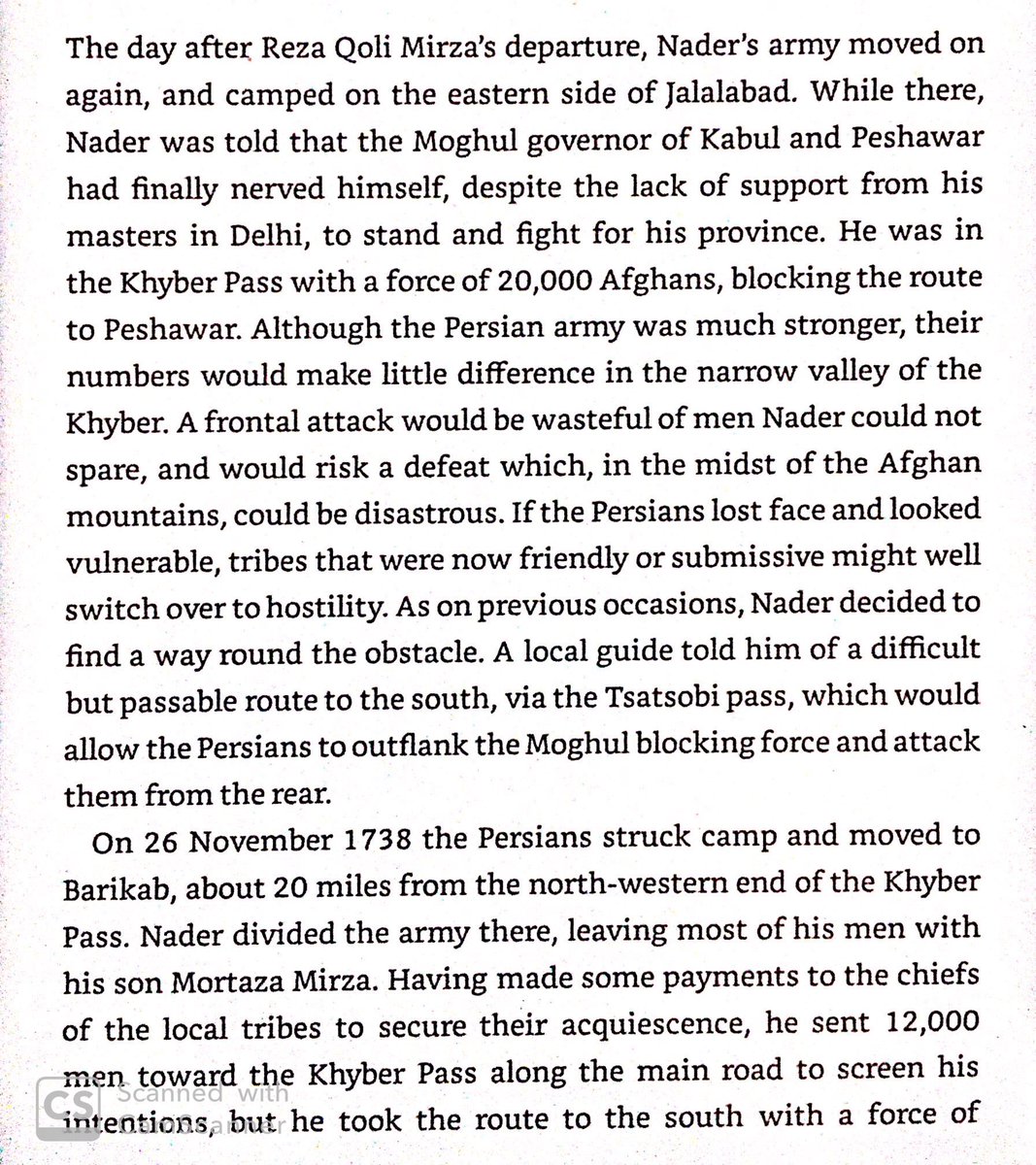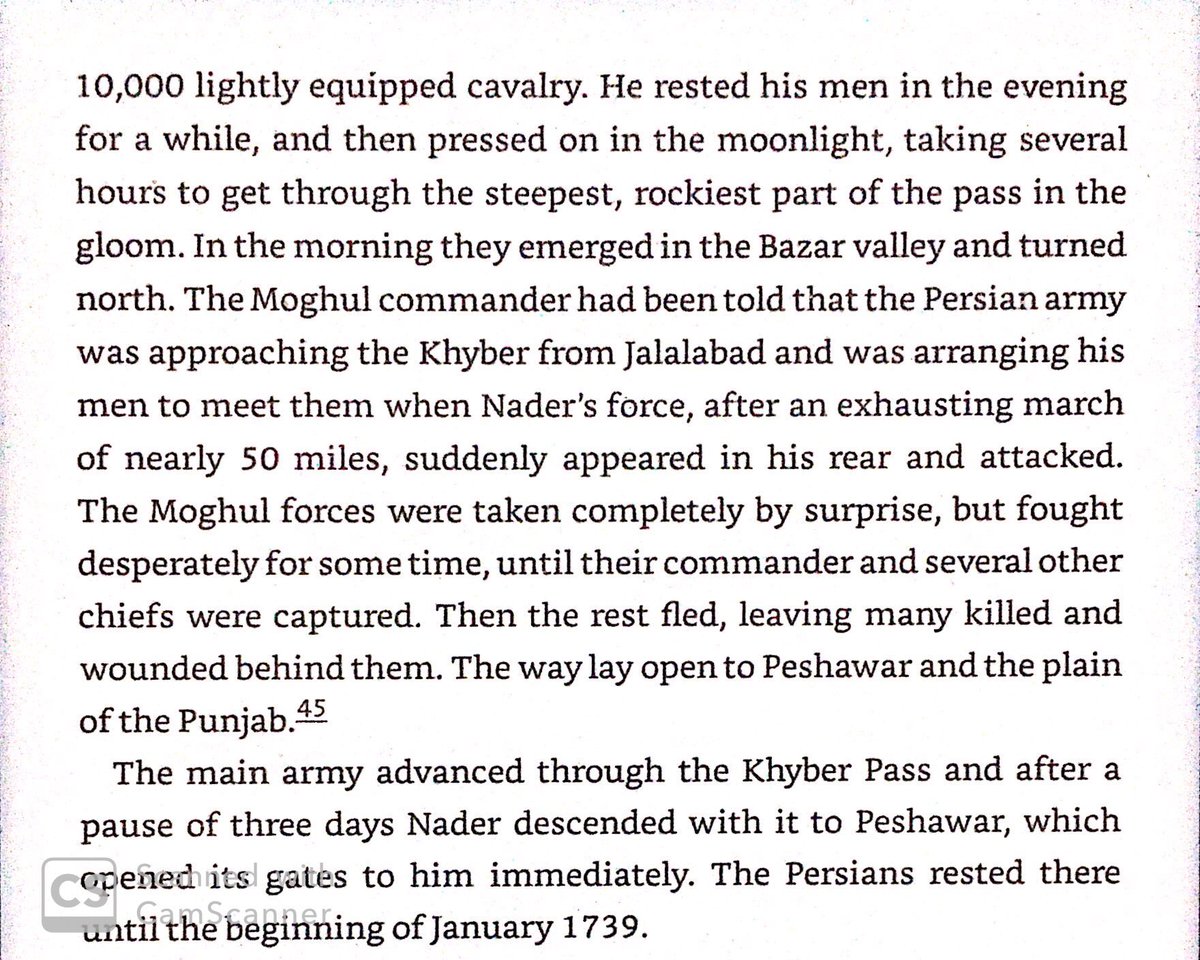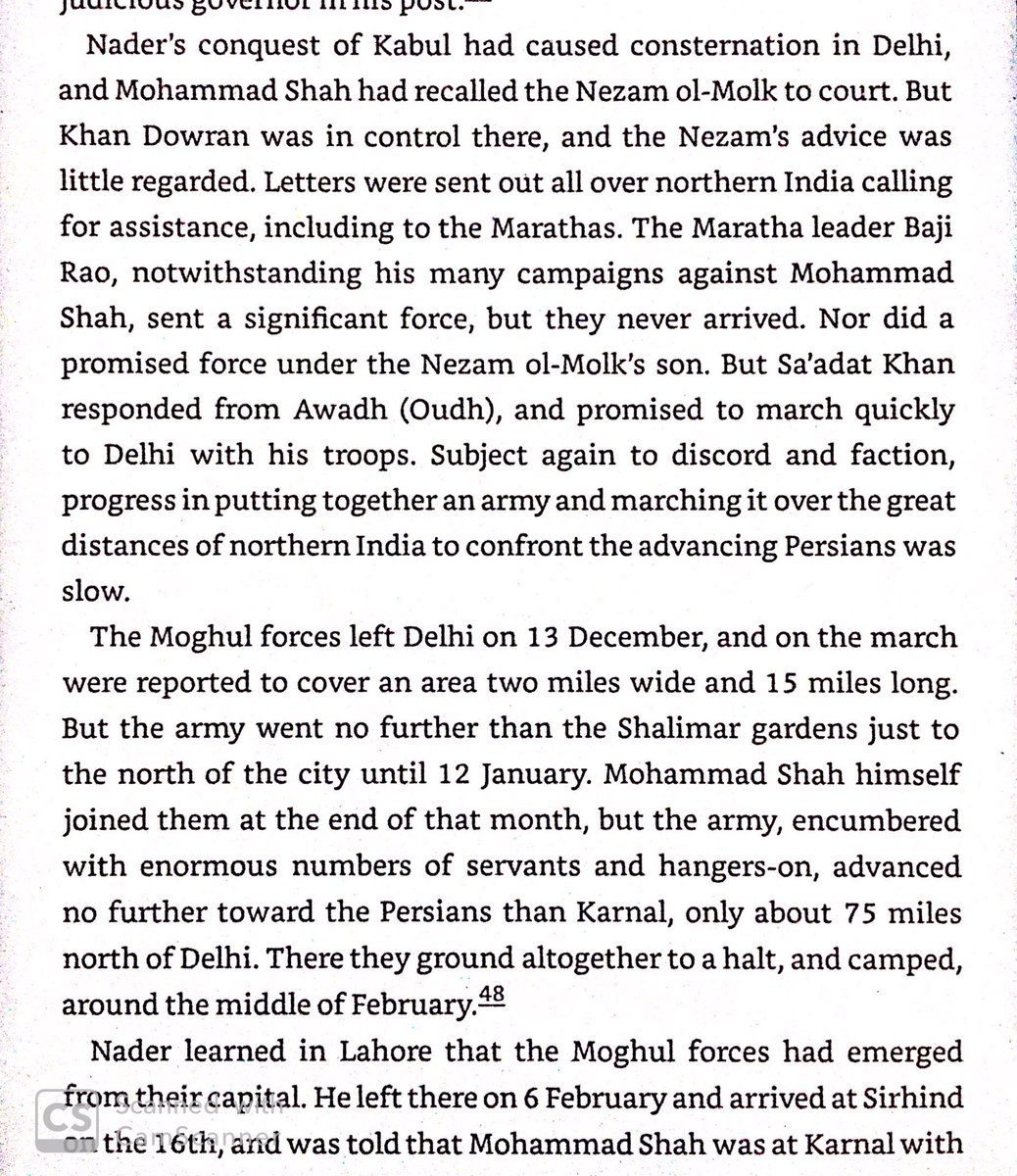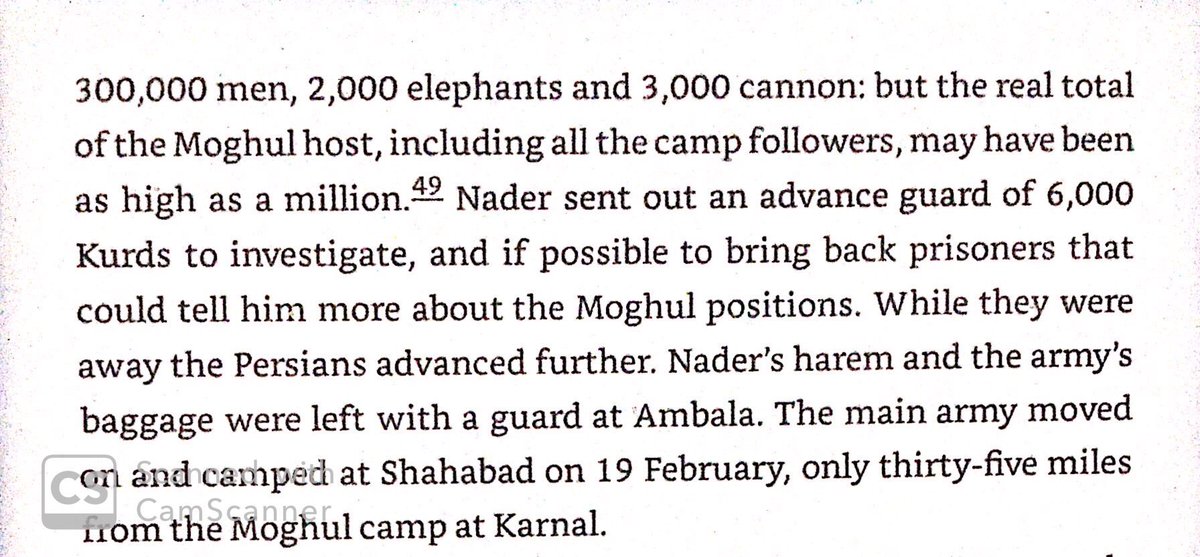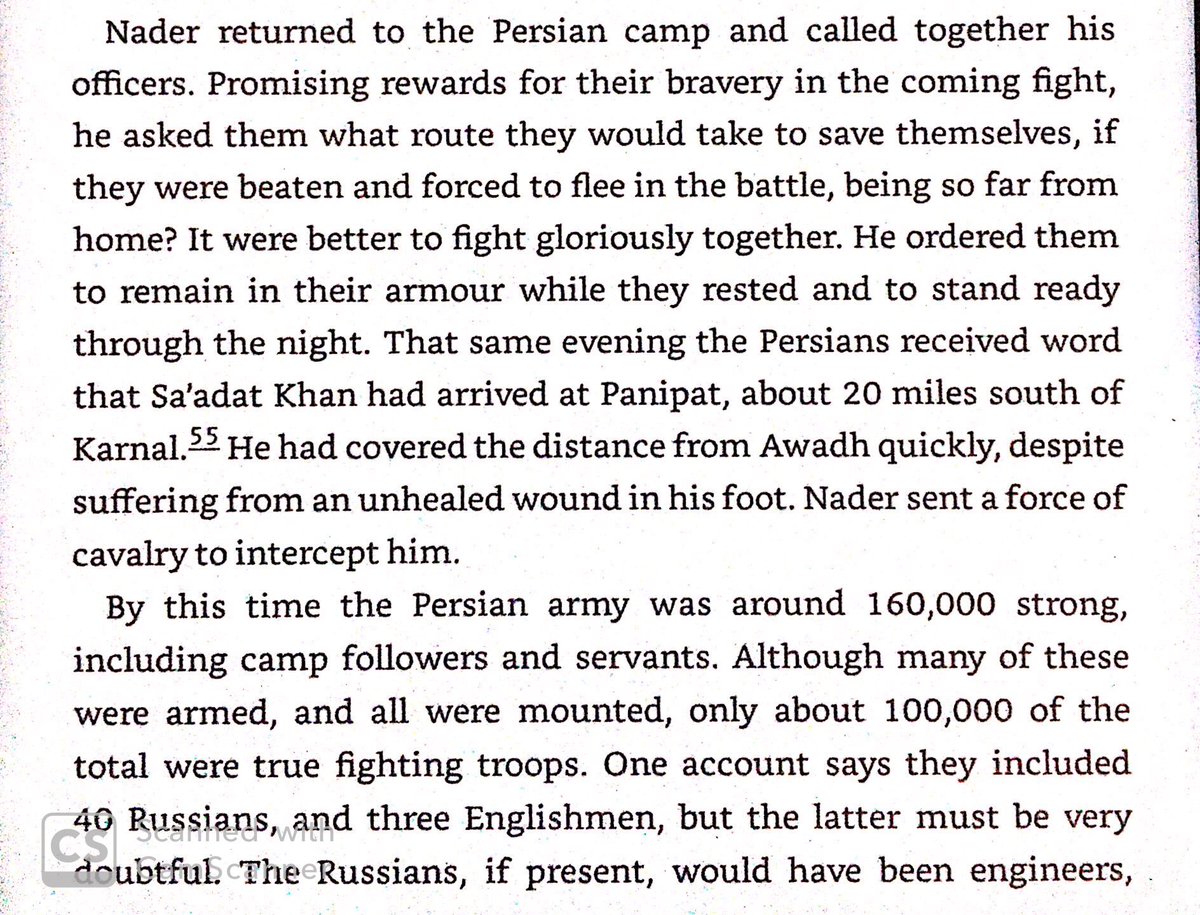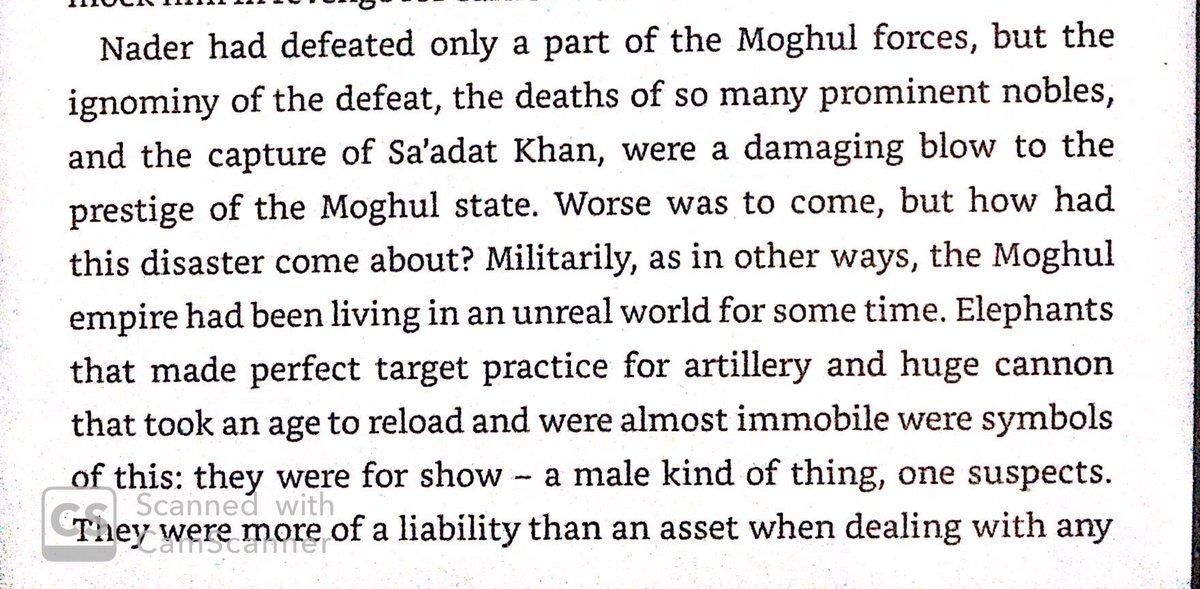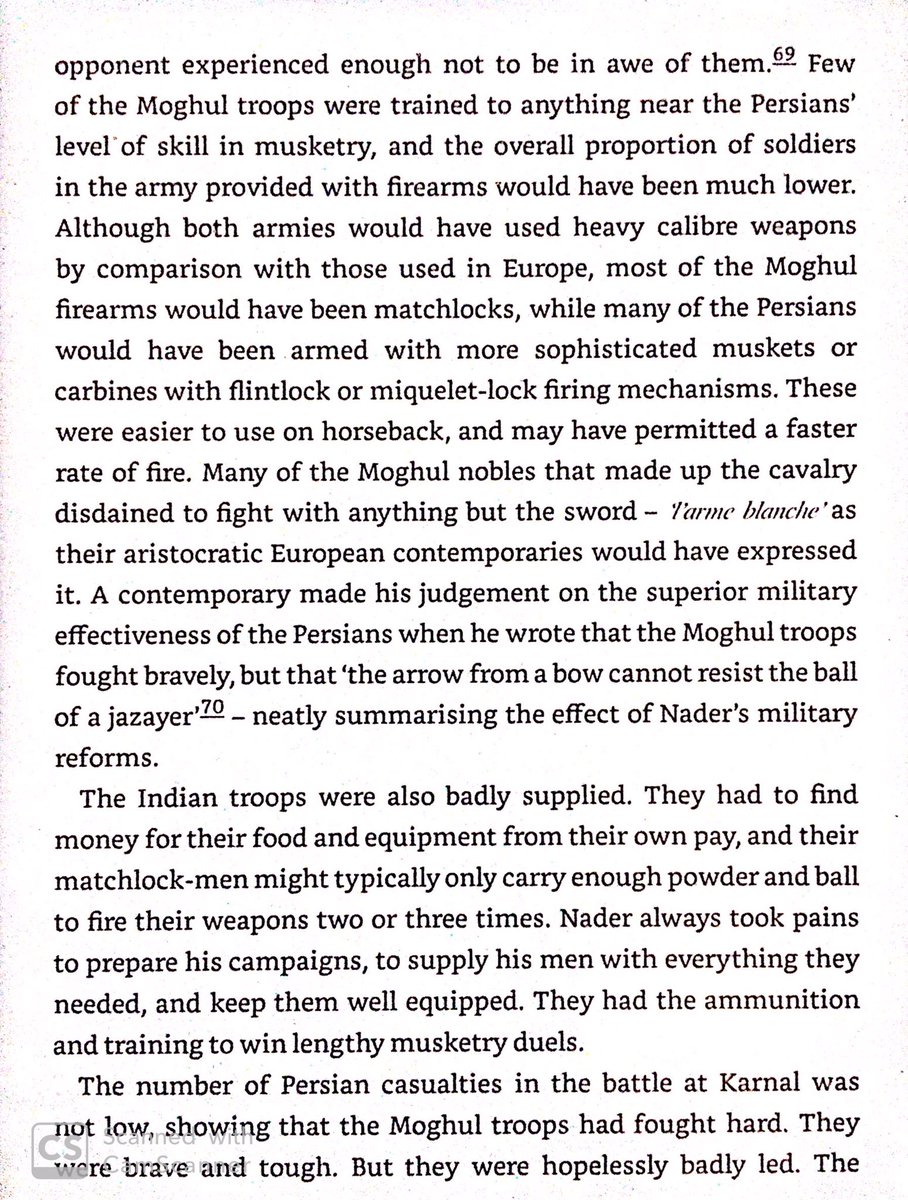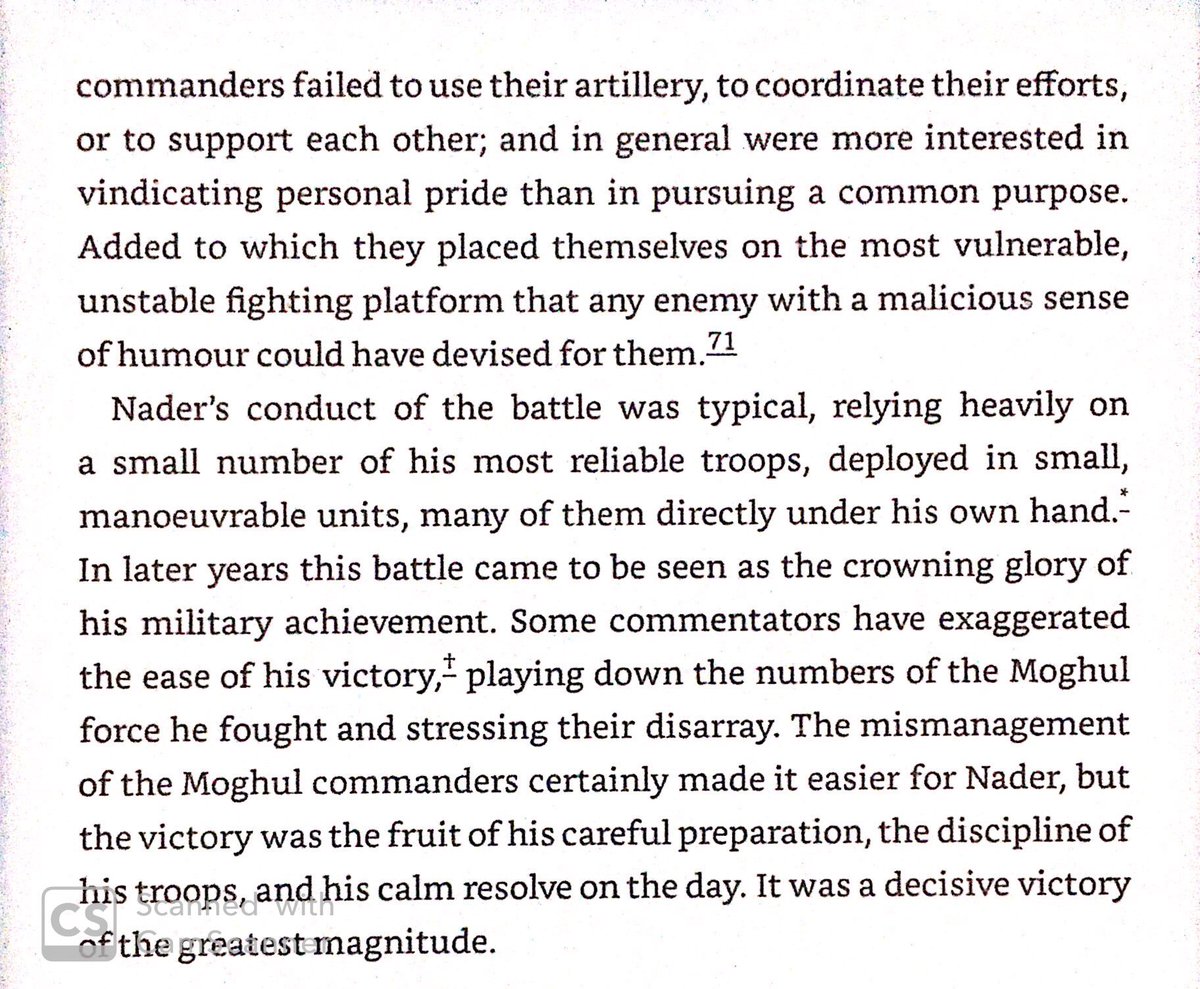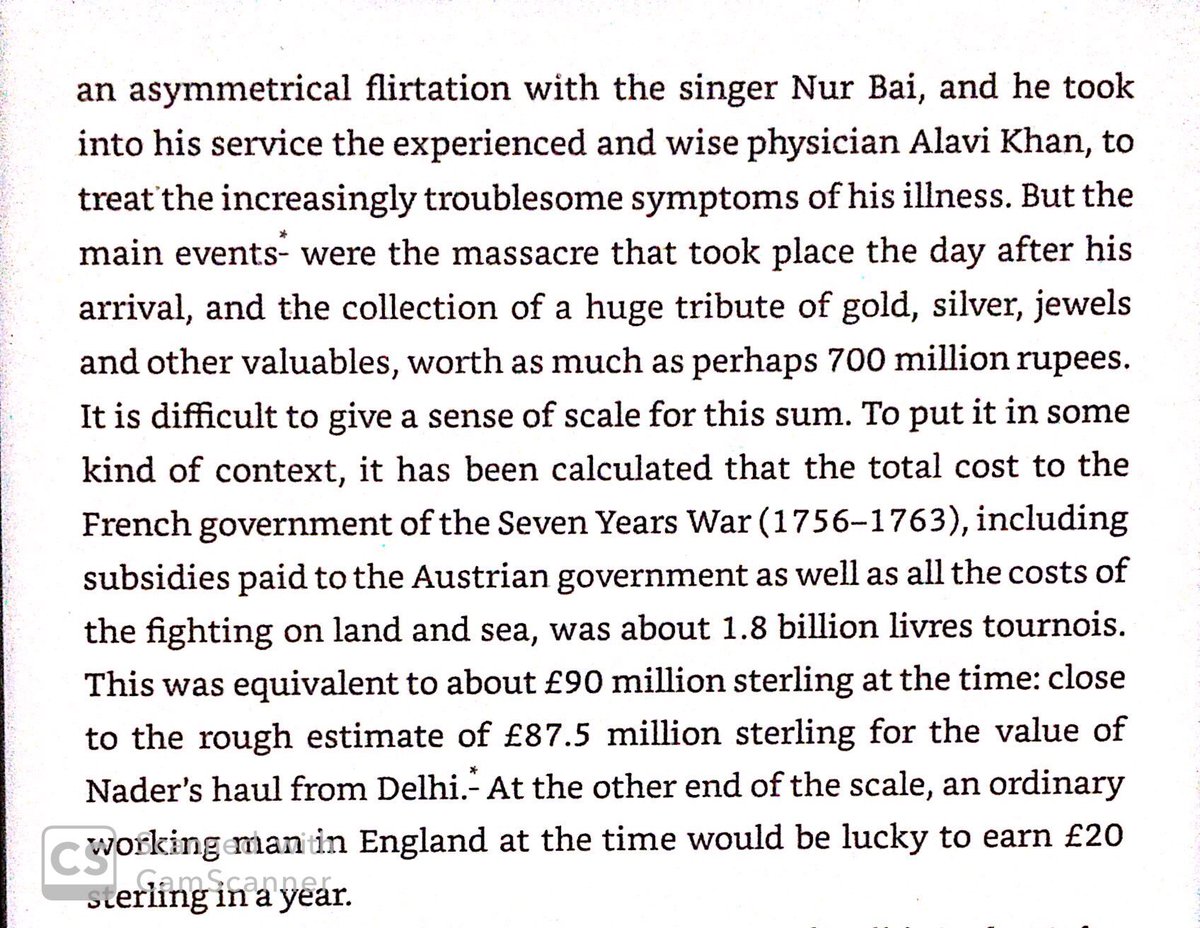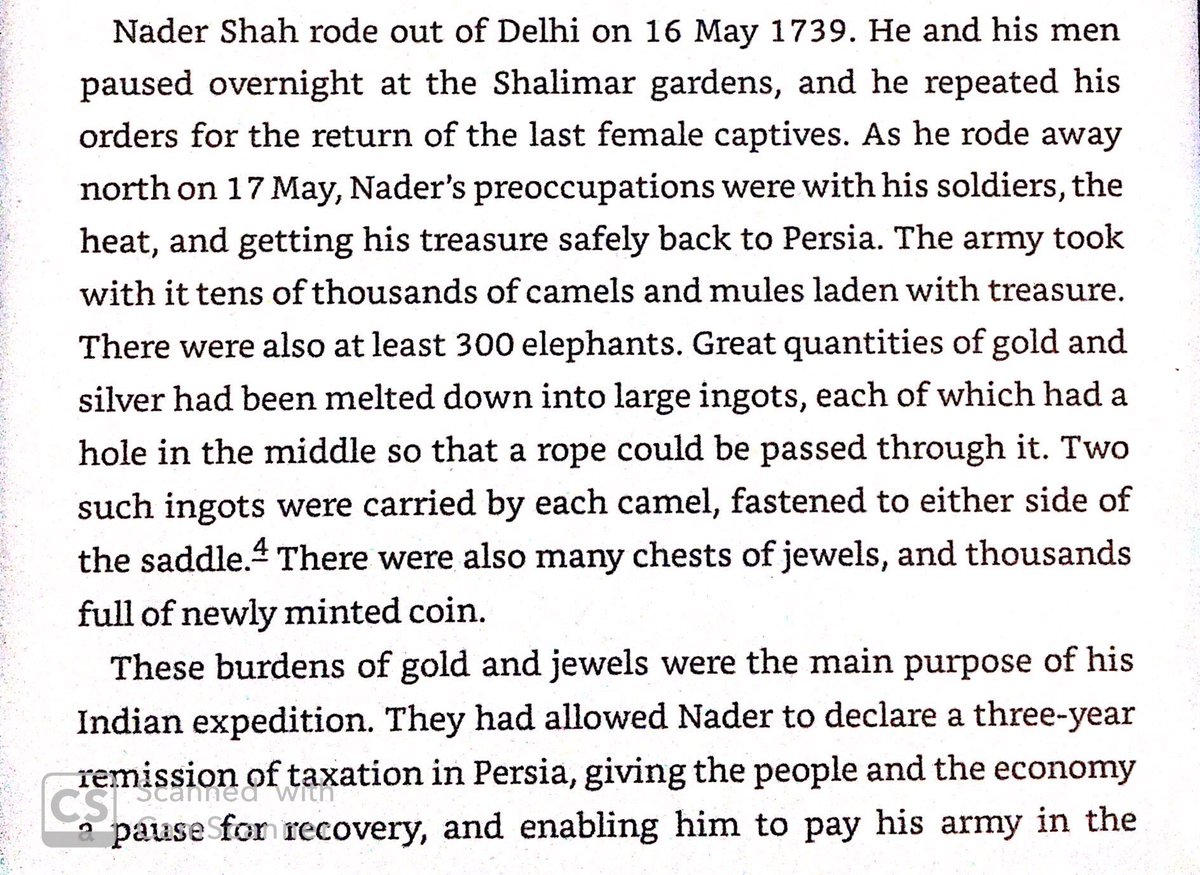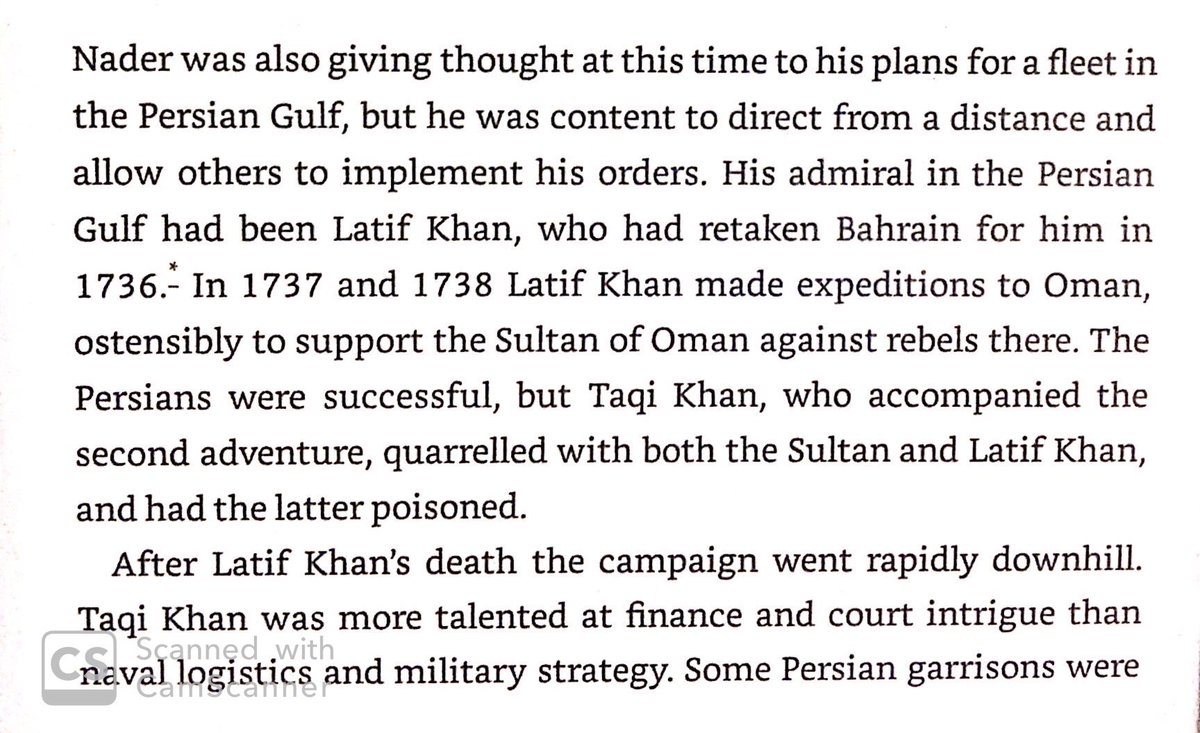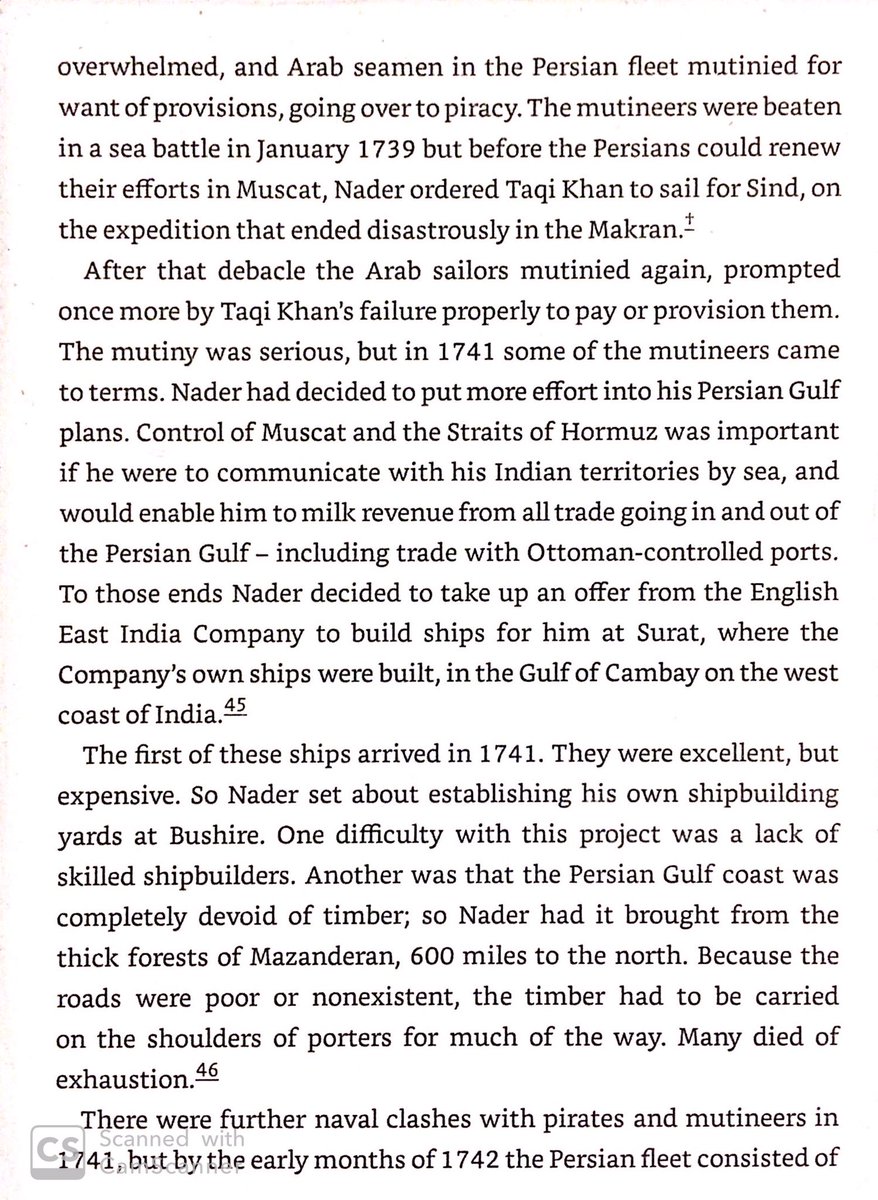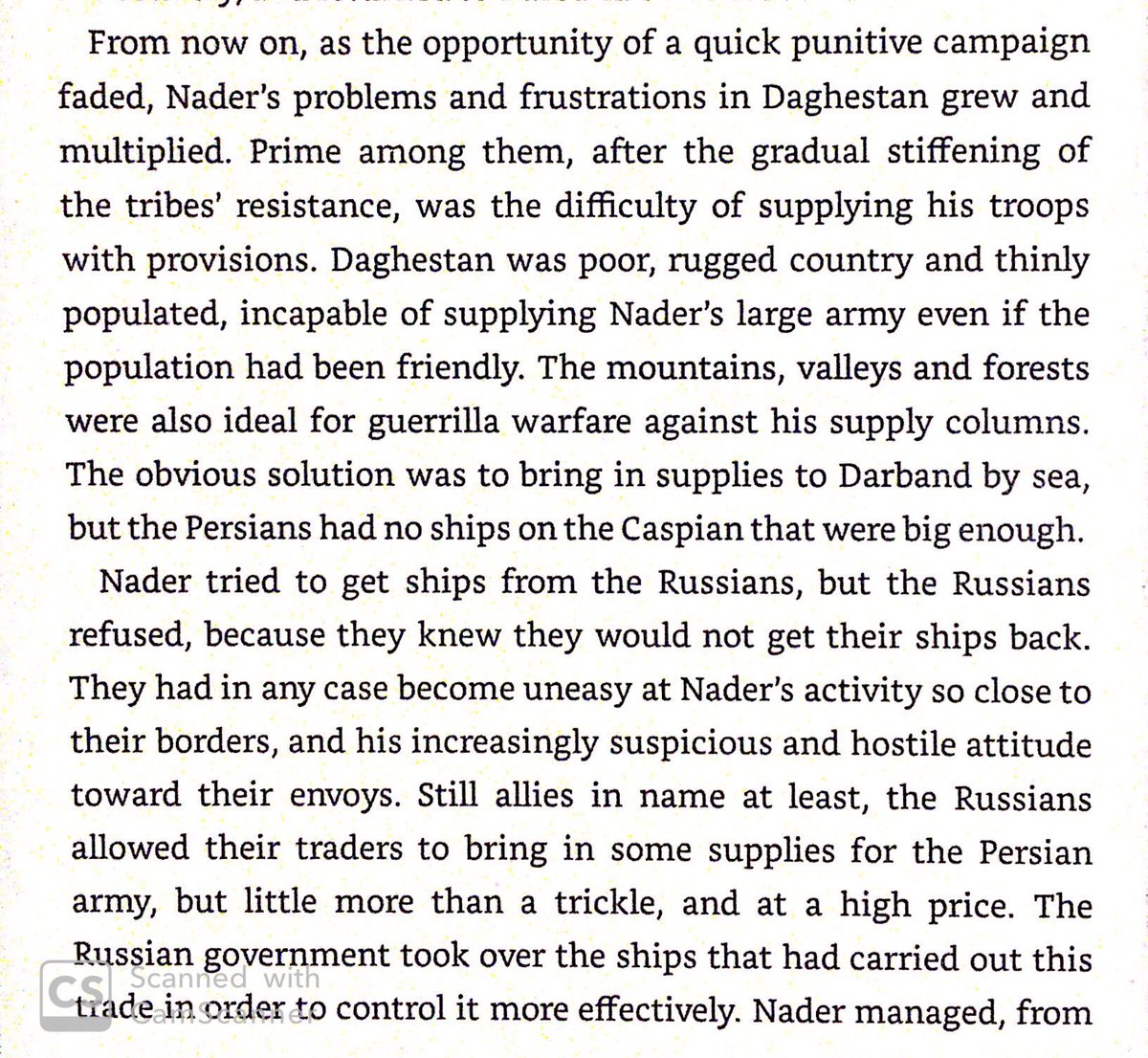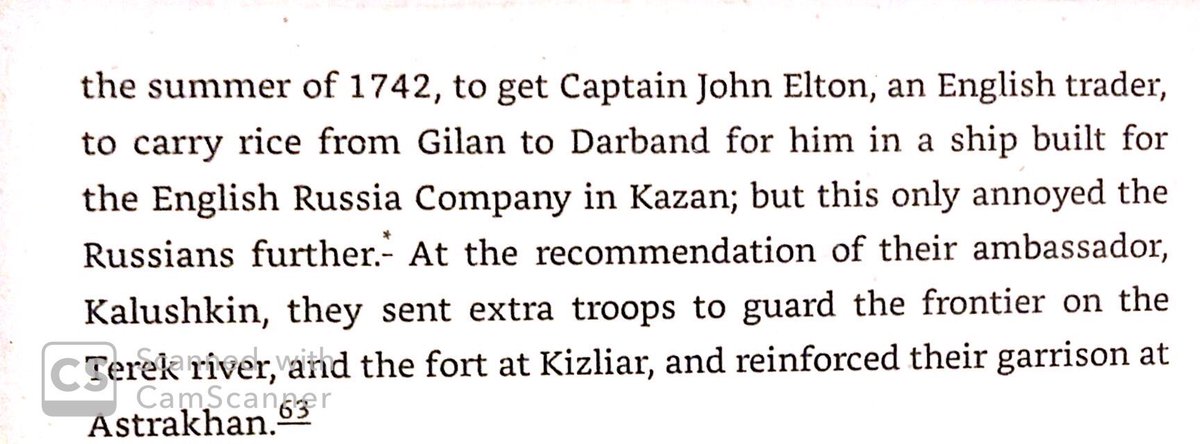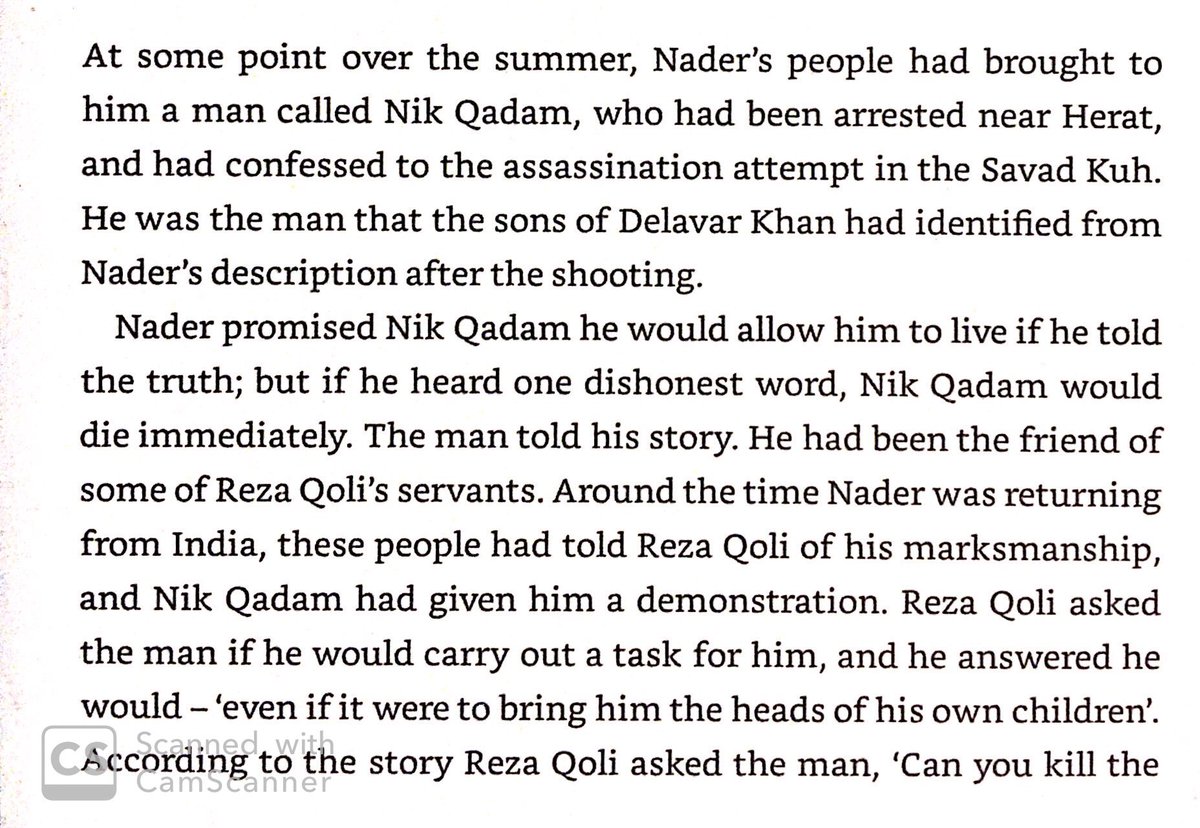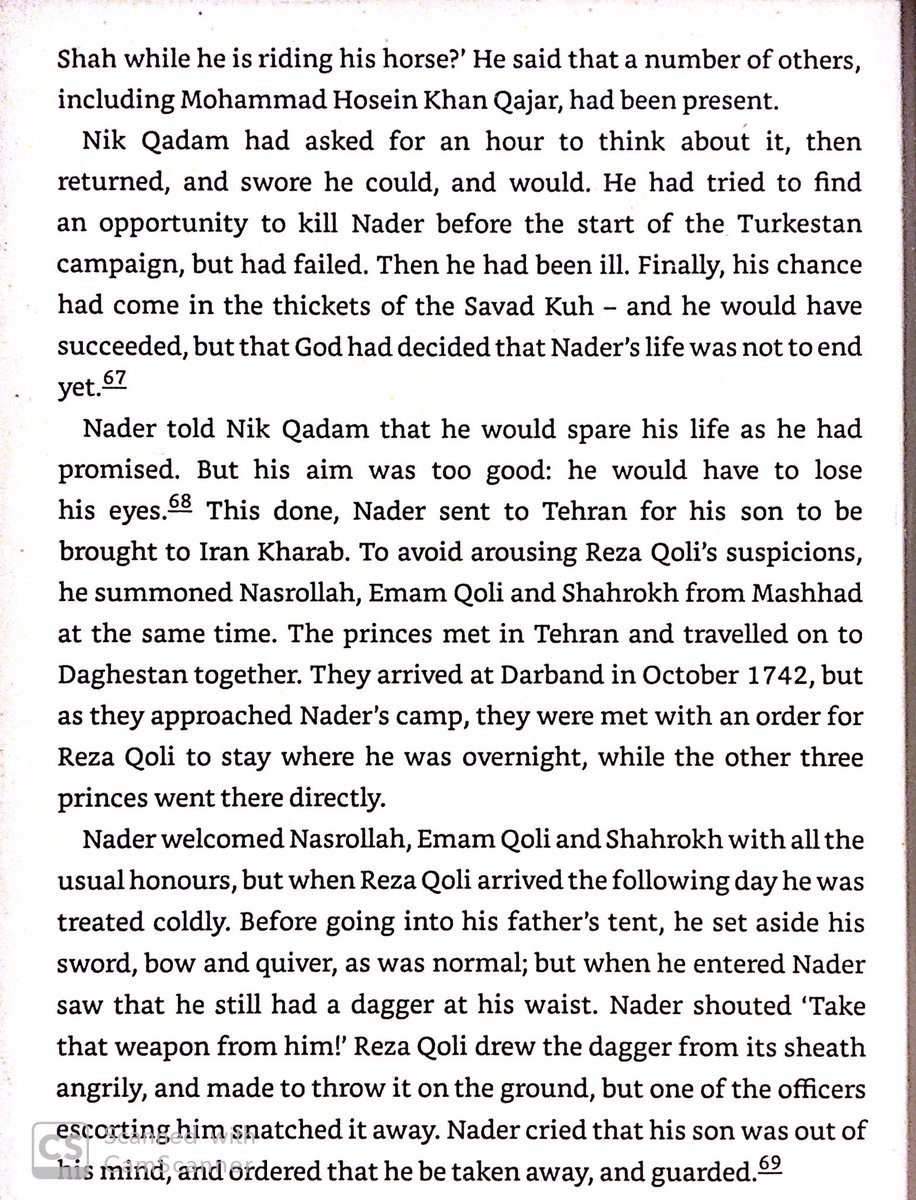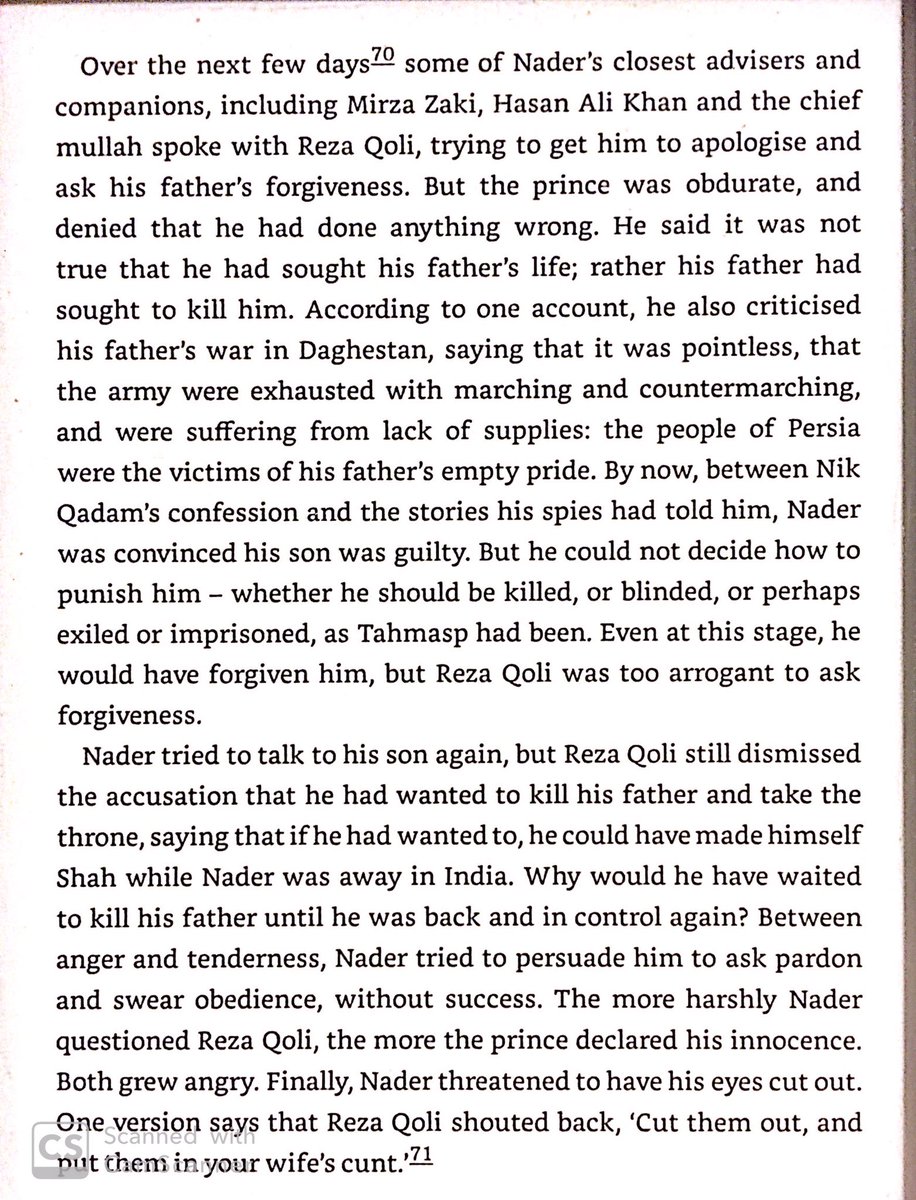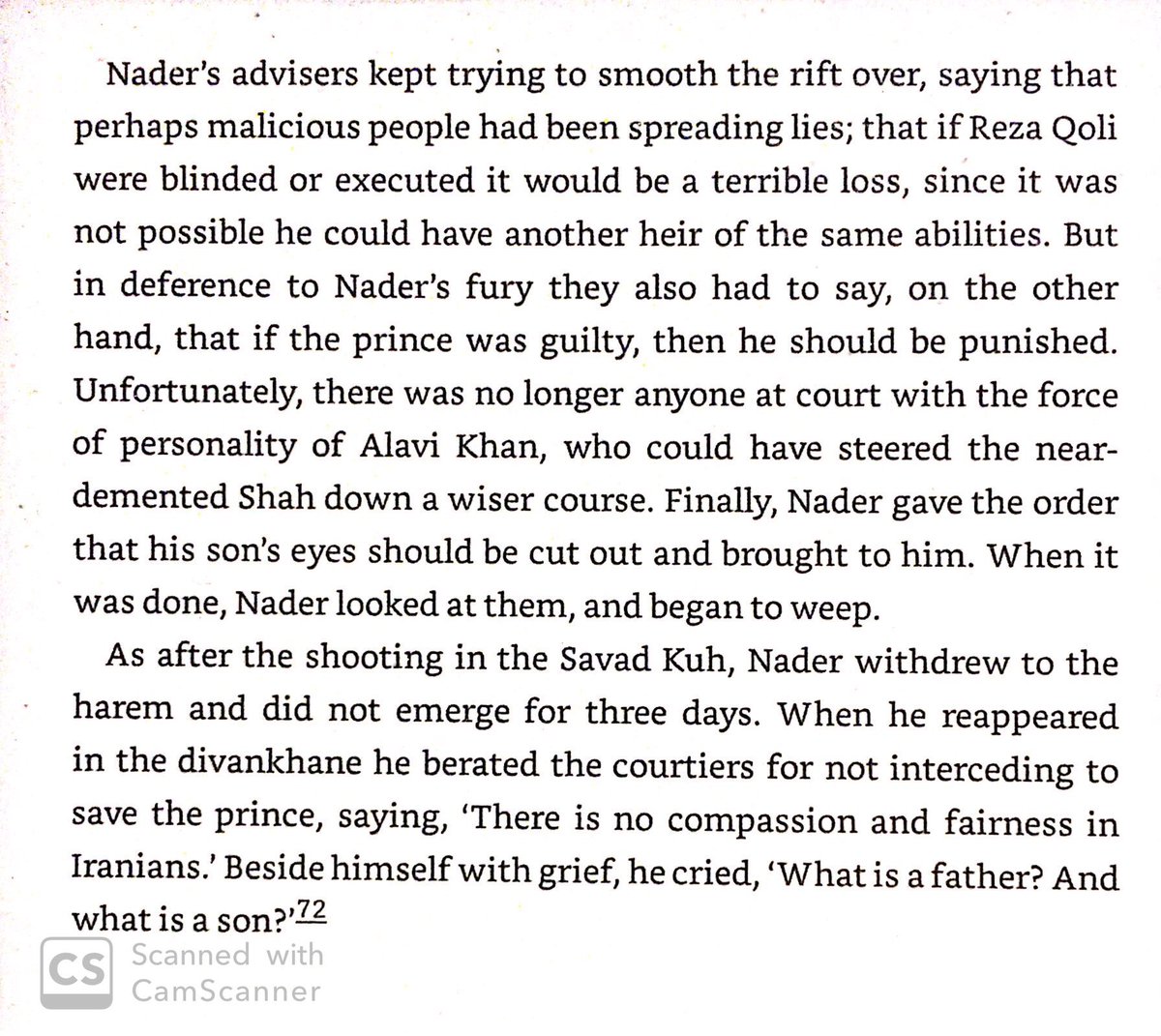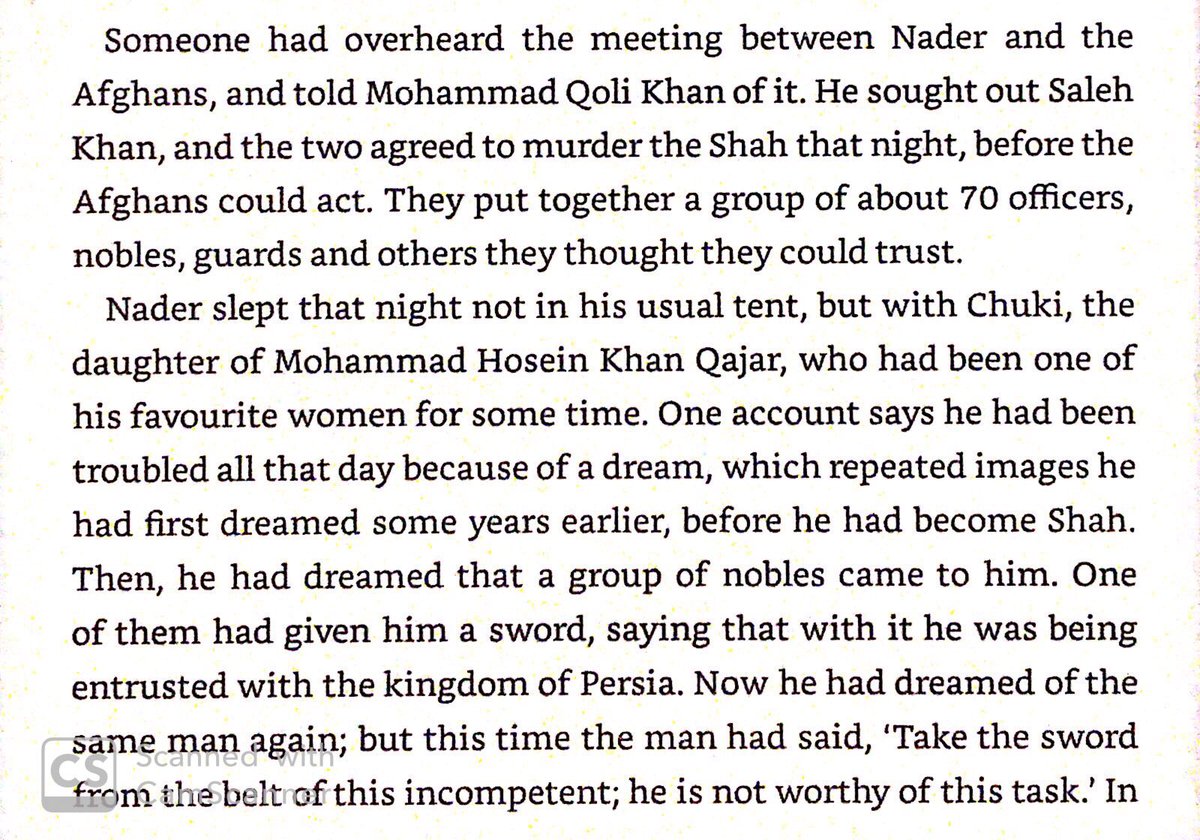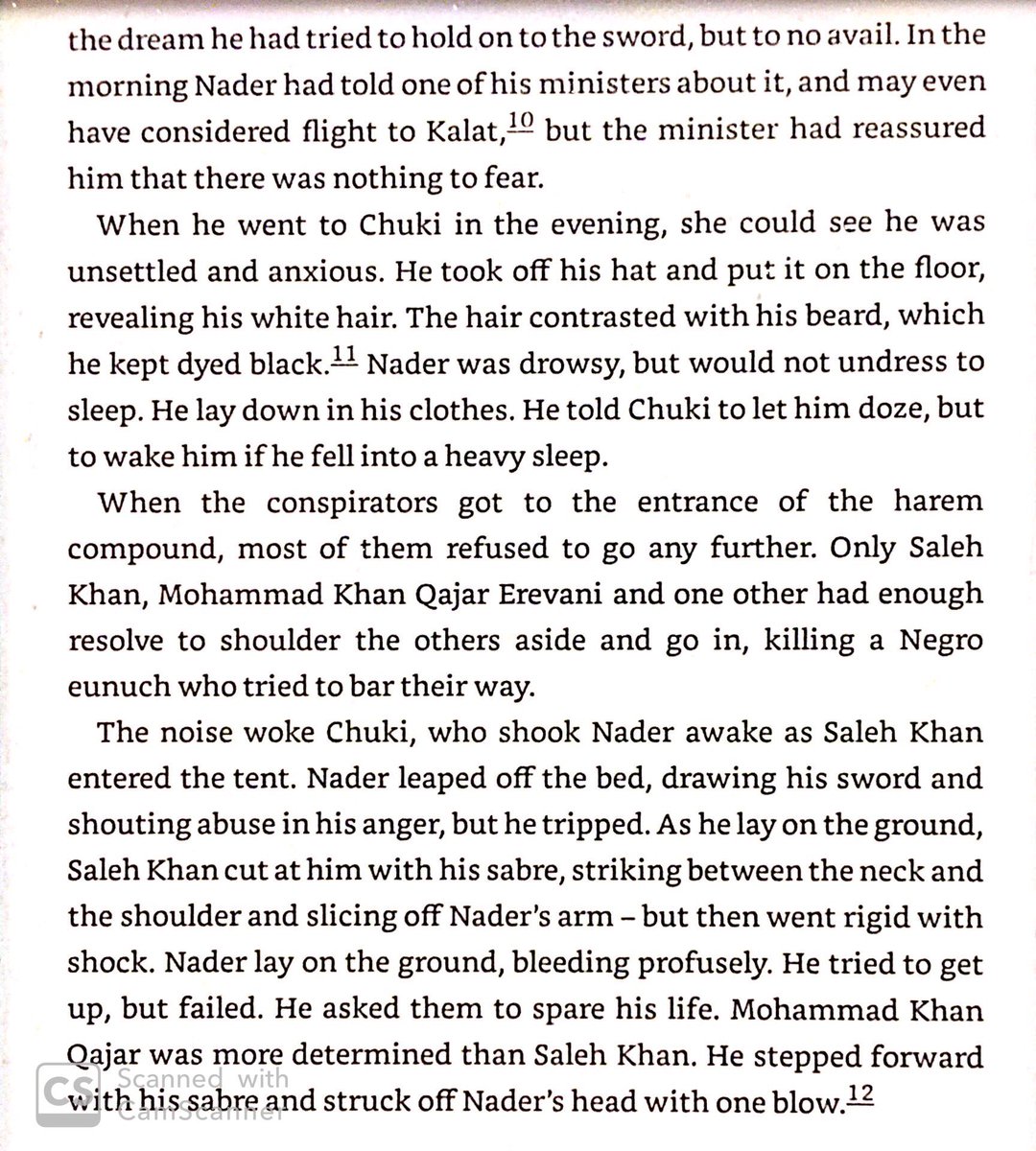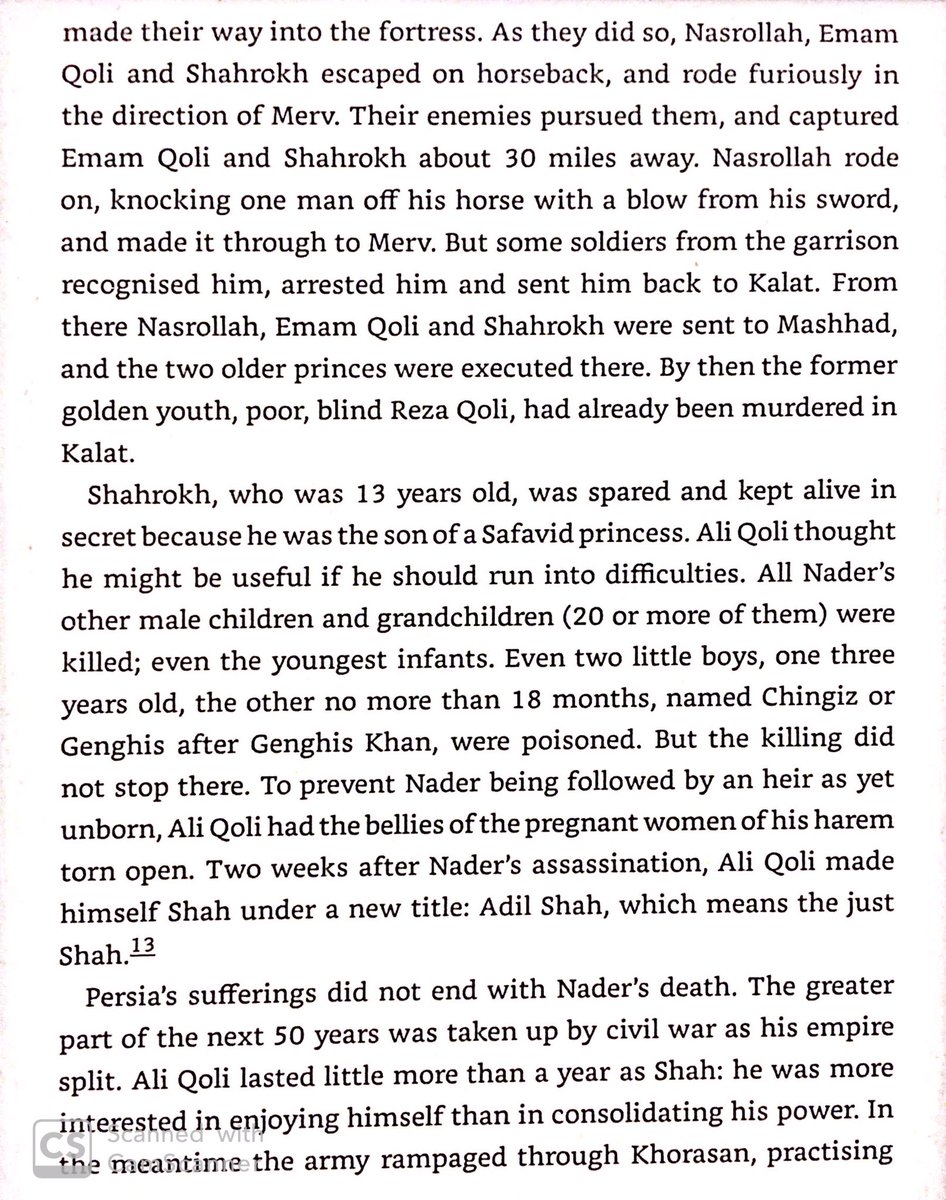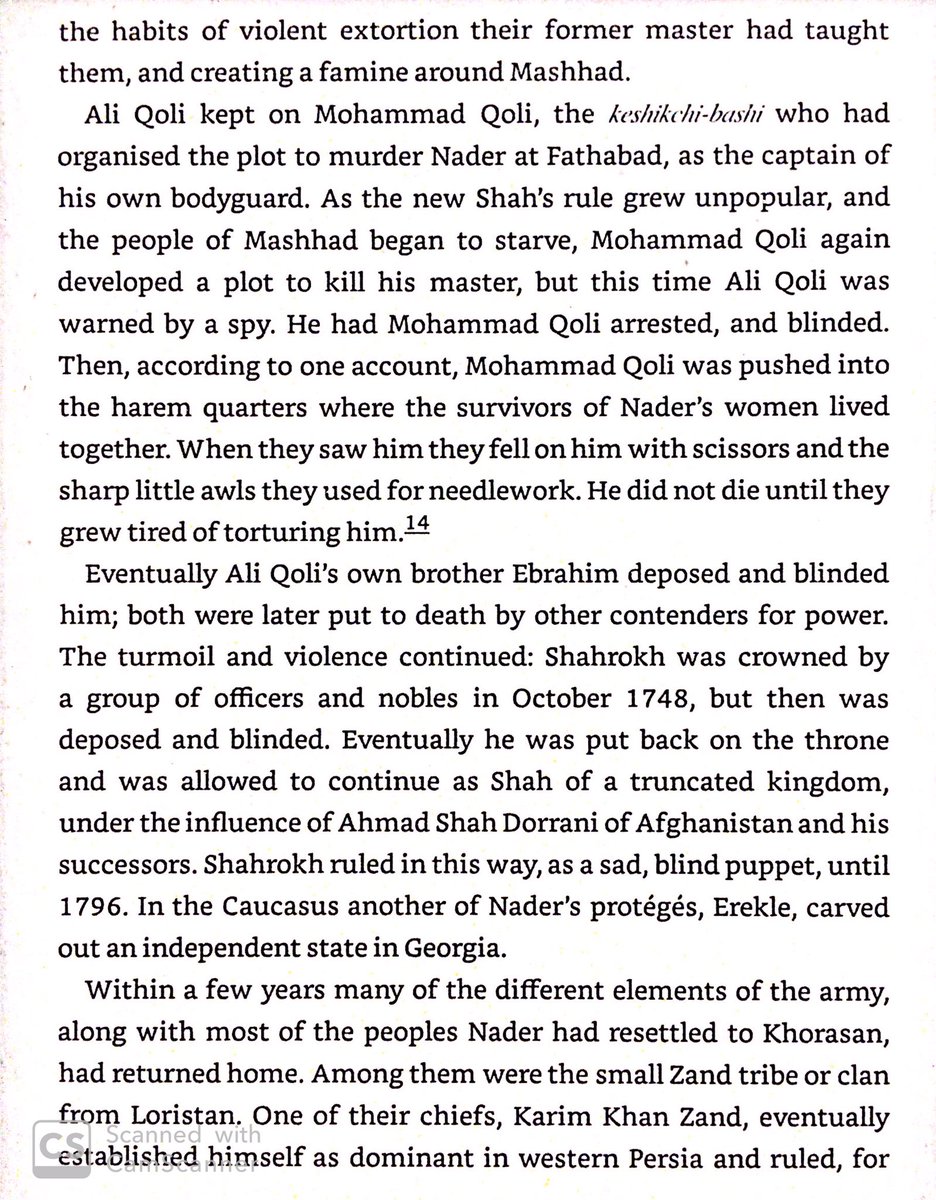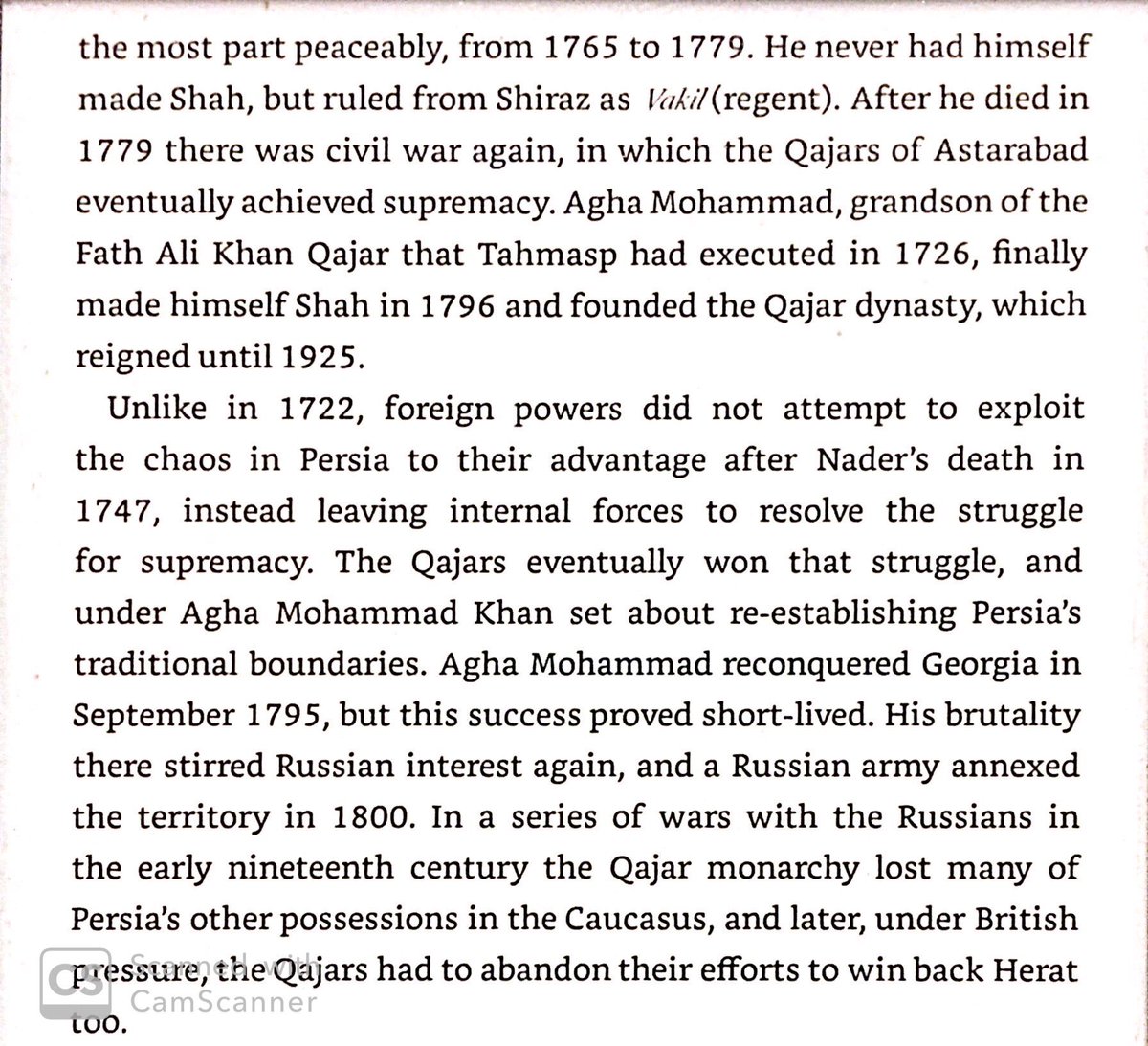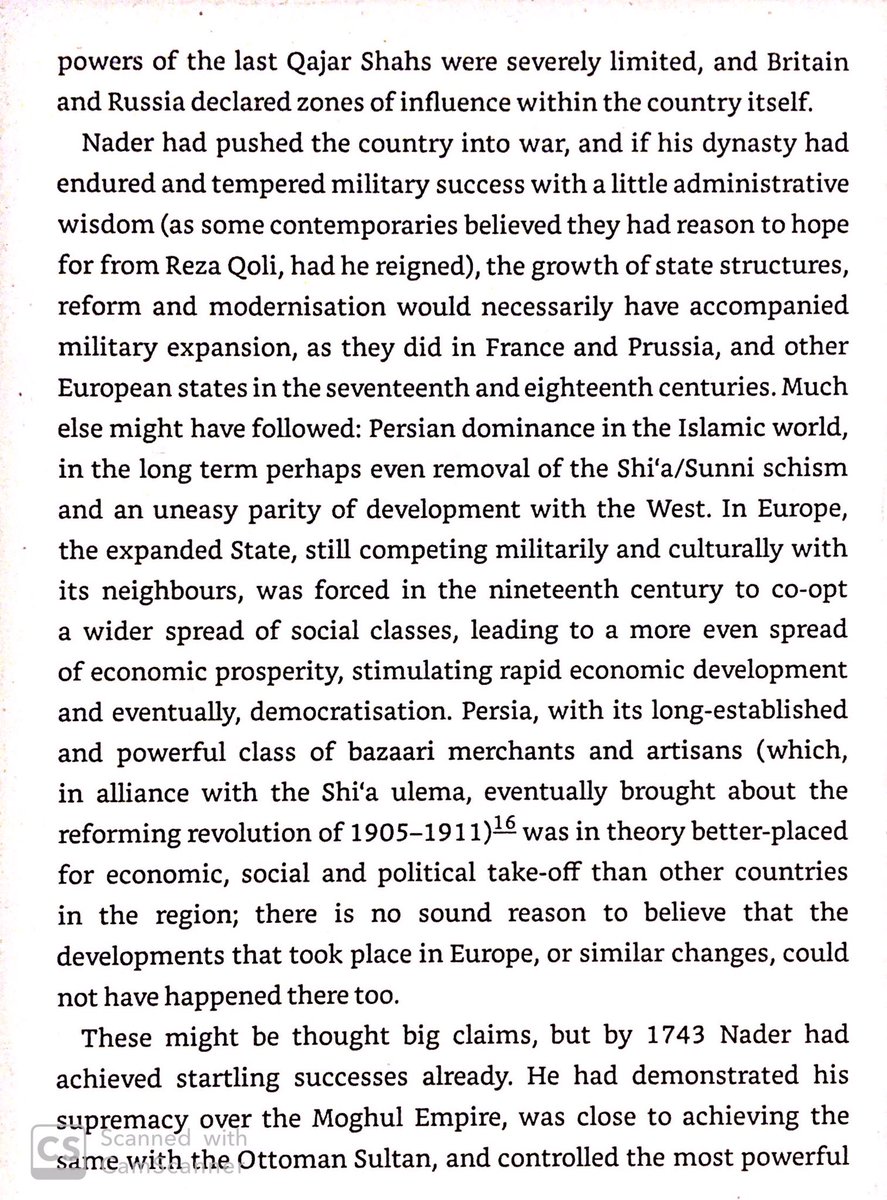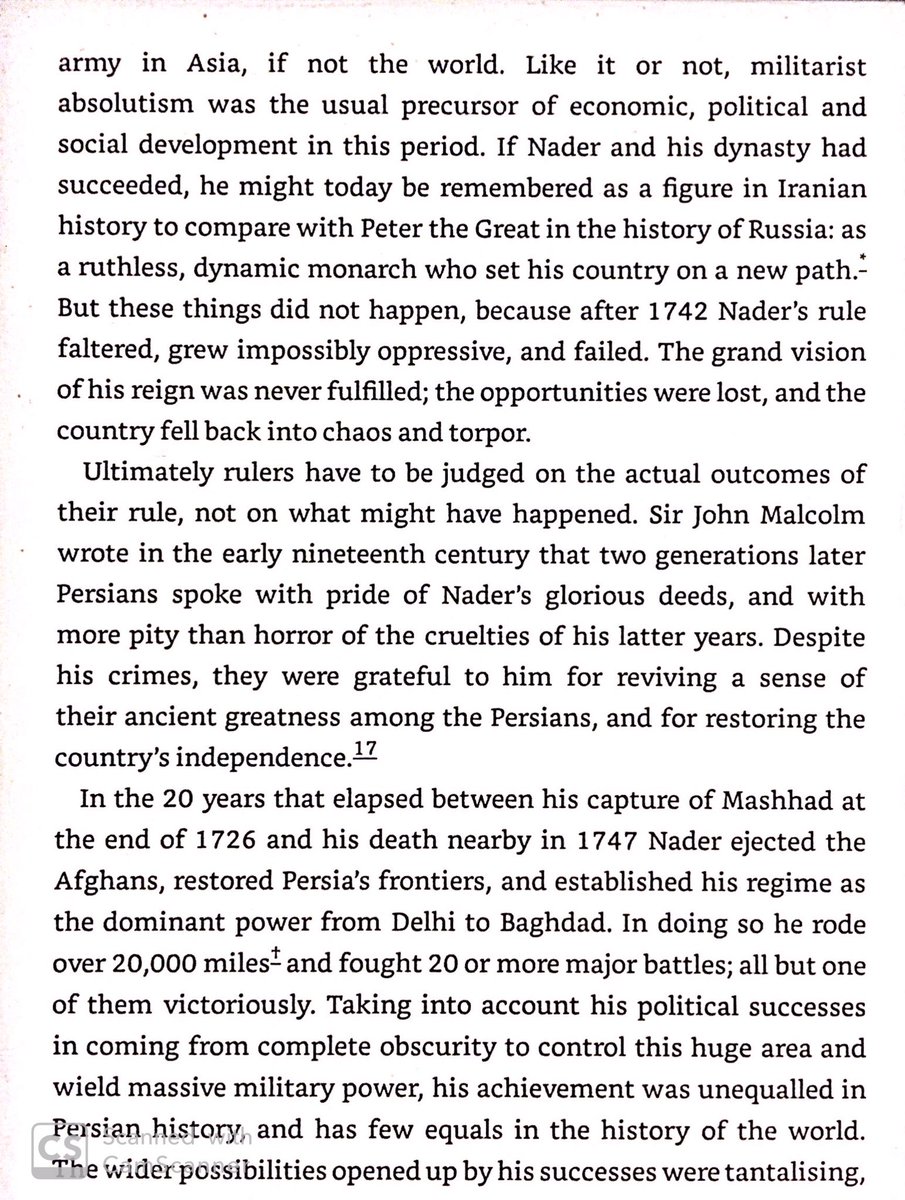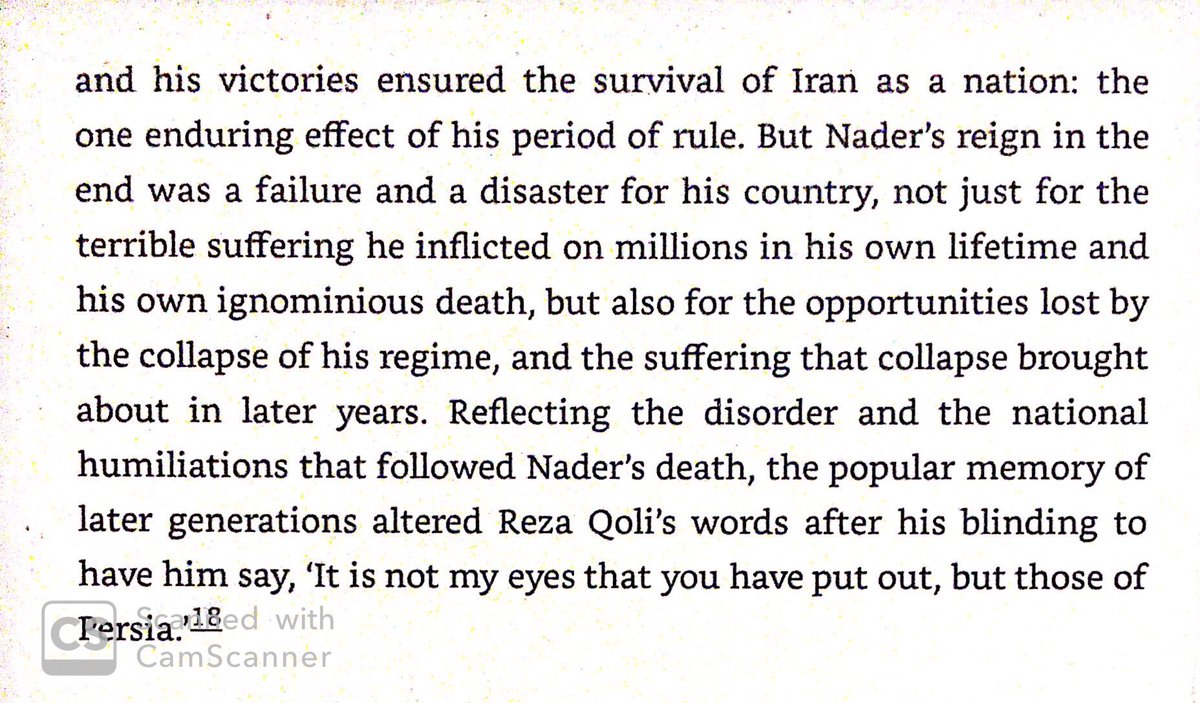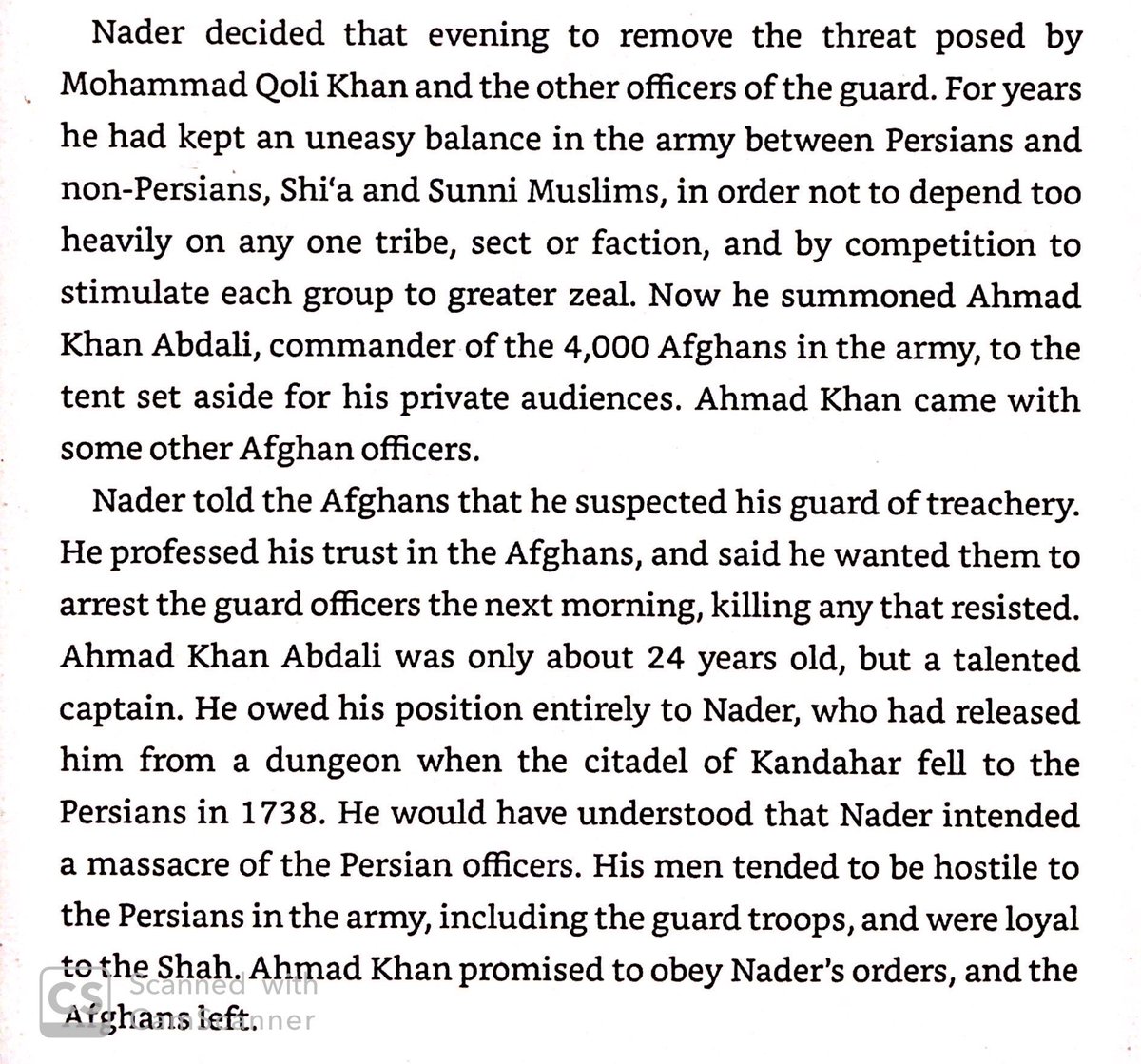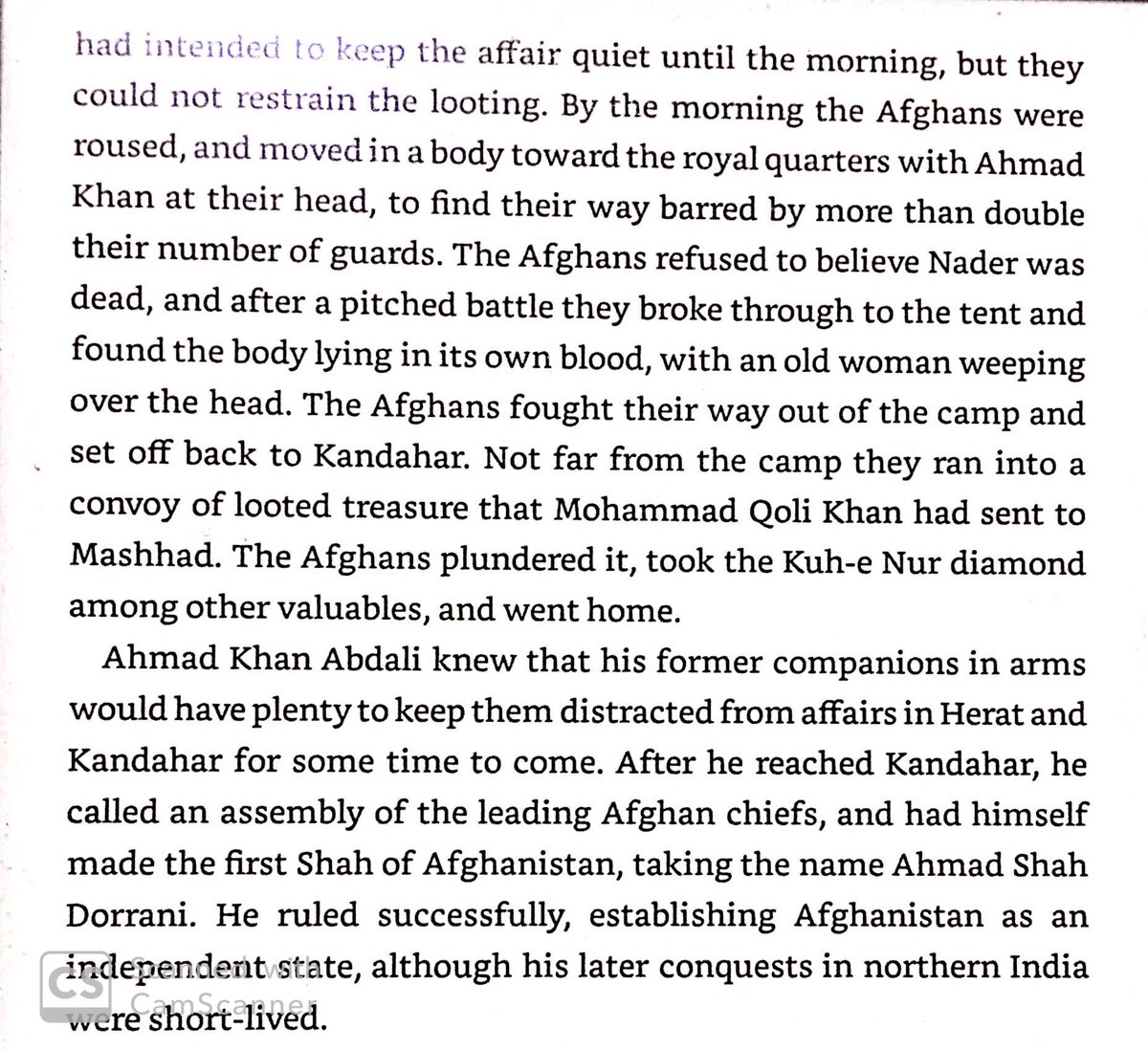Thread with excerpts from Michael Axworthy’s “The Sword of Persia Nader Shah, from Tribal Warrior to Conquering Tyrant”
The author’s view on the historical importance of Nader Shah: he kept Persia united, and exposed the weakness of the Moghuls.
This could be exaggerated - the Marathas had already eaten away much of the Moghuls strength.
Nader Shah was born in Khorasan in NE Iran to a semi-nomadic Turkmen family. Nomads made up a third of Iranian population at the time, & were considerably more warlike than the settled peoples.
Discussion of Ib Khaldun’s asabiya/decadence theory & how it applies to Nader’s predecessors, the Safavids. Safavids started as fanatical Shia warbands in late 1400s & were corrupted by harem life & dynastic intrigues by the early 1700s.
Economic decline in early 18th century Iran driven by weak government, Armenian control of trade, & Bengali competition in the silk trade.
Safavids suffered from serious urban unrest by 1710. Lezgin, Baluchi, & Afghan tribesmen raided Iran. Naturally, central authority declined & local leaders asserted themselves.
By 1720, the situation had worsened. Azeris & Kurds in the west rebelled - embittered by religious persecution
Seeing Iran vulnerable, the Afghans invaded. In 1722, they defeated the Safavids at Golnabad, in part due to their small cailbre camel artillery. Heavier artillery was impractical in the region due to a lack of roads & mountainous terrain.
After the battled, Afghans besieged the Safavid Shah in Isfahan. Seeing the state collapse, the Georgians requested Russian intervention. Nader was still in Khorasan (NE Iran), & took control of a frontier army.
After the Afghans took Isfahan, Persia fragmented. Nader gradually built his forces, killing those that betrayed him but accepting those who had him but swore loyalty.
Russians & Turks made a power grab in the chaos. Russians gained a little territory in Dagestan, while Turks took Azerbaijan, Georgia, Armenia, & western Iran.
The son of the previous Safavid Shah, Tahmasp, was trying to reestablish his dynasty. He found Nader as a valuable general & intriguerer against his other general. Nader was able to gain many more soldiers with Tahmasp’s legitimacy, & the ability to defeat his rival in Khorasan.
Nader revived the fortunes of the Safavids in their restoration campaigns, & they believed he would be loyal.
Disputes on war strategy in 1728 led to Shah Tahmasp trying to eliminate Nader. Nader prevailed, & kept Tahmasp as a puppet thereafter.
Nader invaded Afghanistan and defeated one of the main tribes. Rather than conquer them, Nader instead accepted their submission & added them to his growing army.
Nader’s innovations in warfare allowed to win great victories. However, the enormous expense of equipping, financing, training, & supplying his armies required government reform & economic development.
A third of Iran’s population died in the chaotic times of the 1710s & 1720s. Afghan occupiers of Isfahan created a caste system with themselves at top, various ethnic minorities in the middle, & Persians at the bottom. Predictably, this made Afghans hated.
After liberating the Persian capitol Isfahan from the Afghans, the restored Safavid Shah Tahmasp gave Nader personal rule of most of East Iran. Nader restored good administration, with a quality tax collection service.
Fresh from his defeat of the Afghans, Nader drove the Turks out of occupied areas of Iran in less than a year.
Nader resettled many unruly tribes in Khorasan, weakening separatists in other parts of Iran & garrisoning the NE against raiders. Sunni tribesmen were useful as Nader’s loyal soldiers, lacking the dynastic loyalty to the Safavids of the Shia Persians.
Shah Tahmasp lost battles to the Turks while Nader was in the East. Tahmasp agreed to an okay peace, which was unpopular & didn’t free POWs. Nader siezed the chance, condemning the peace & Tahmasp as his chance for supreme power.
Within 2 years, Nader had avenged his defeat at Bagdad & restored Persia’s borders. In victory, he won enough support to make himself Shah, convert Iran to a 5th school of Sunni Islam, & found a new dynasty.
Nader’s religious policy was to allow Shia the ability to mostly practice their old faith, while banning its worst aspects & bringing the realm more into line with the reat of the Islamic world while still keeping some Persian distinctiveness.
Nader’s nomad mindset - fund the army through plunder & heavy urban taxation. By 1736 he’d plundered & taxed Persia dry, so he secularized Shia clerical properties for money. No doubt this partly drove his conversion to Sunni.
Russia lost 130k men occupying Persian territory in 1720s & 1730s, mostly to deny it to Turks. When Persia stepped back into the region, Russia was happy to hand it over.
Nader conquered Afghanistan, adding many Afghans to his army, & resettling them were they could be more easily controlled.
To invade India, Nader needed to cross the Khyber Pass. 20k Mughal troops blocked it, so Nader had a contingent of lightly armed men cross a difficult pass to the south in the dark. They defeated the Mughals, allowing the Persians to cross the mountains.
Author cites total Mughal troops at 300k & Persians at 100k. Numbers seem exaggerated, although the armies were undoubtedly enormous by the standards of the time.
Persian victory over Mughals due to better artillery & muskets, better logistics, & smaller more maneuverable units.
Nader sacked Delhi, plundering $9.8 billion in today’s money, a similar amount to total French war expenses in the 7 Years War. Tens of thousands of  were needed to bring the plunder to Iran.
were needed to bring the plunder to Iran.
 were needed to bring the plunder to Iran.
were needed to bring the plunder to Iran.
Disloyal sailors, expensive naval imports, & the difficulties of transporting useful woods to the Persian Gulf dockyards made Persian naval expeditions difficult.
Campaigning in Dagestan was difficult- very mountainous, guerilla warfare, & uncooperative Russians. Even by mid-18th century, Russian ships dominated Caspian Sea trade.
Suspecting his son’s involvement in an assassination attempt, Nader had his heir blinded. He was soon filled with regret.
Already in poor health & losing his mind, Nader went insane after blinding his heir, committing terrible cruelties. His grasp on the country weakened, as many chiefs & governors rebelled & tried to end his reign of terror.
Two of Nader’s lieutenants were warned of their impending purge. They gathered a group of men, stormed Nader’s tent & killed him.
Author argues that had Nader established a stable dynasty, state structures would have developed along modern lines. Iran would have met the west as an equal, not as the impoverished country divided into spheres of influence it became.
Good book, worthwhile reading. I’m personally skeptical about Nader or his dynasty’s ability to modernize Iran. Nomad & raiders cause issues that none of the European countries (besides Russia) had to deal with.
The early career of Ahmad Shah Durrani as a Persian soldier is mentioned in the book. No doubt he learned a lot from Nader & veterans of his wars.
Presumably the plunder he took from Nader’s tent after his death gave him a good start in recruitment.

 Read on Twitter
Read on Twitter